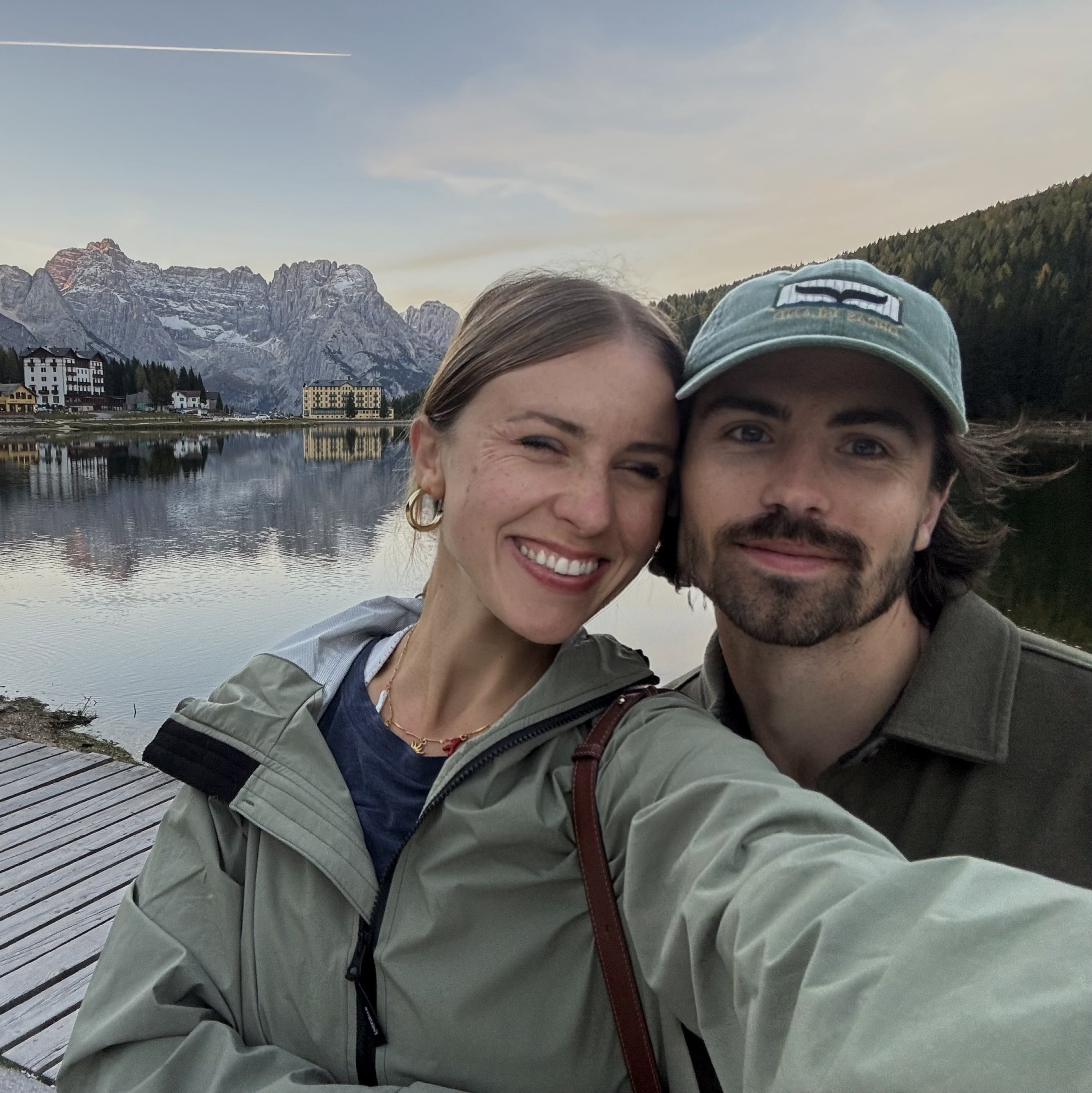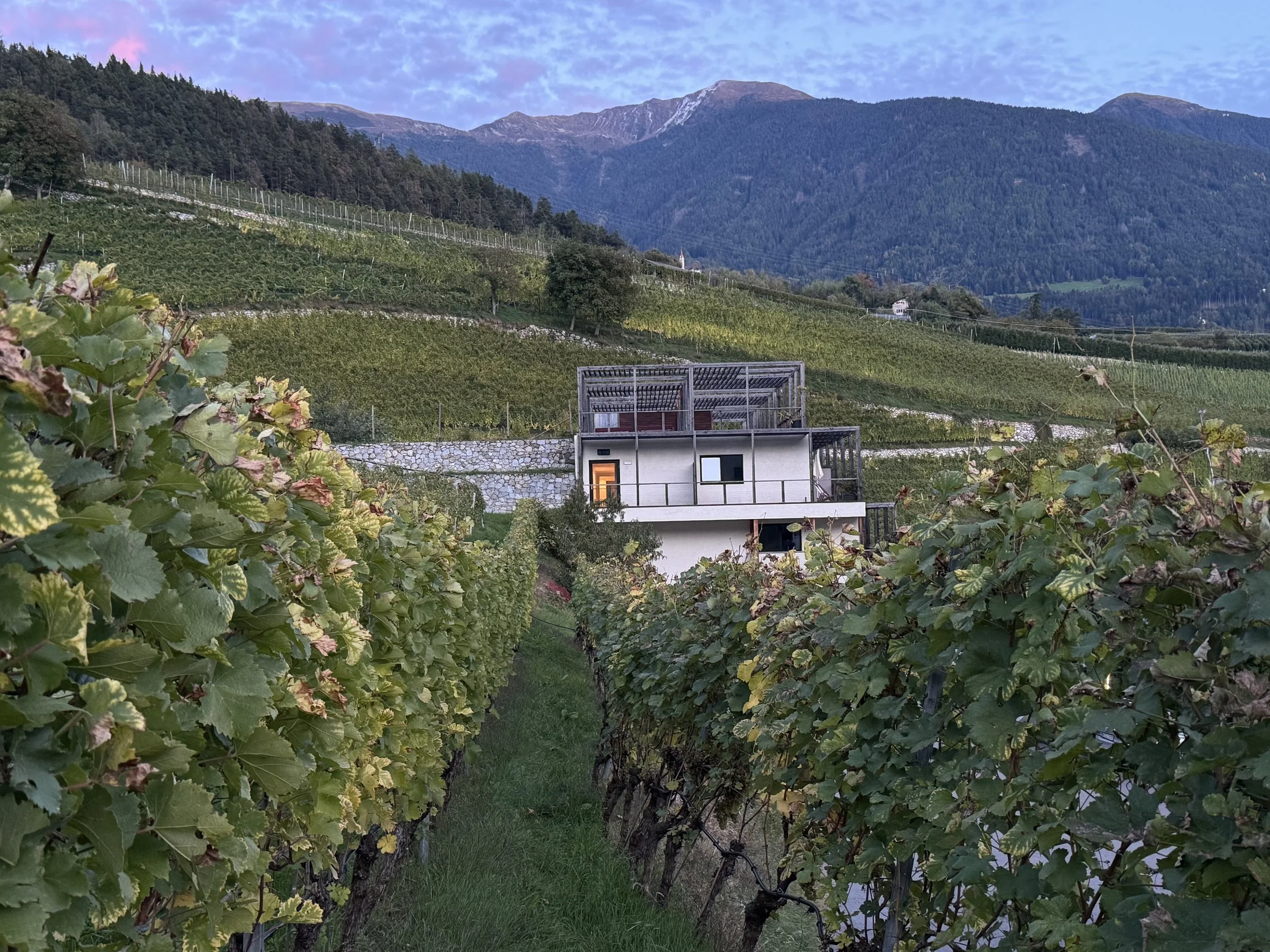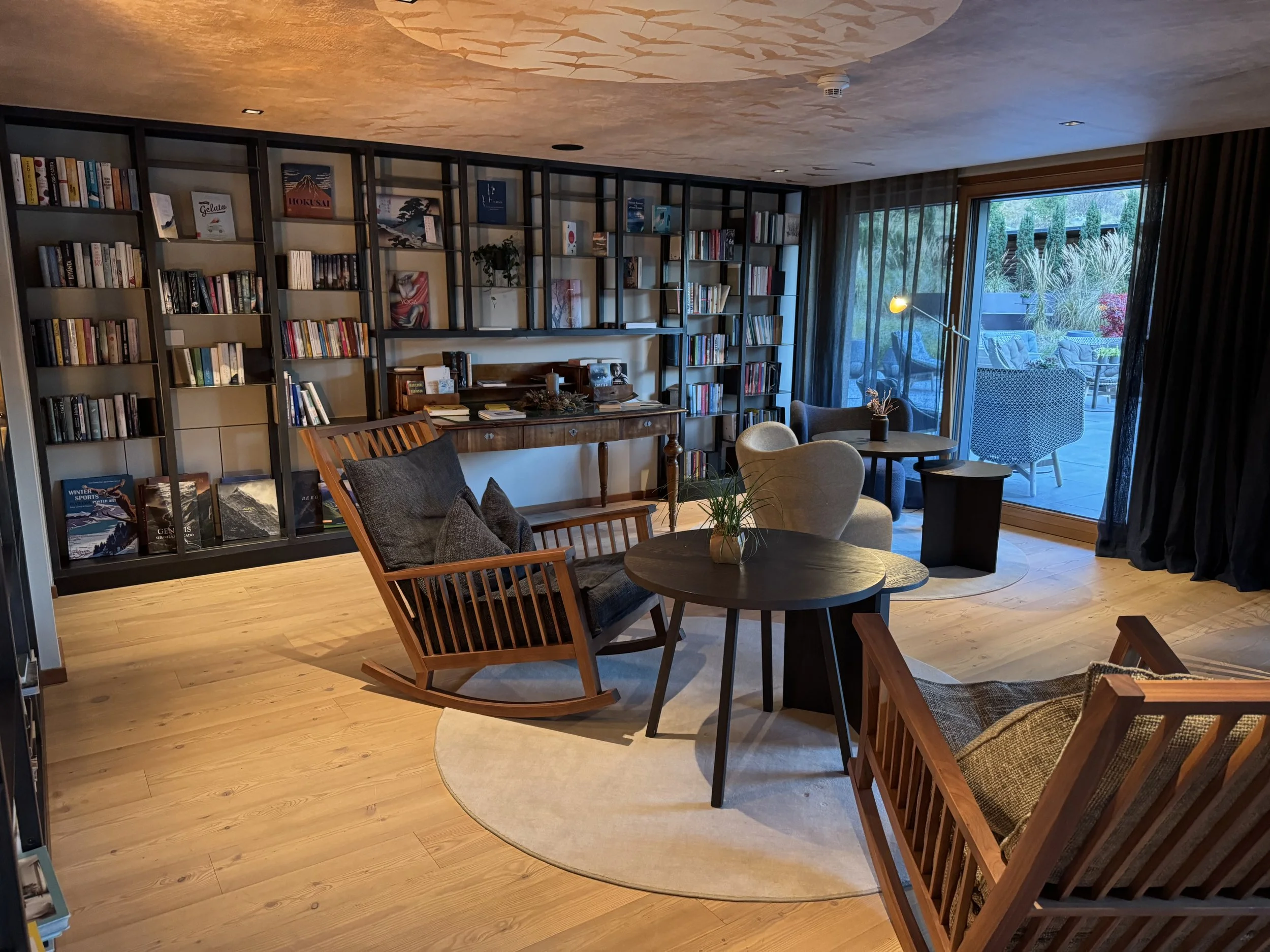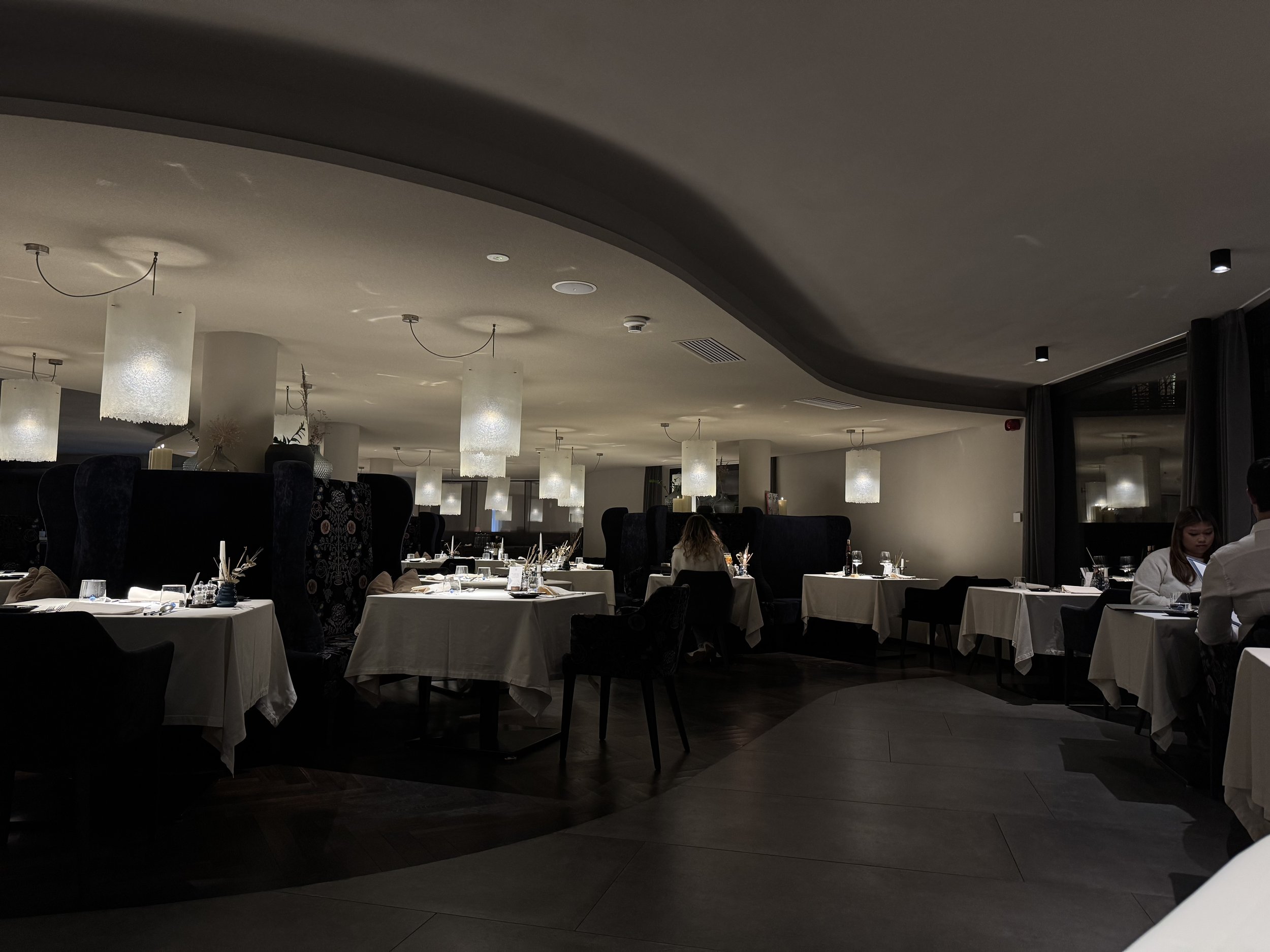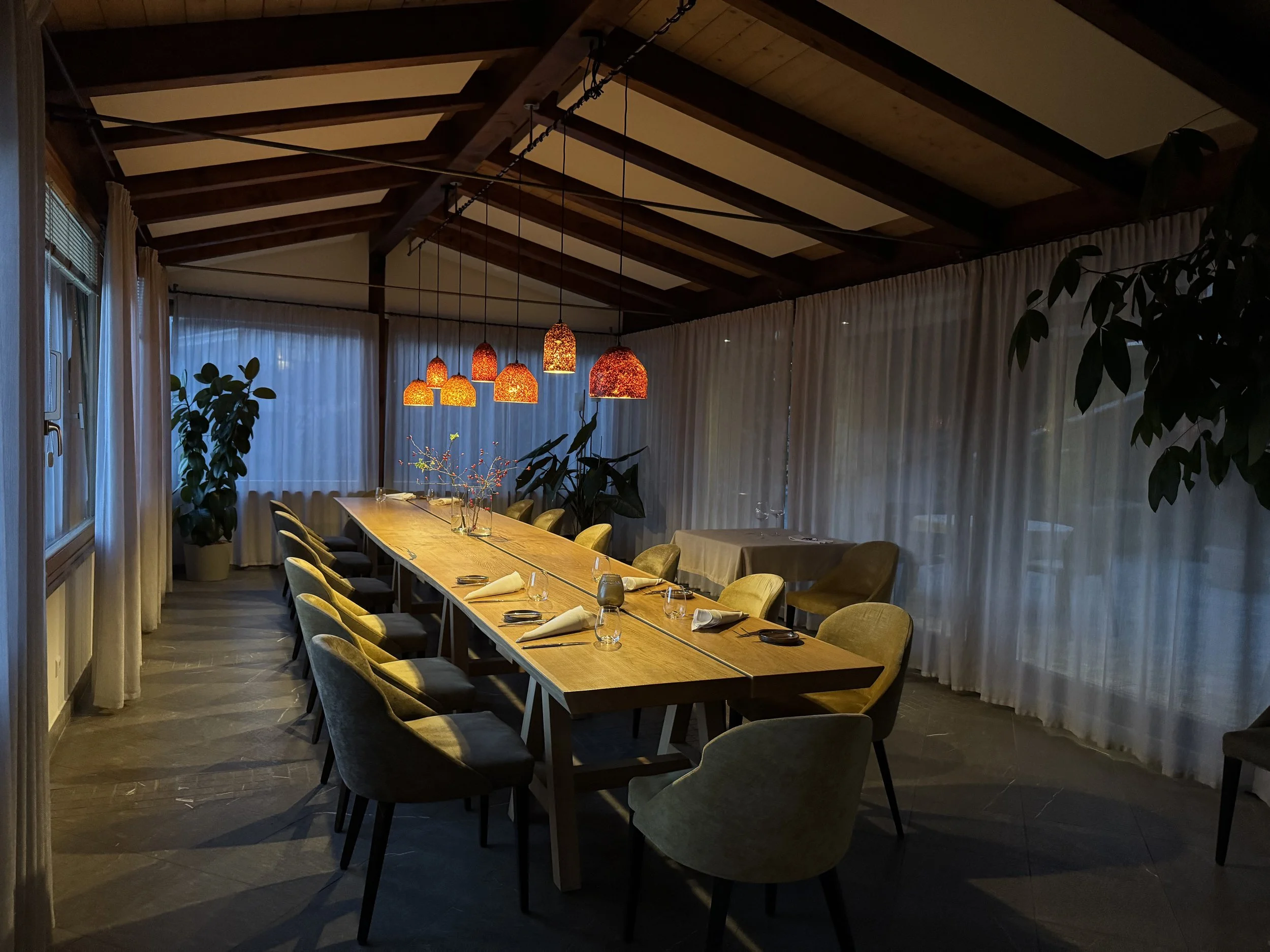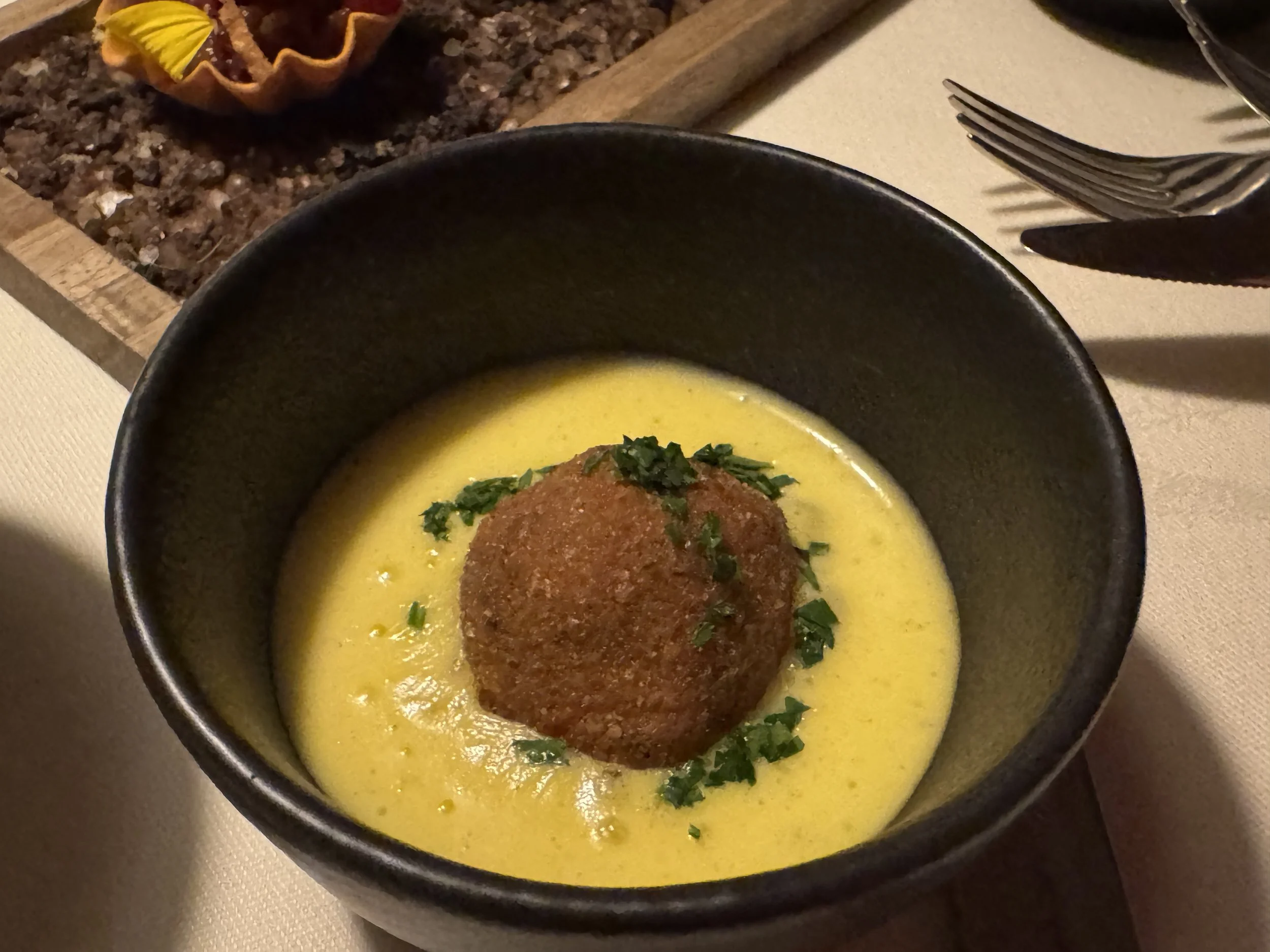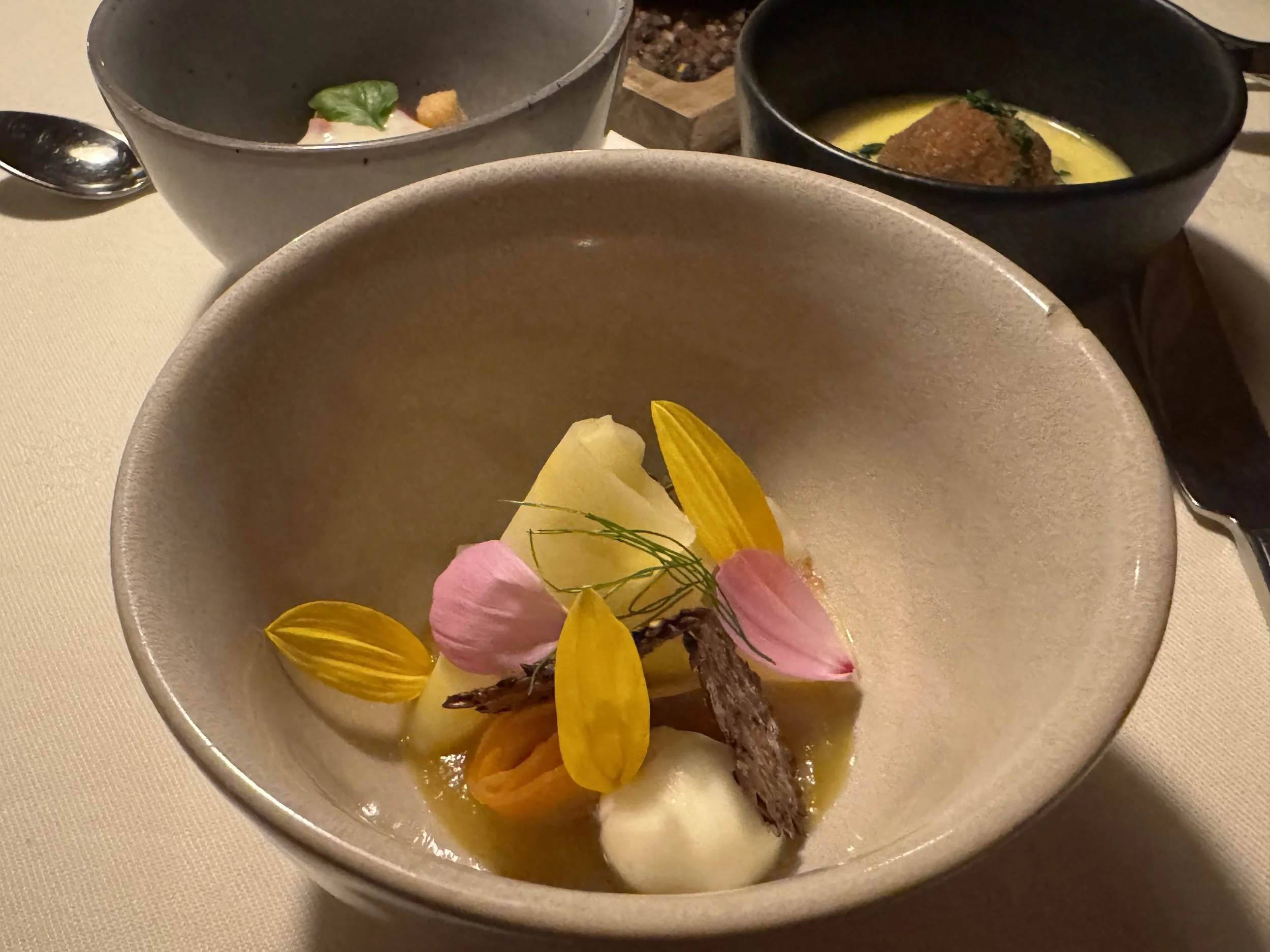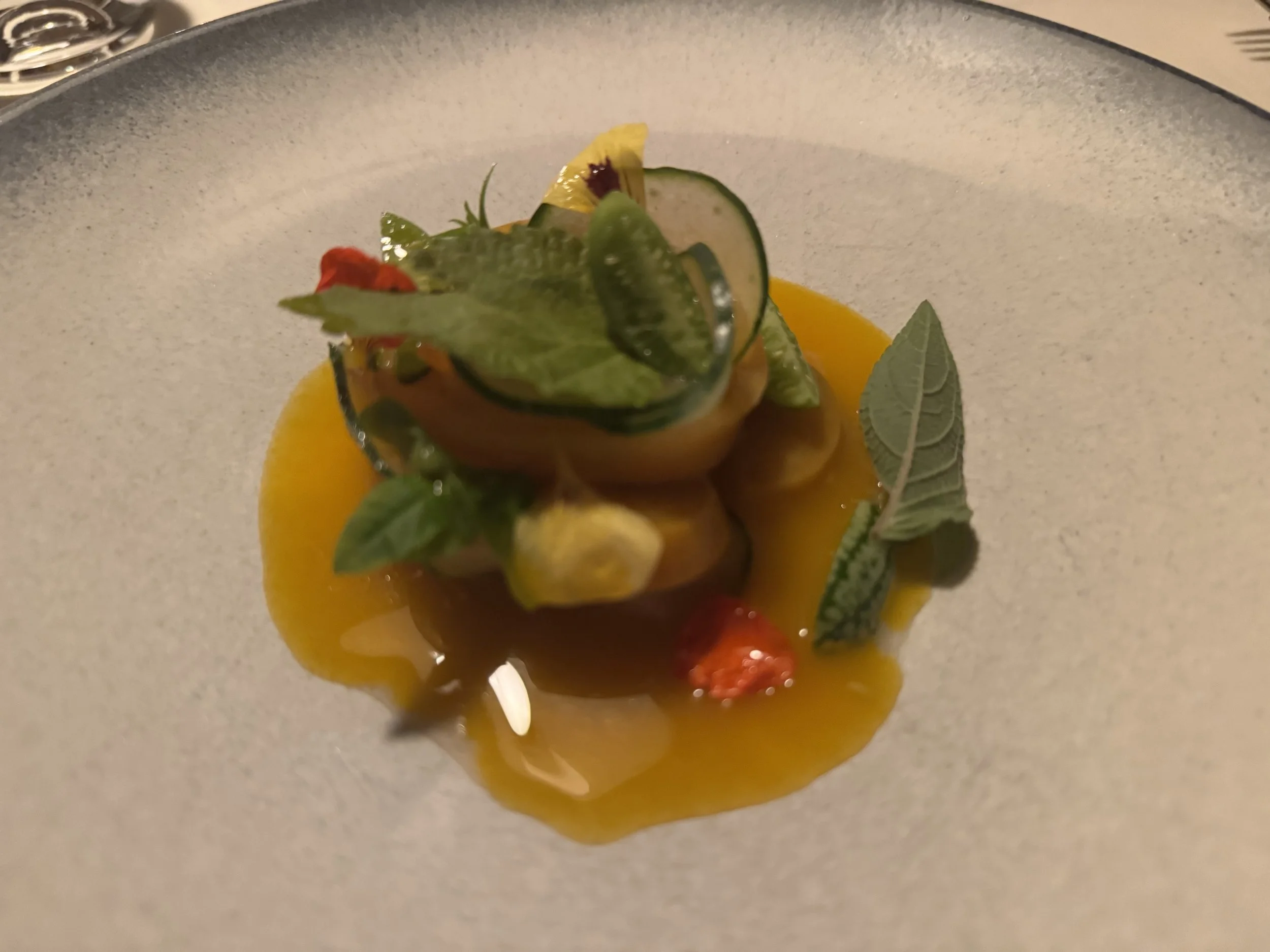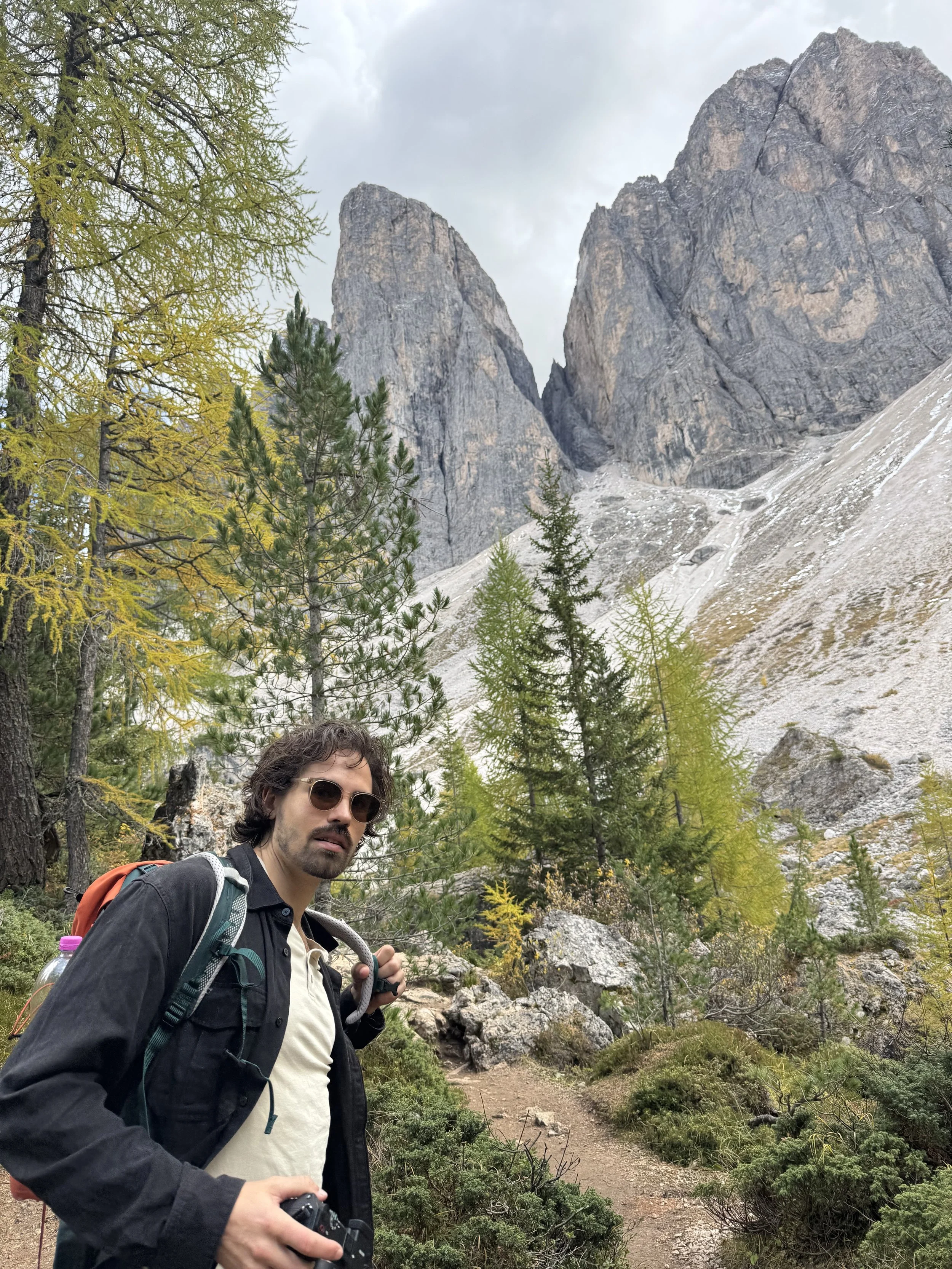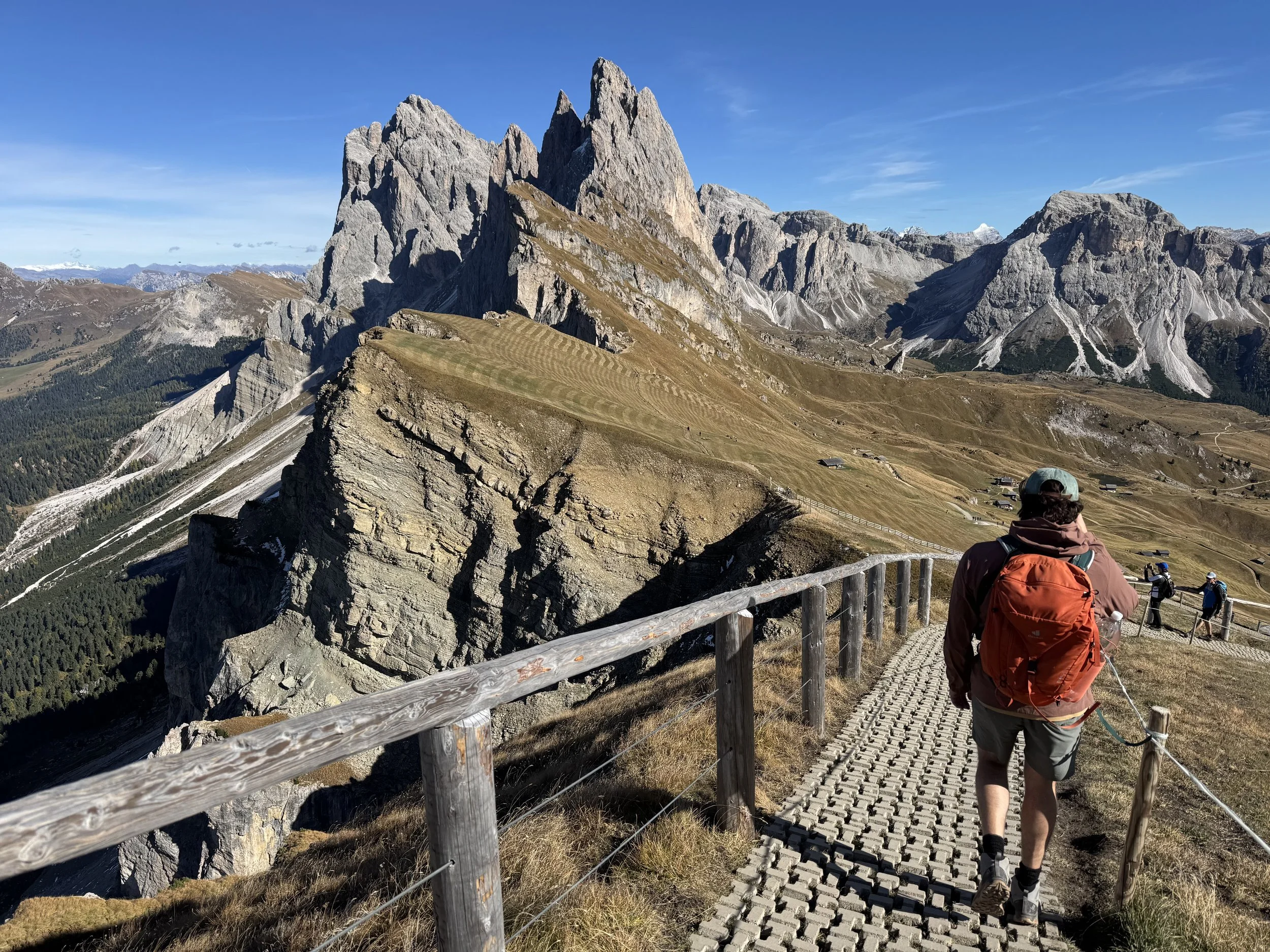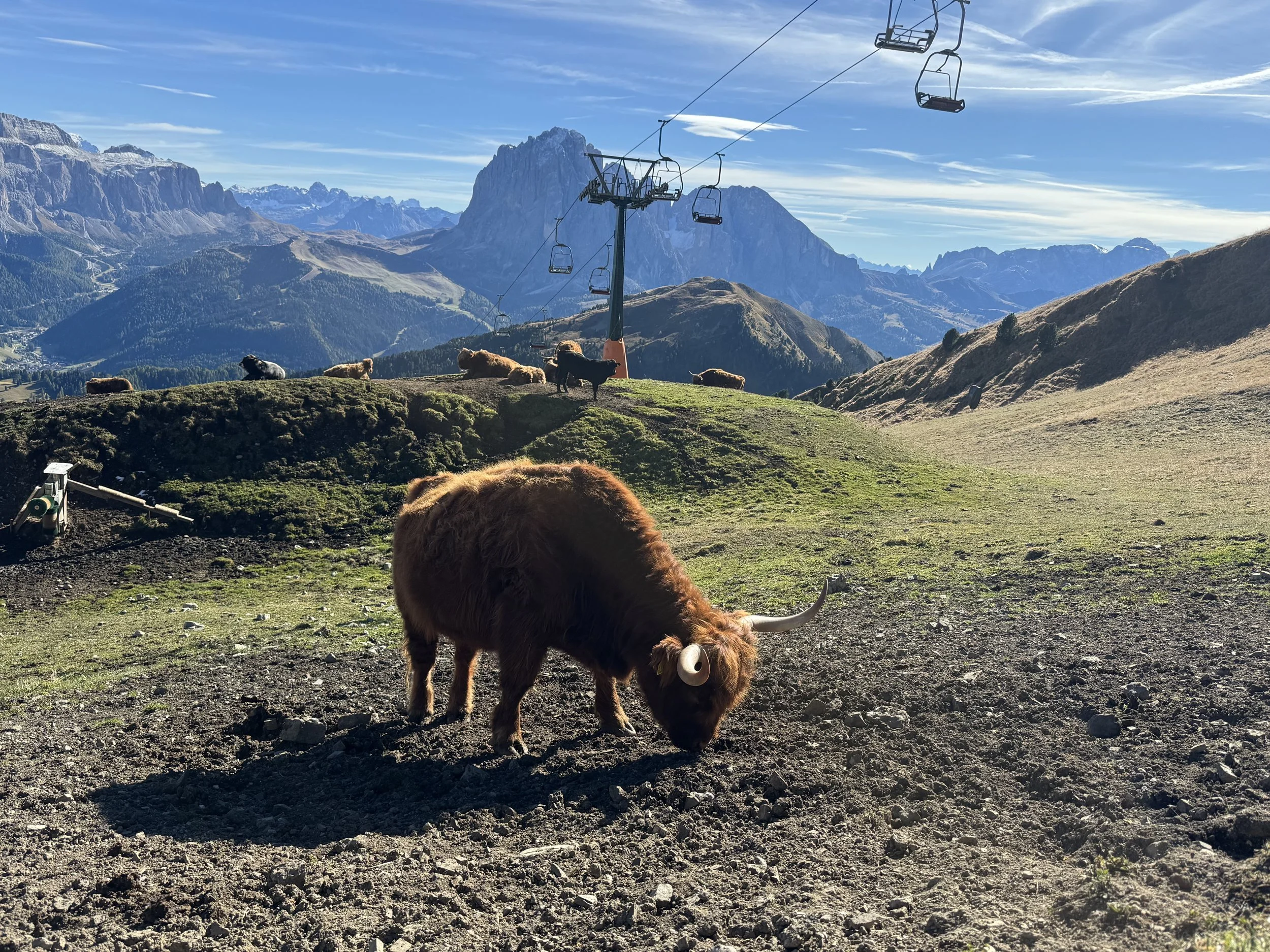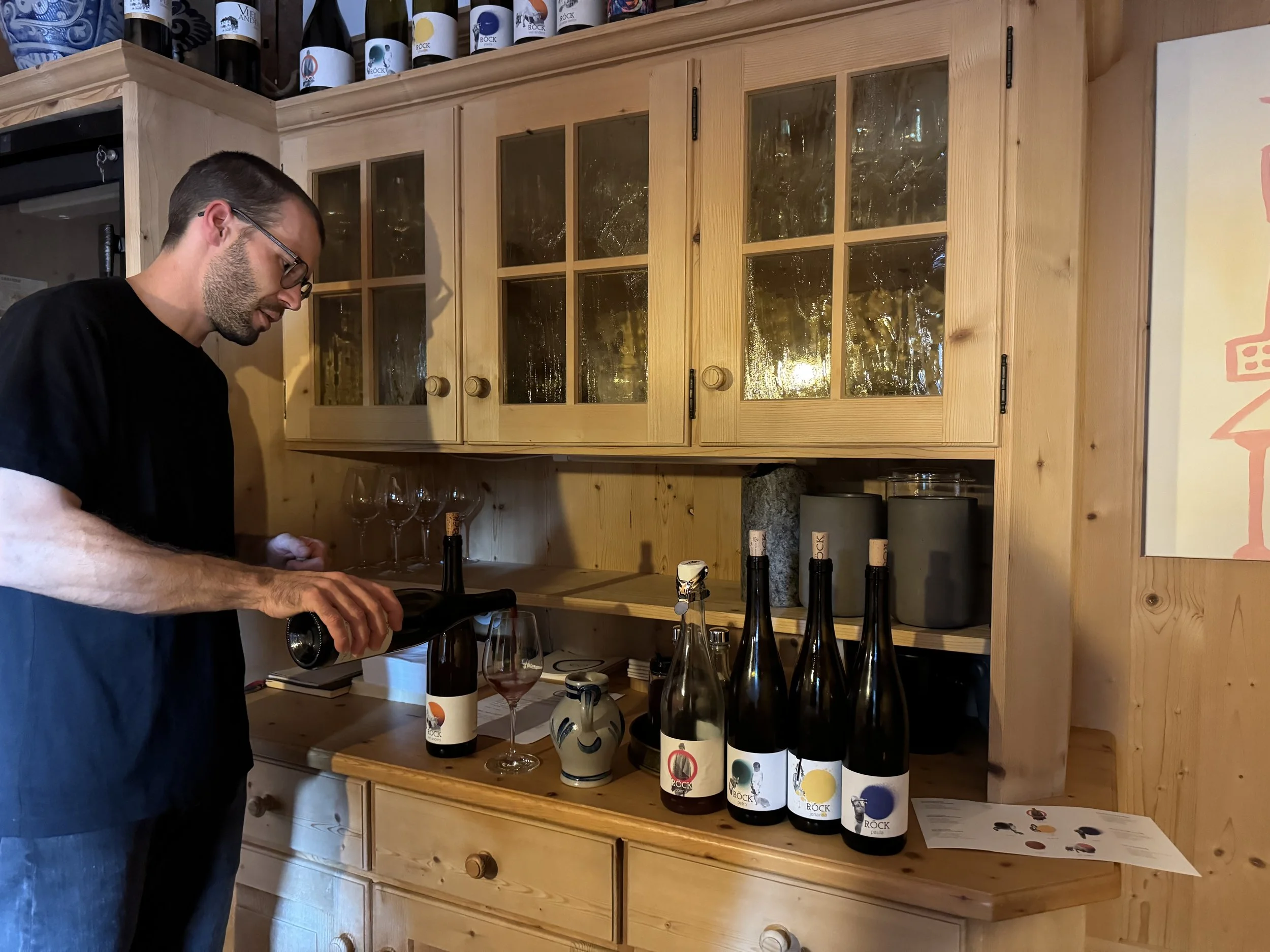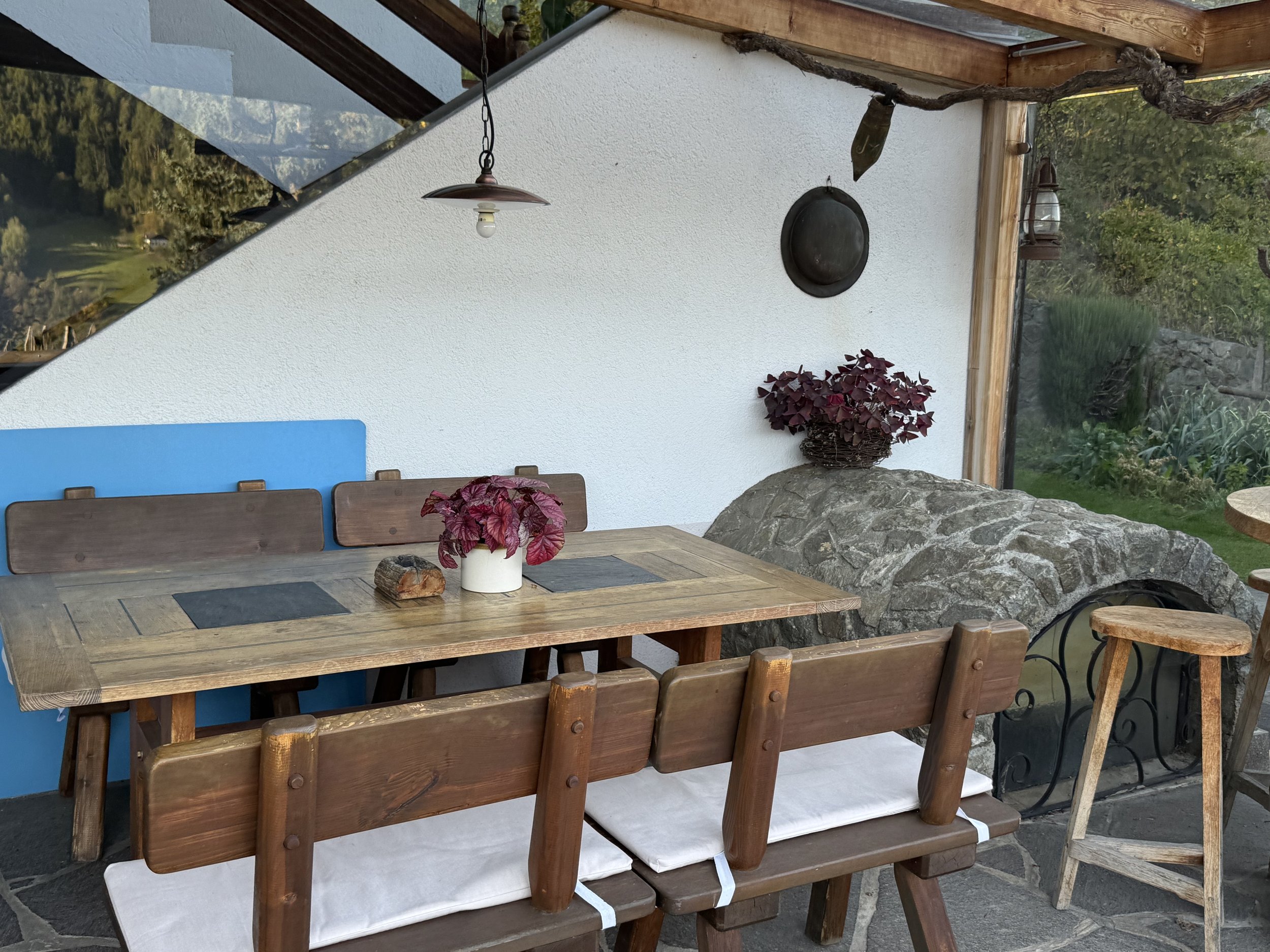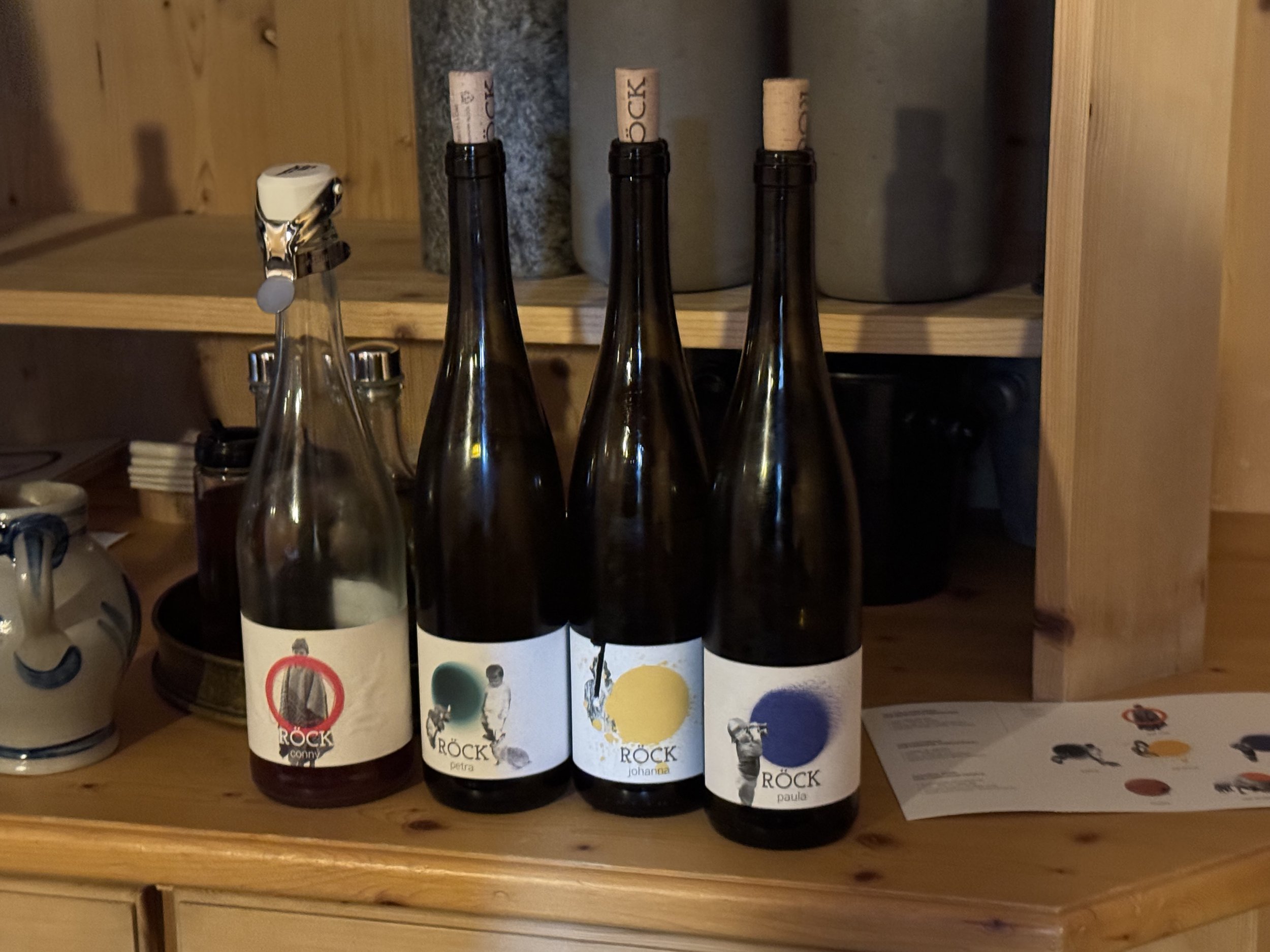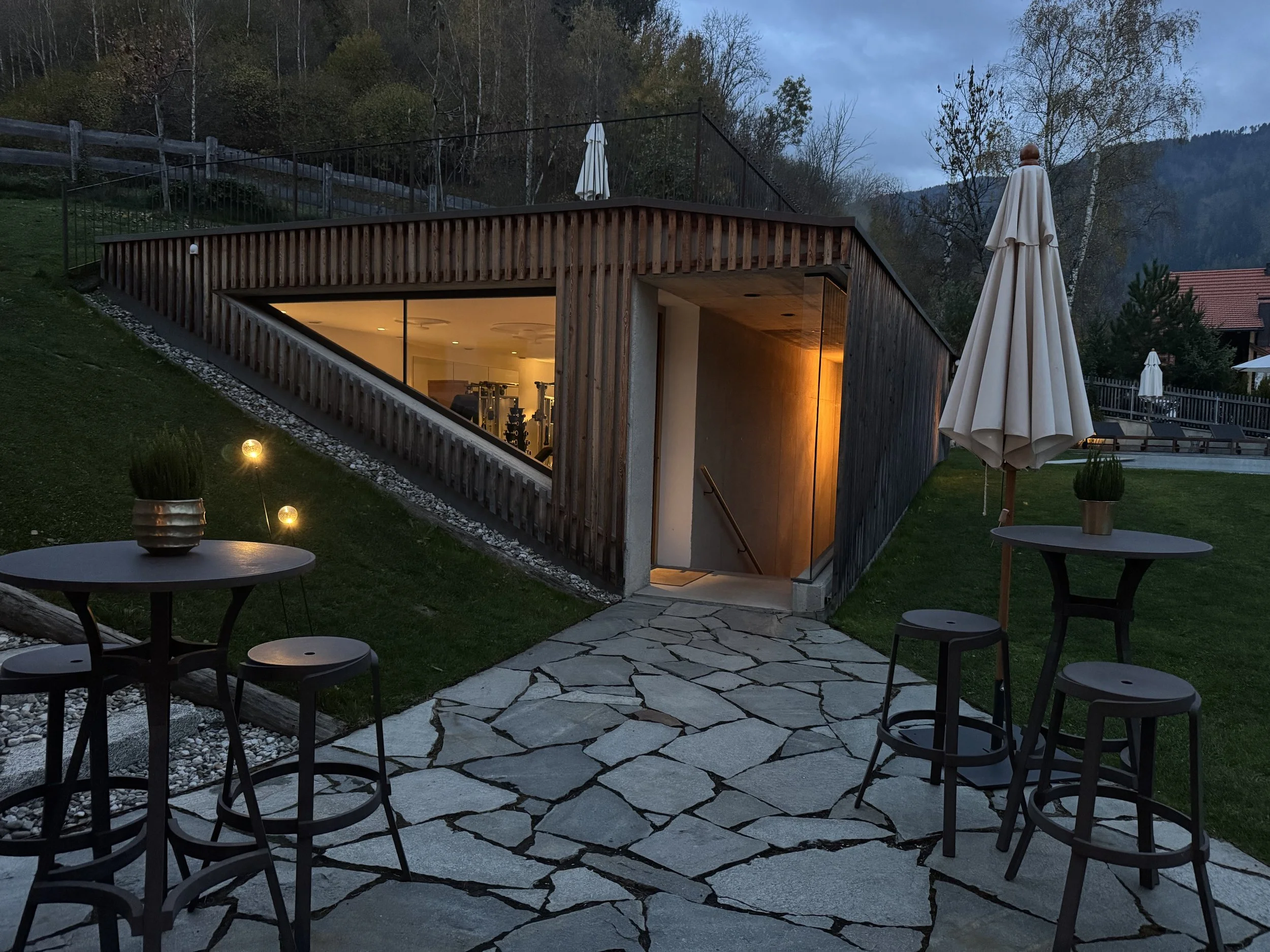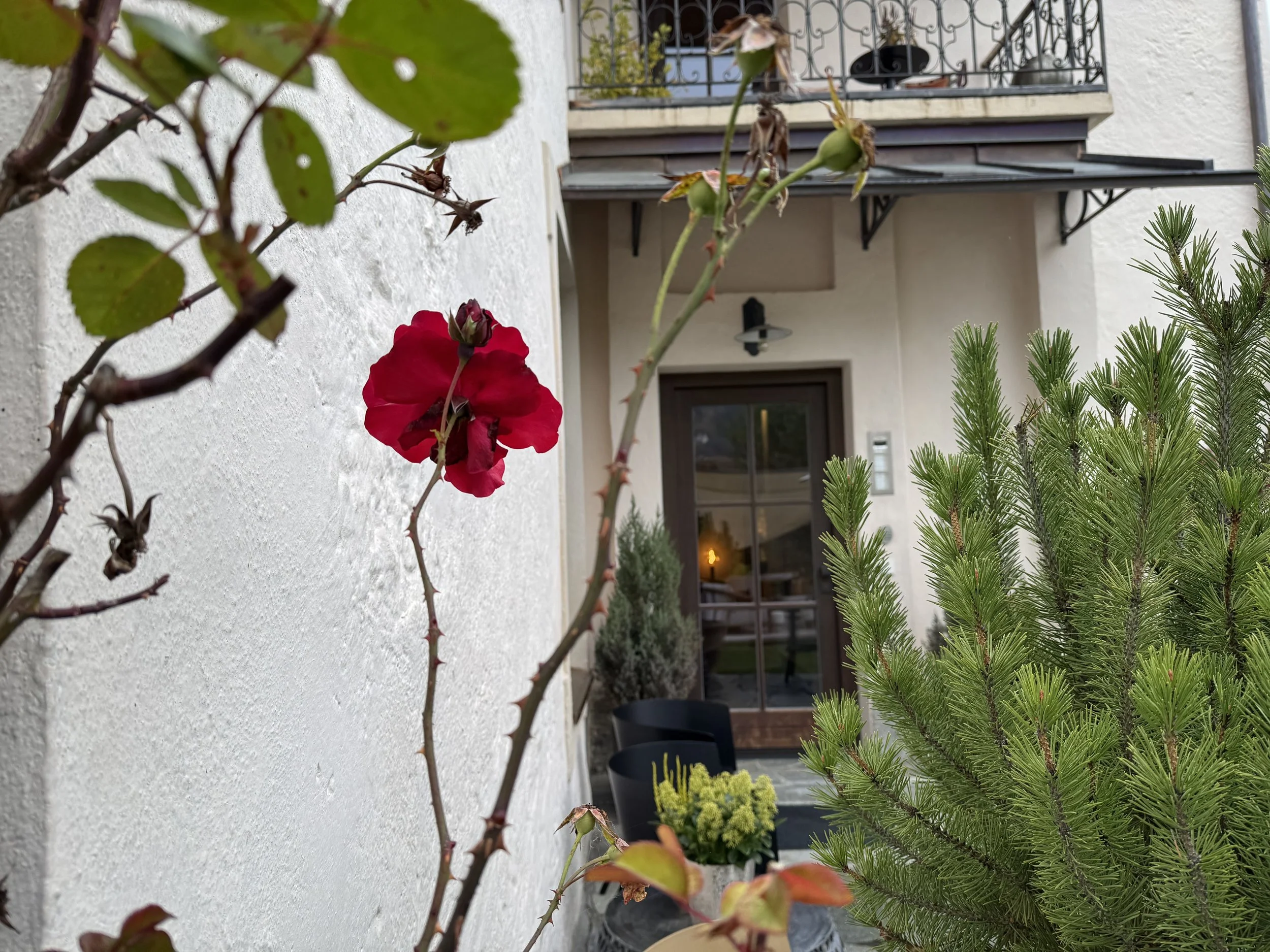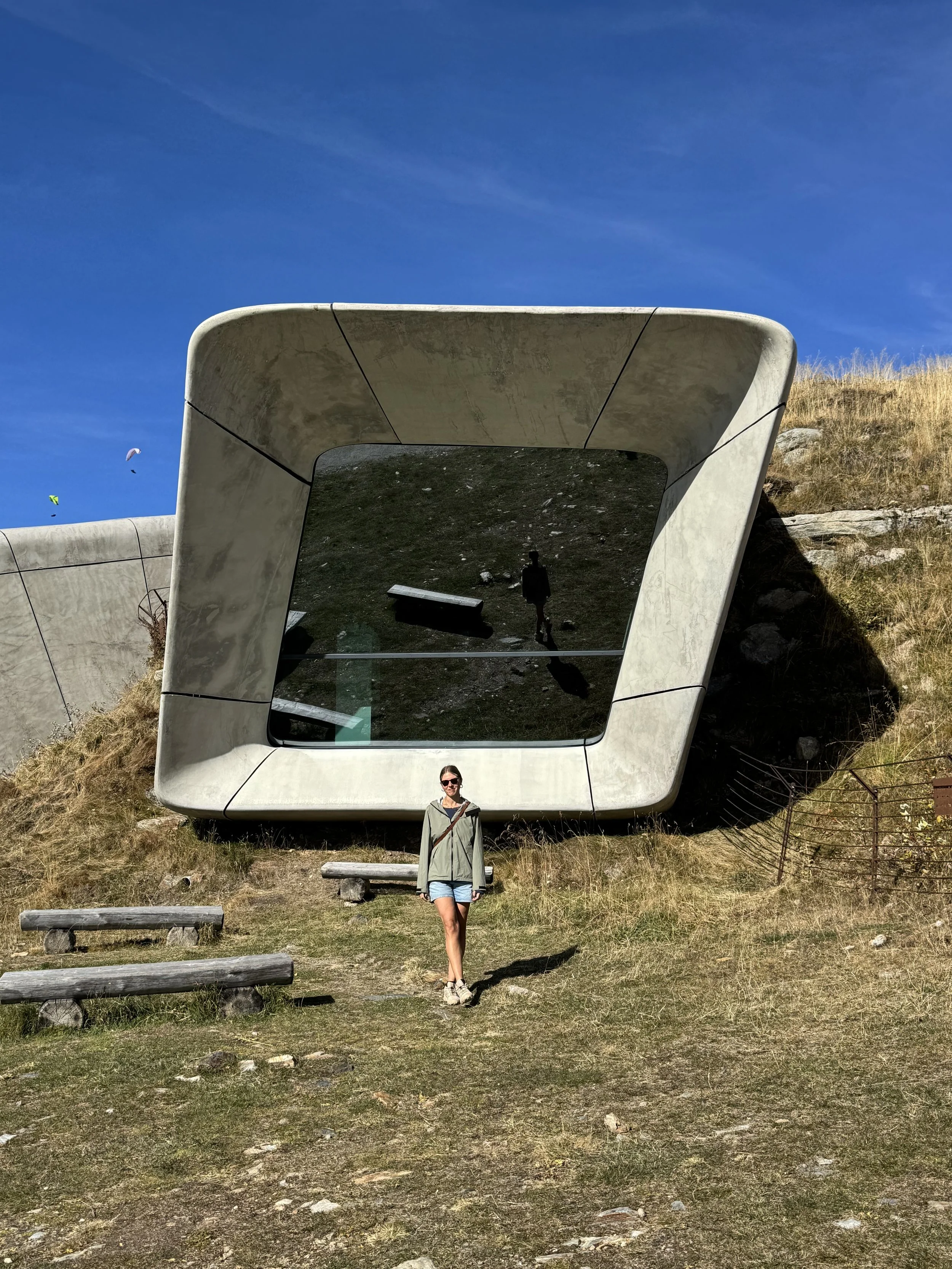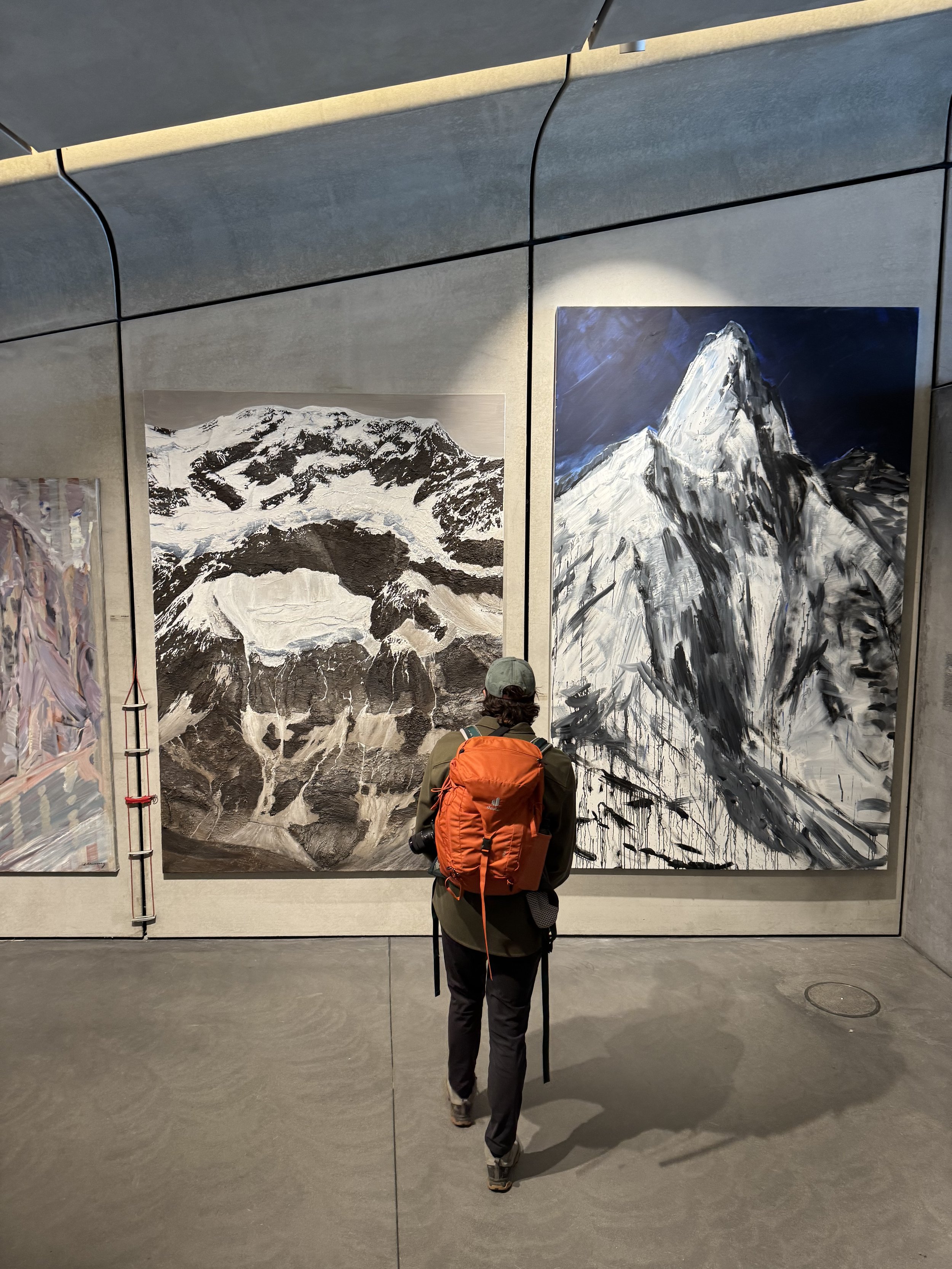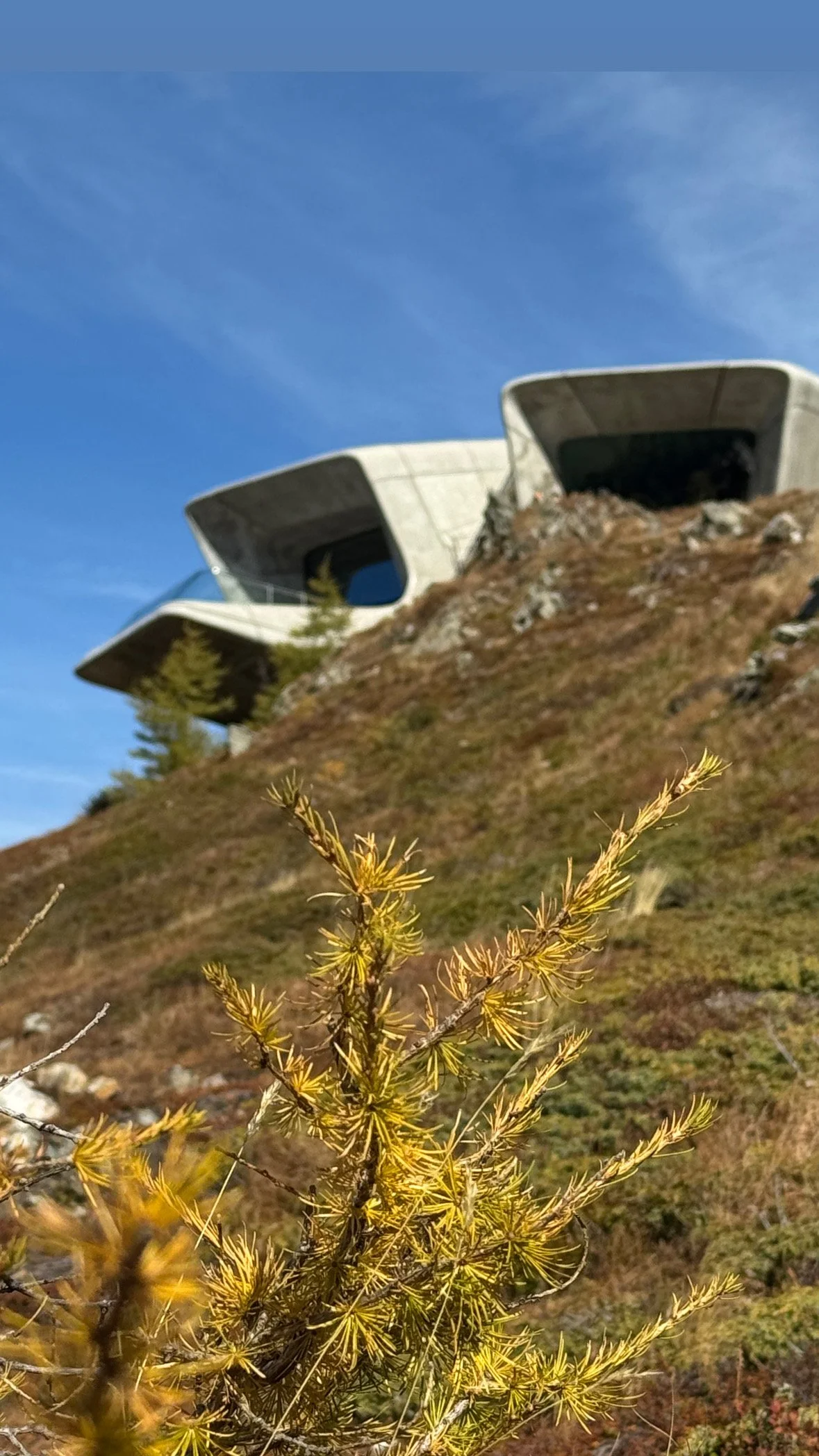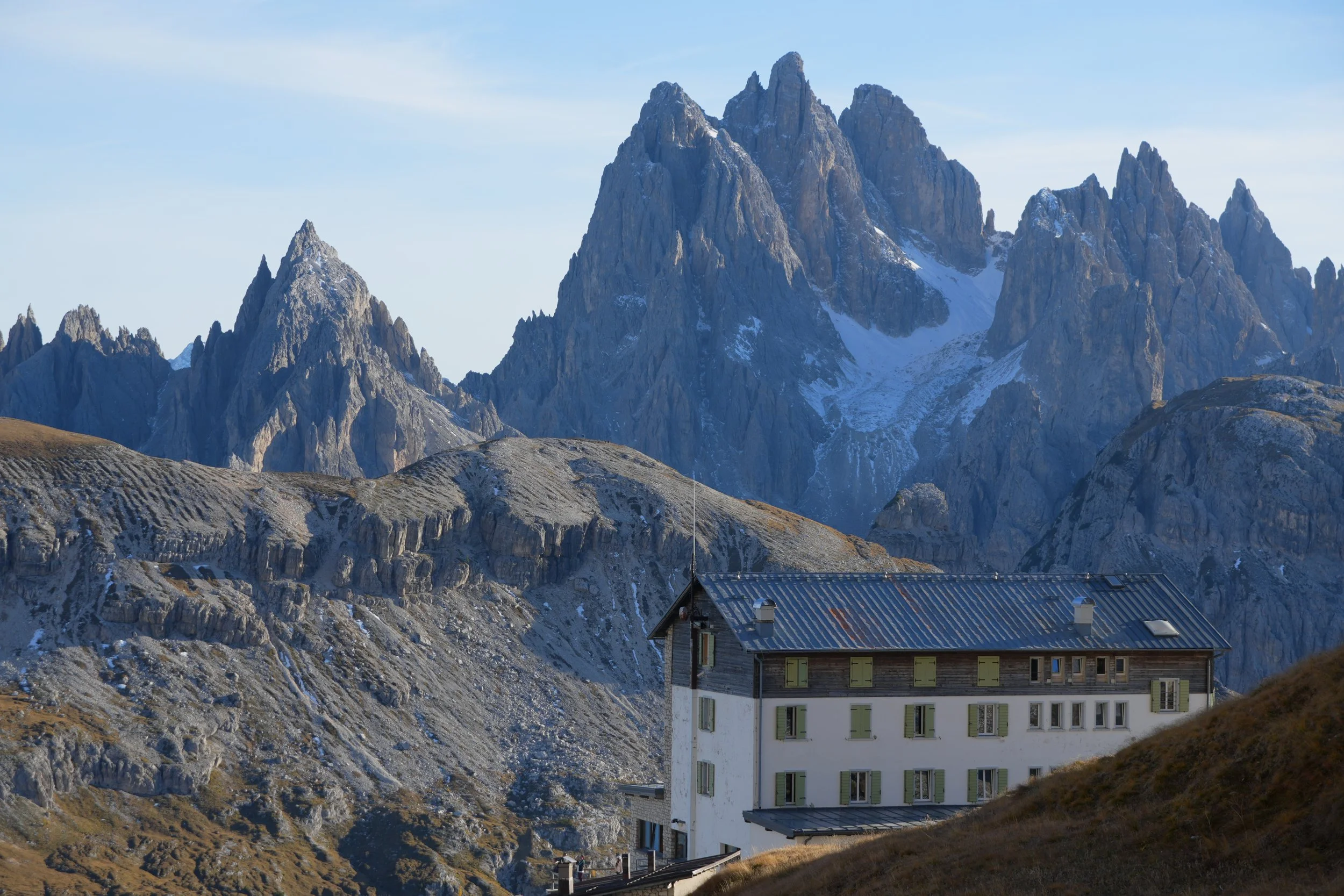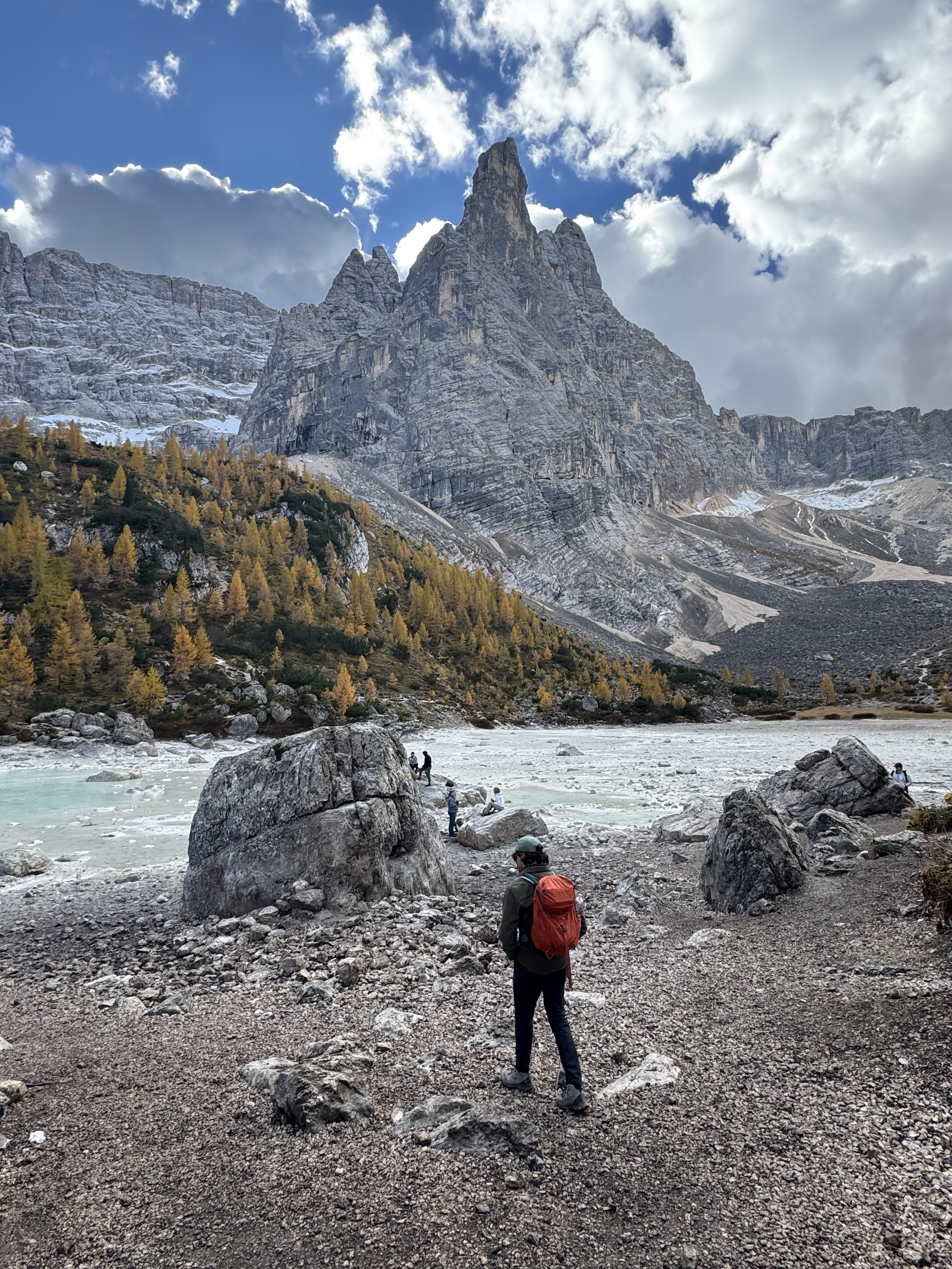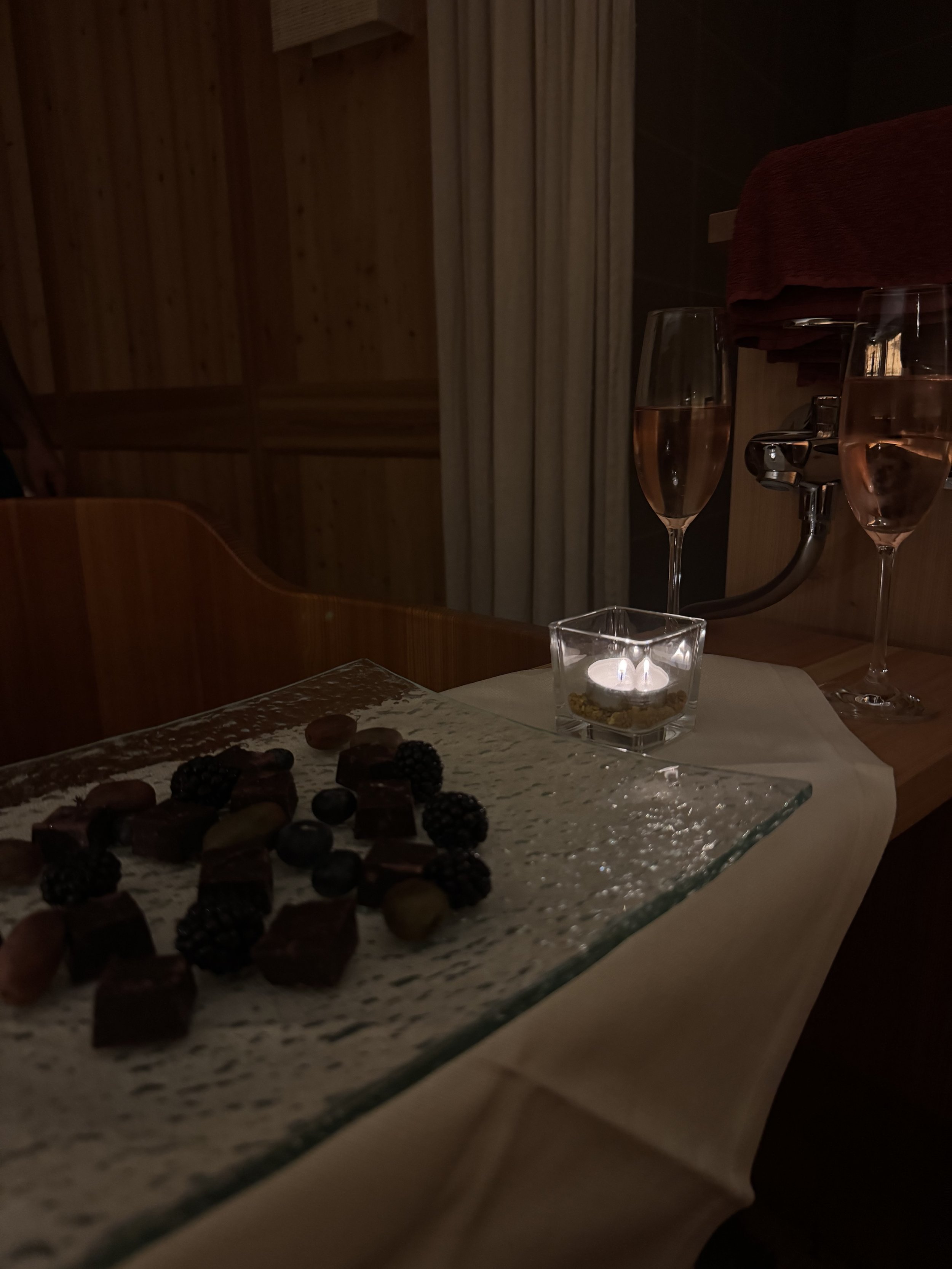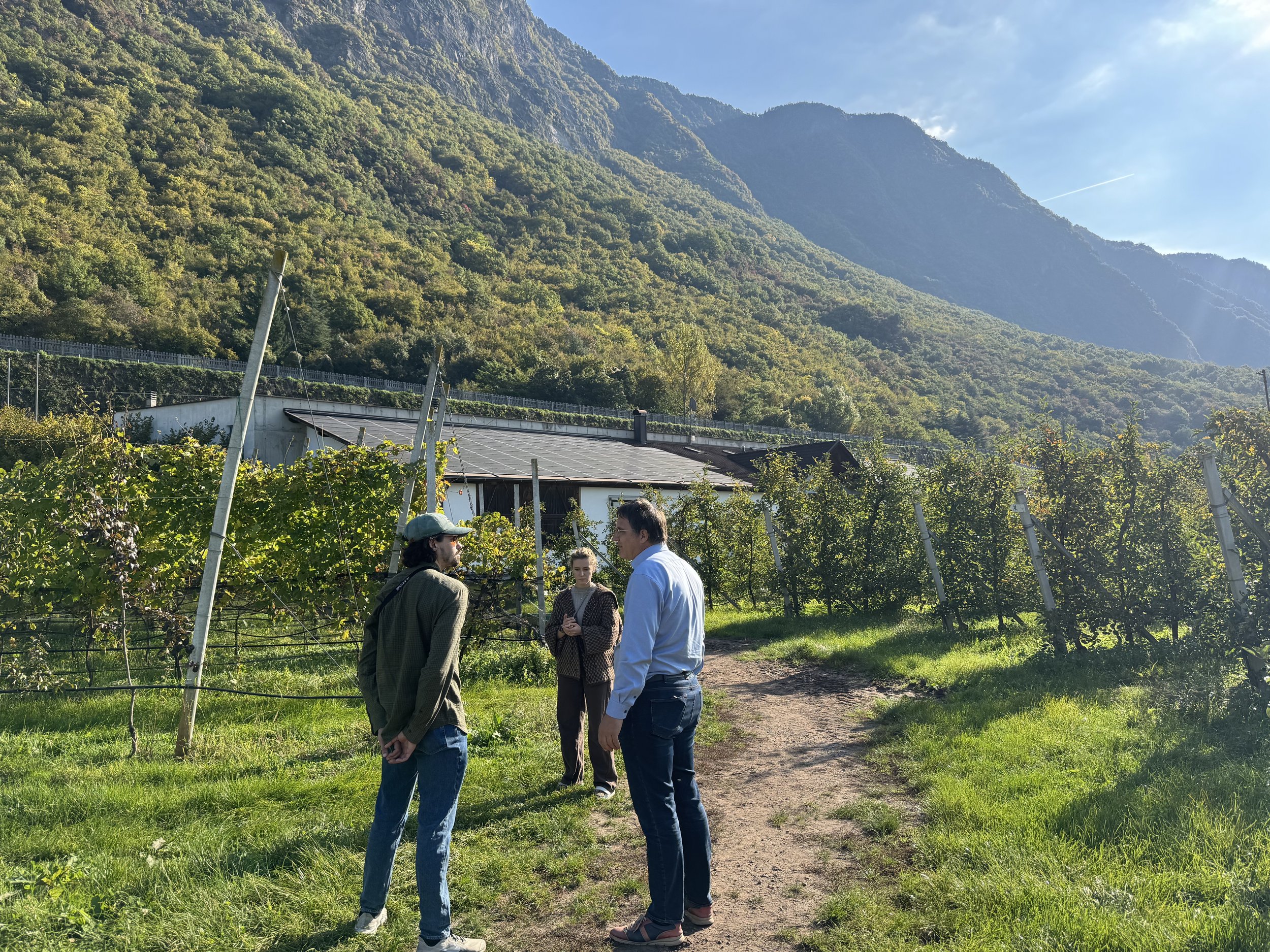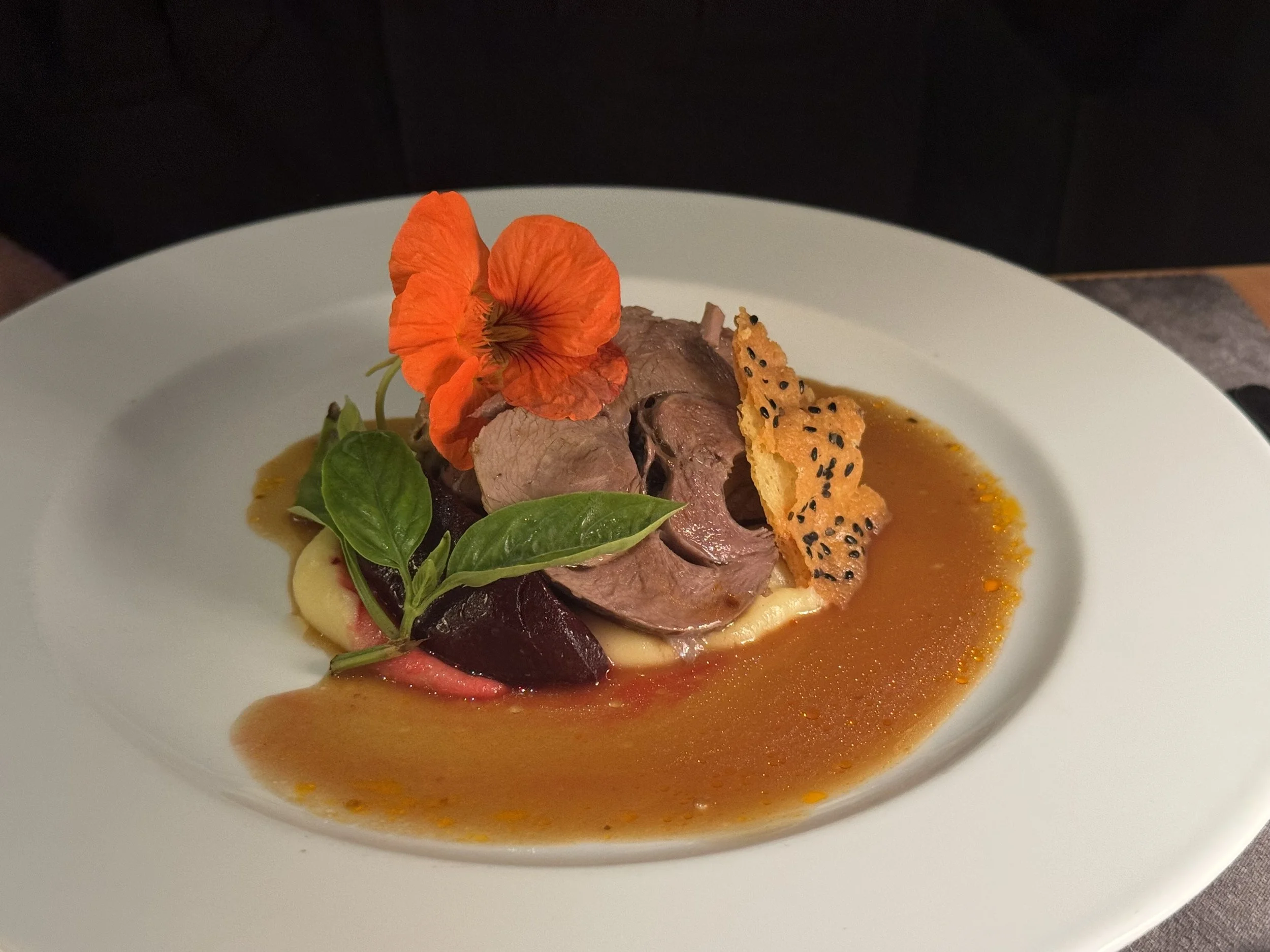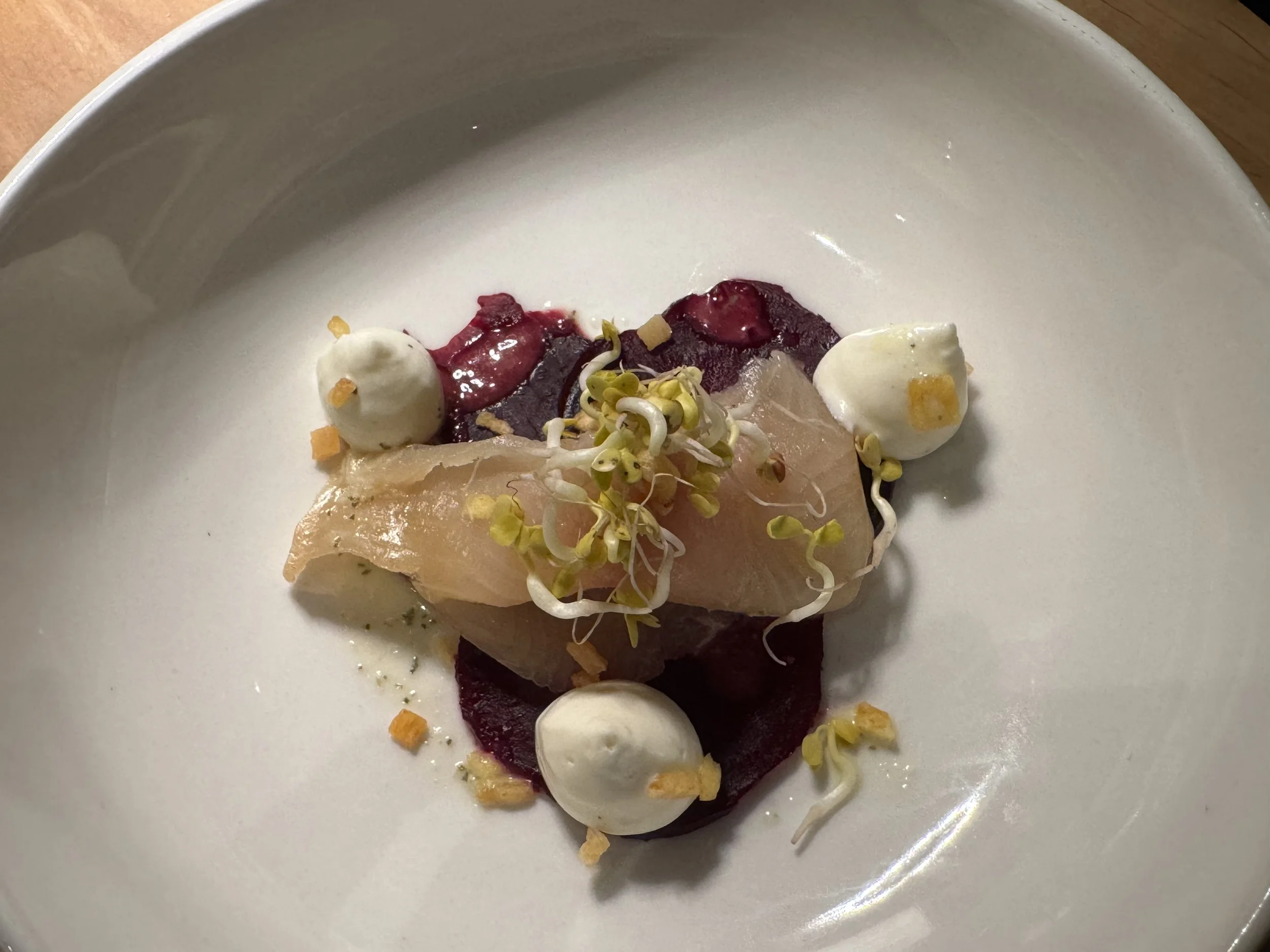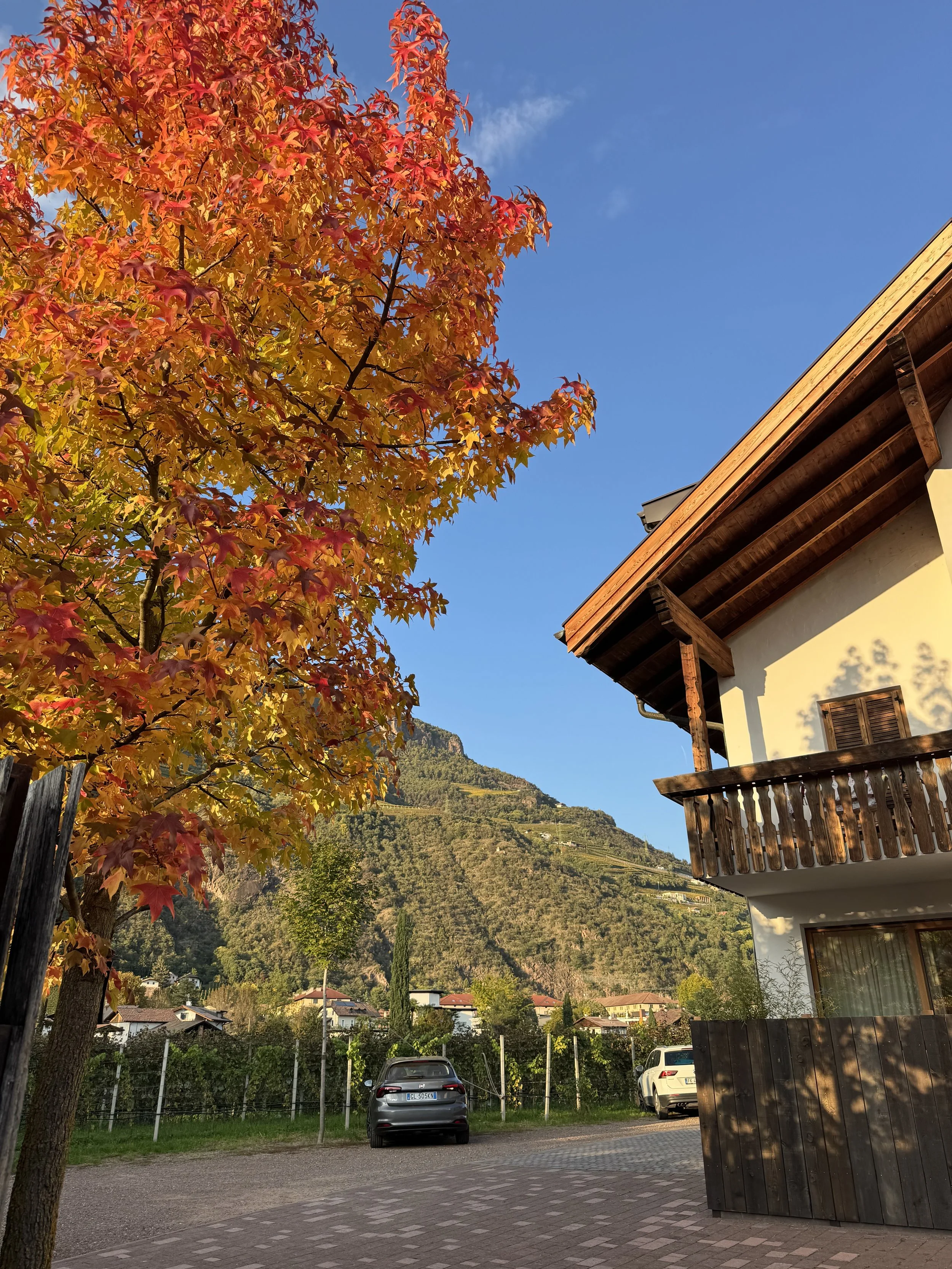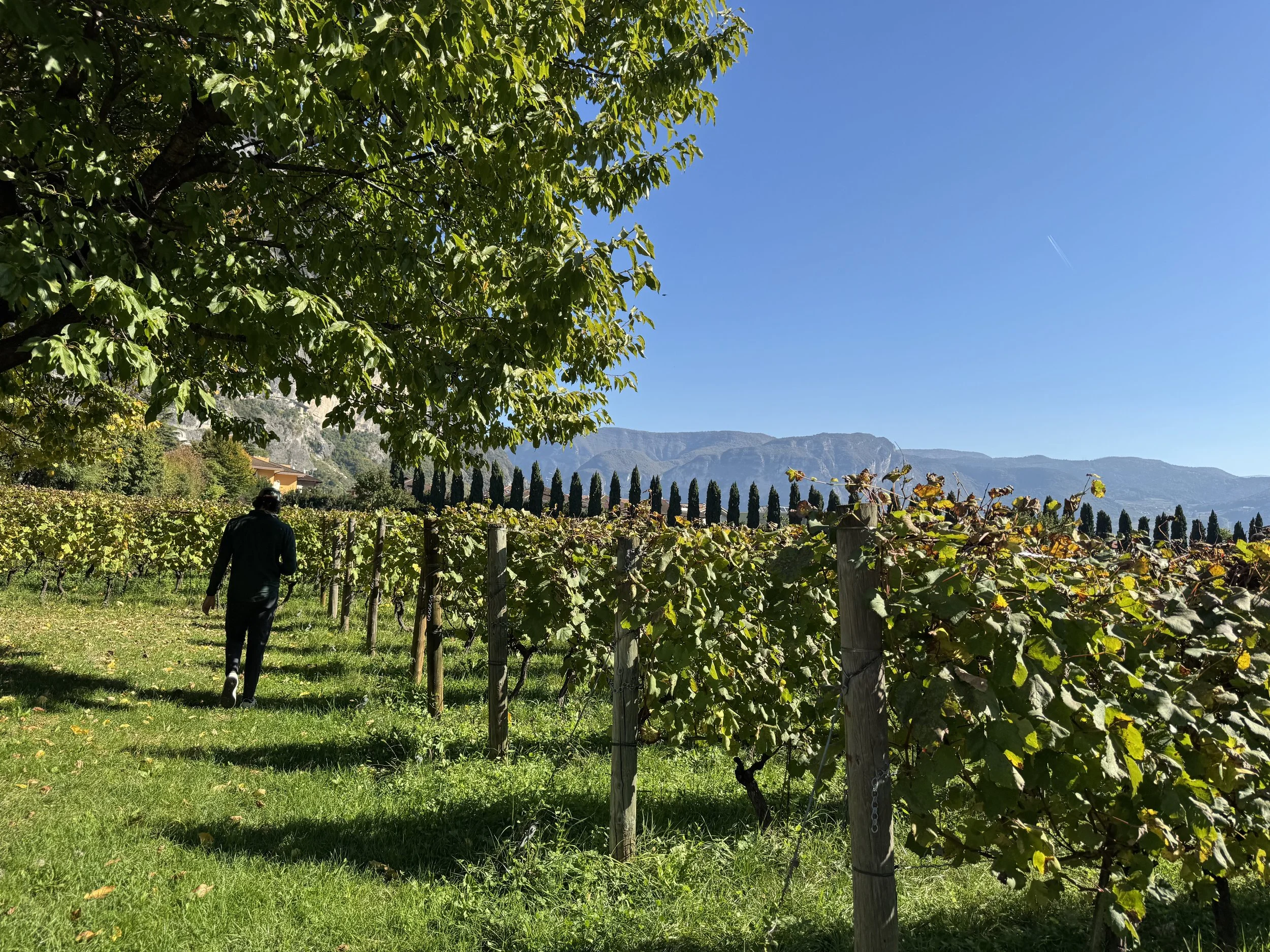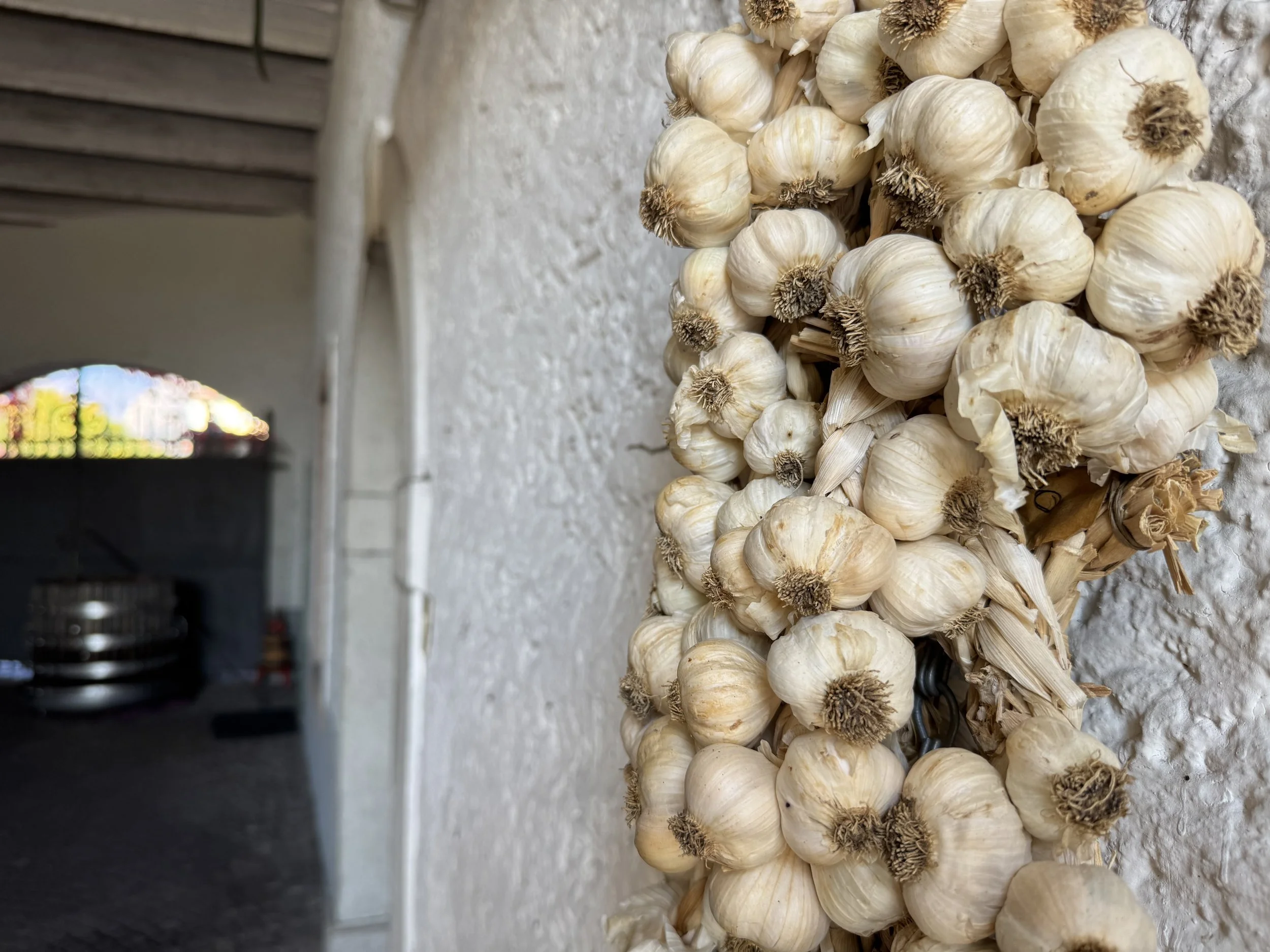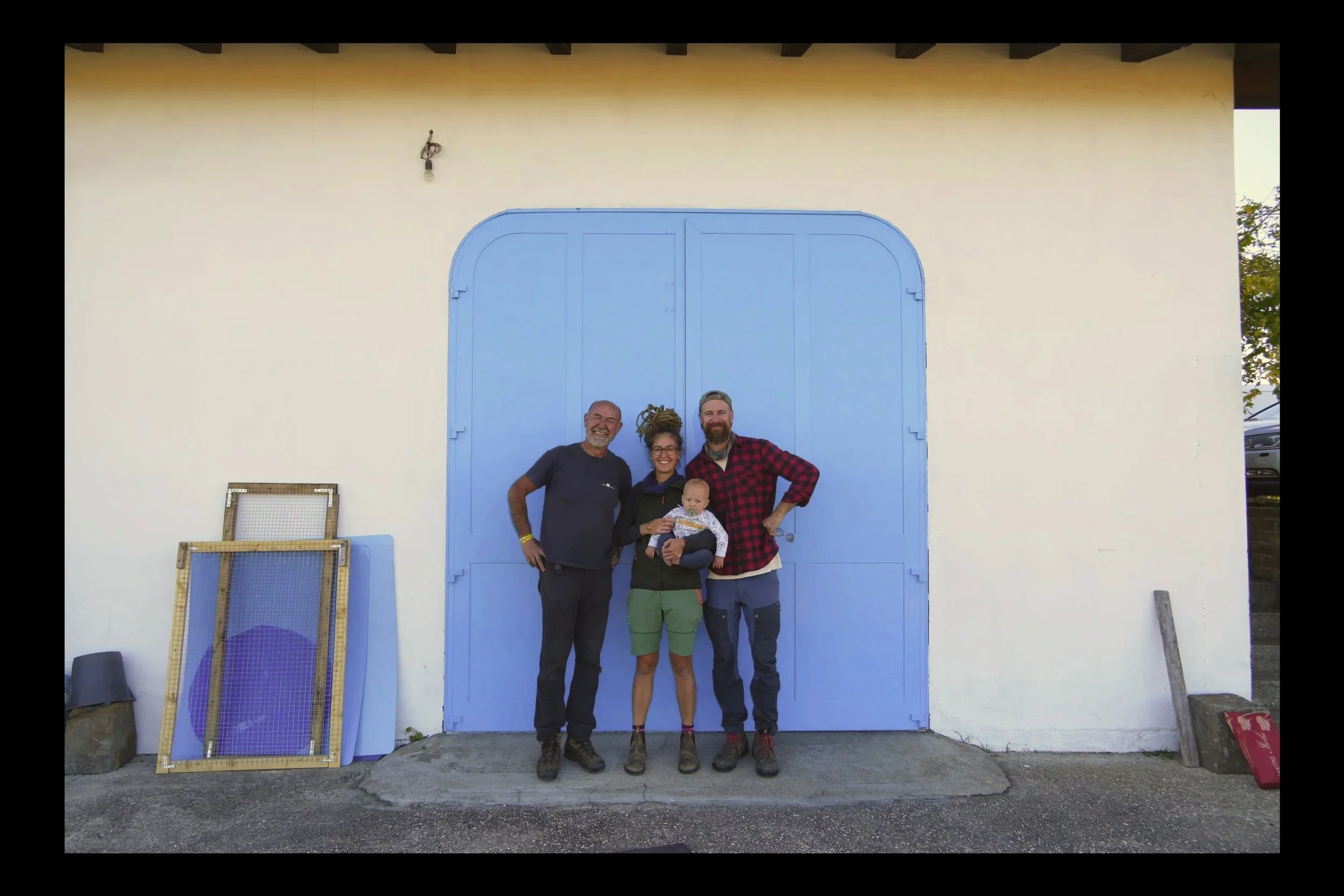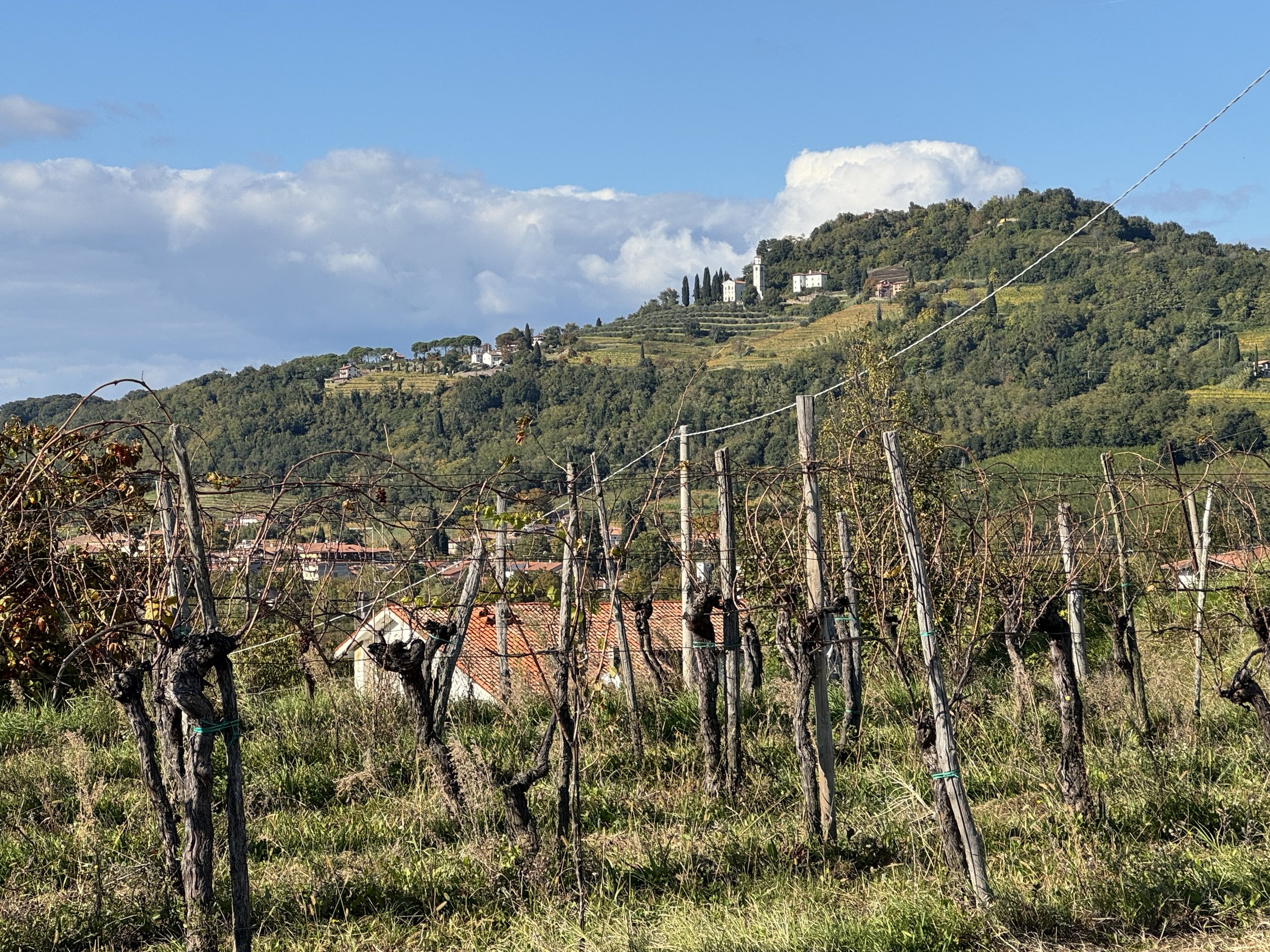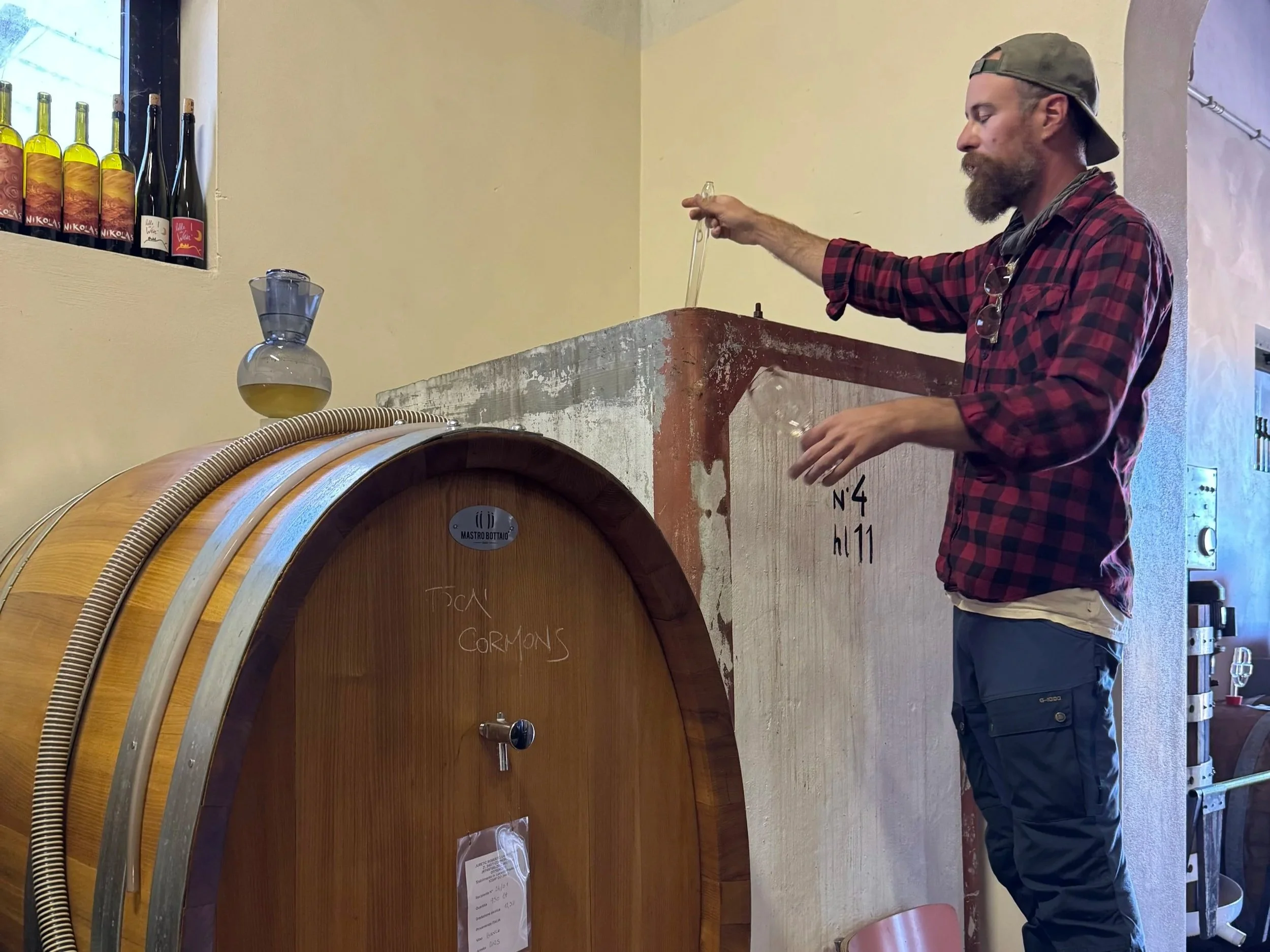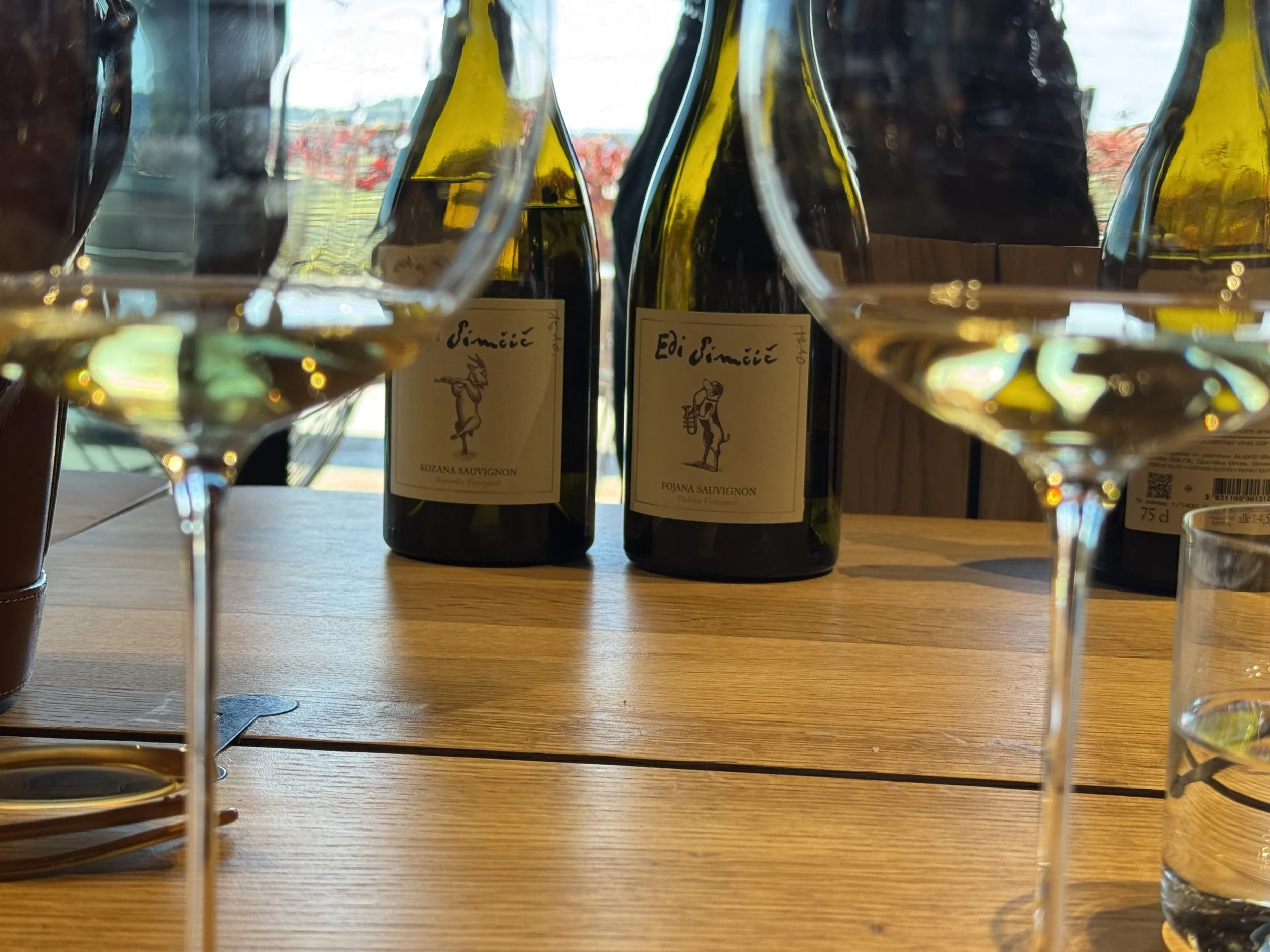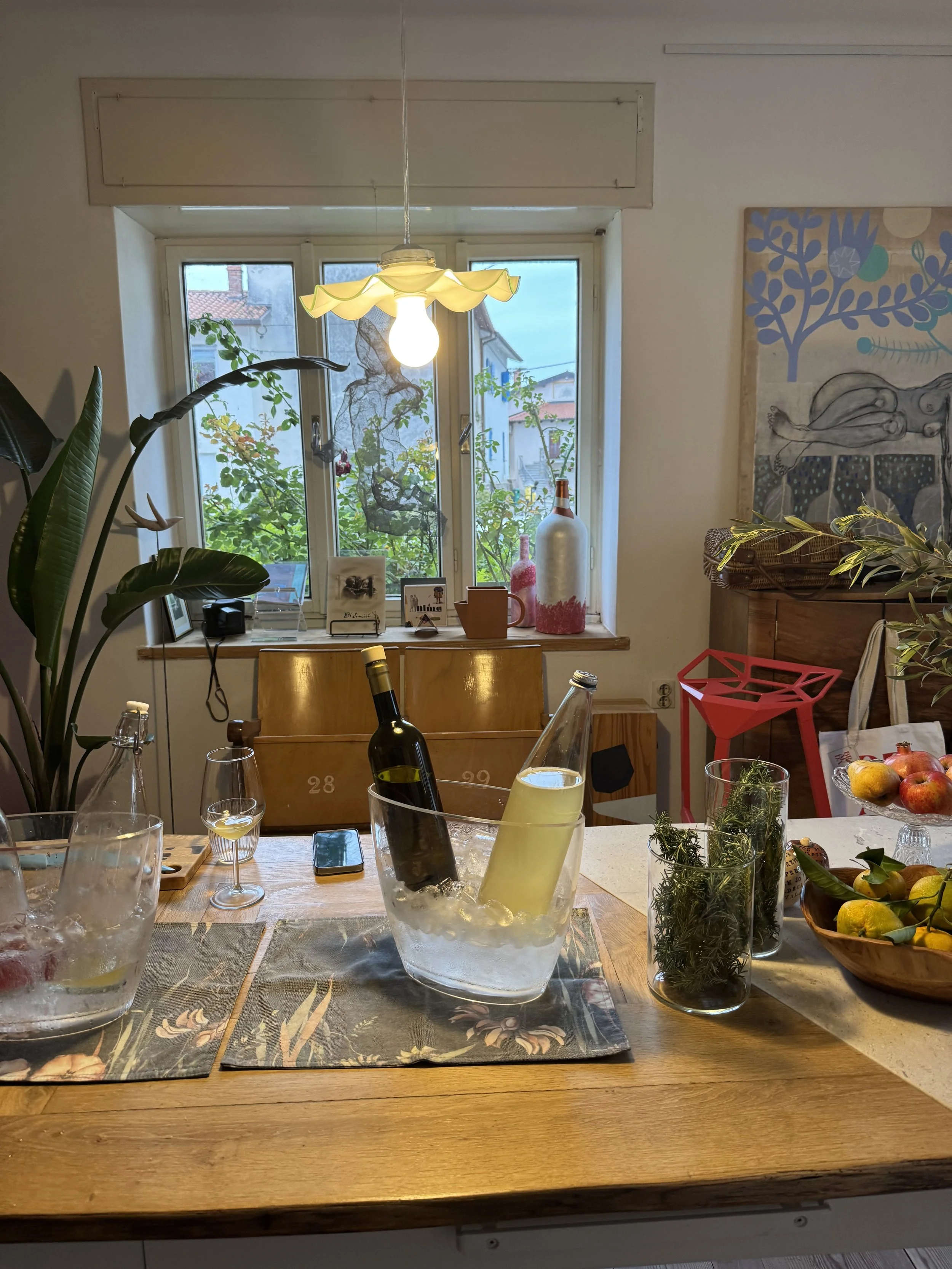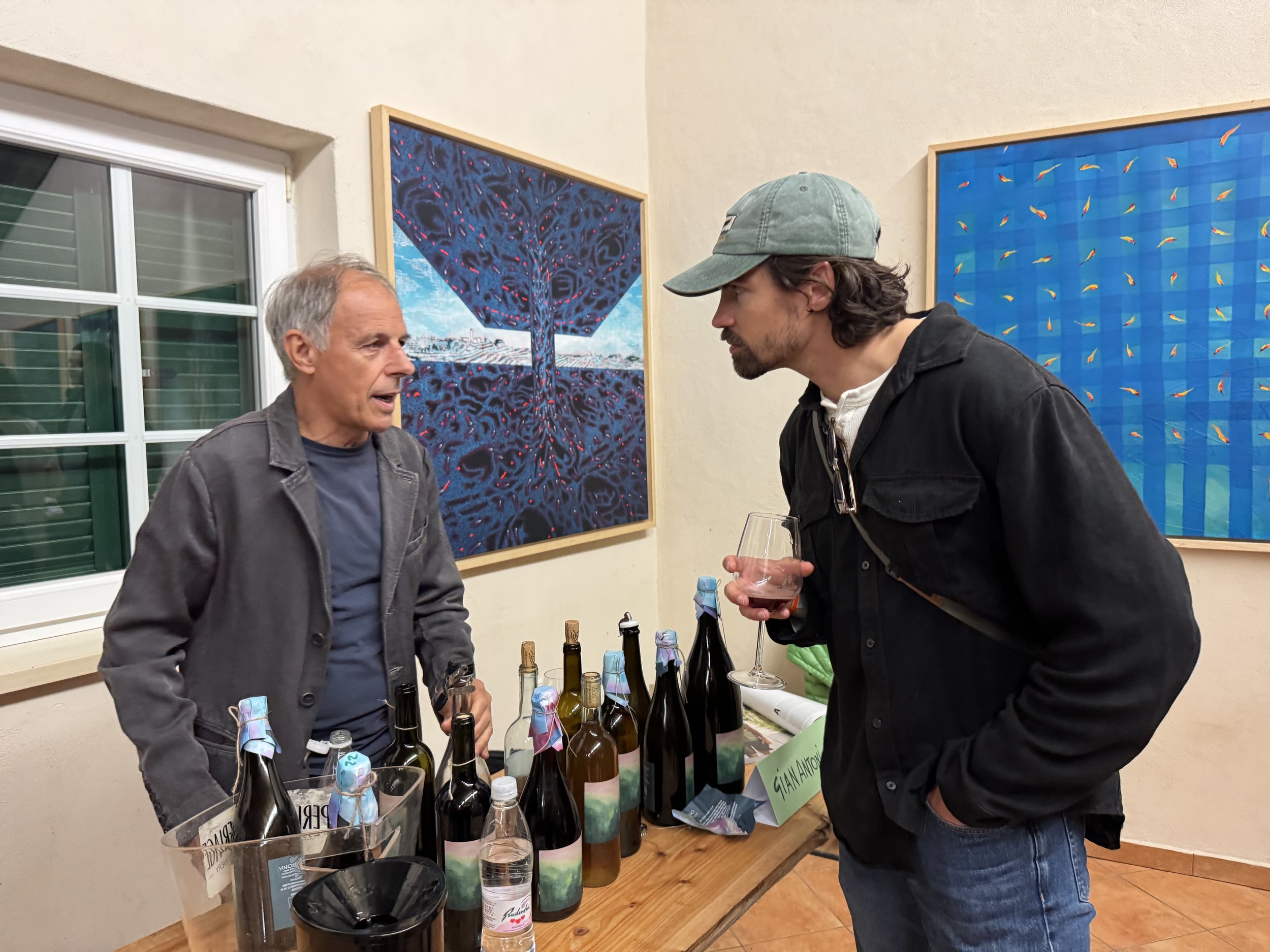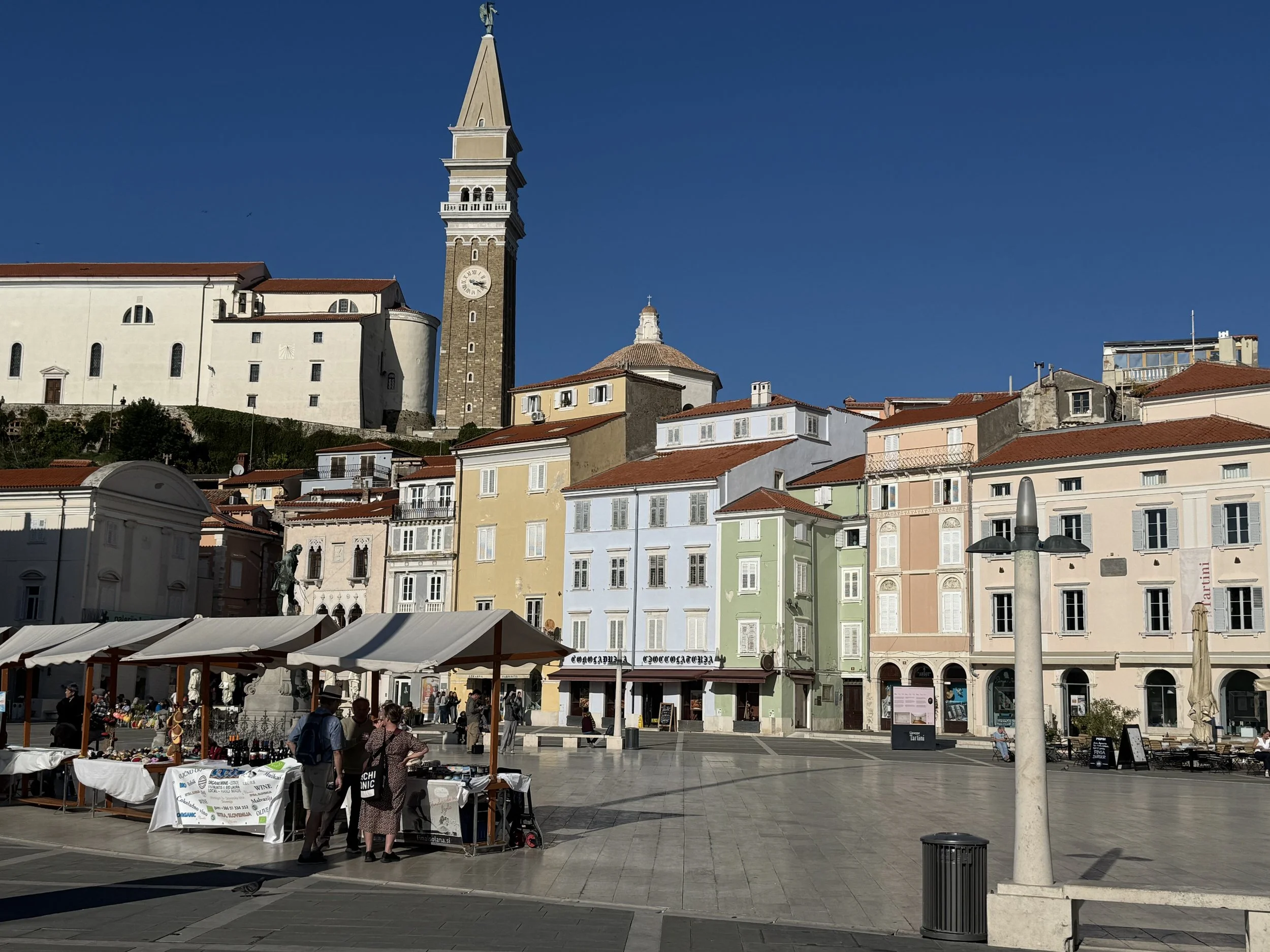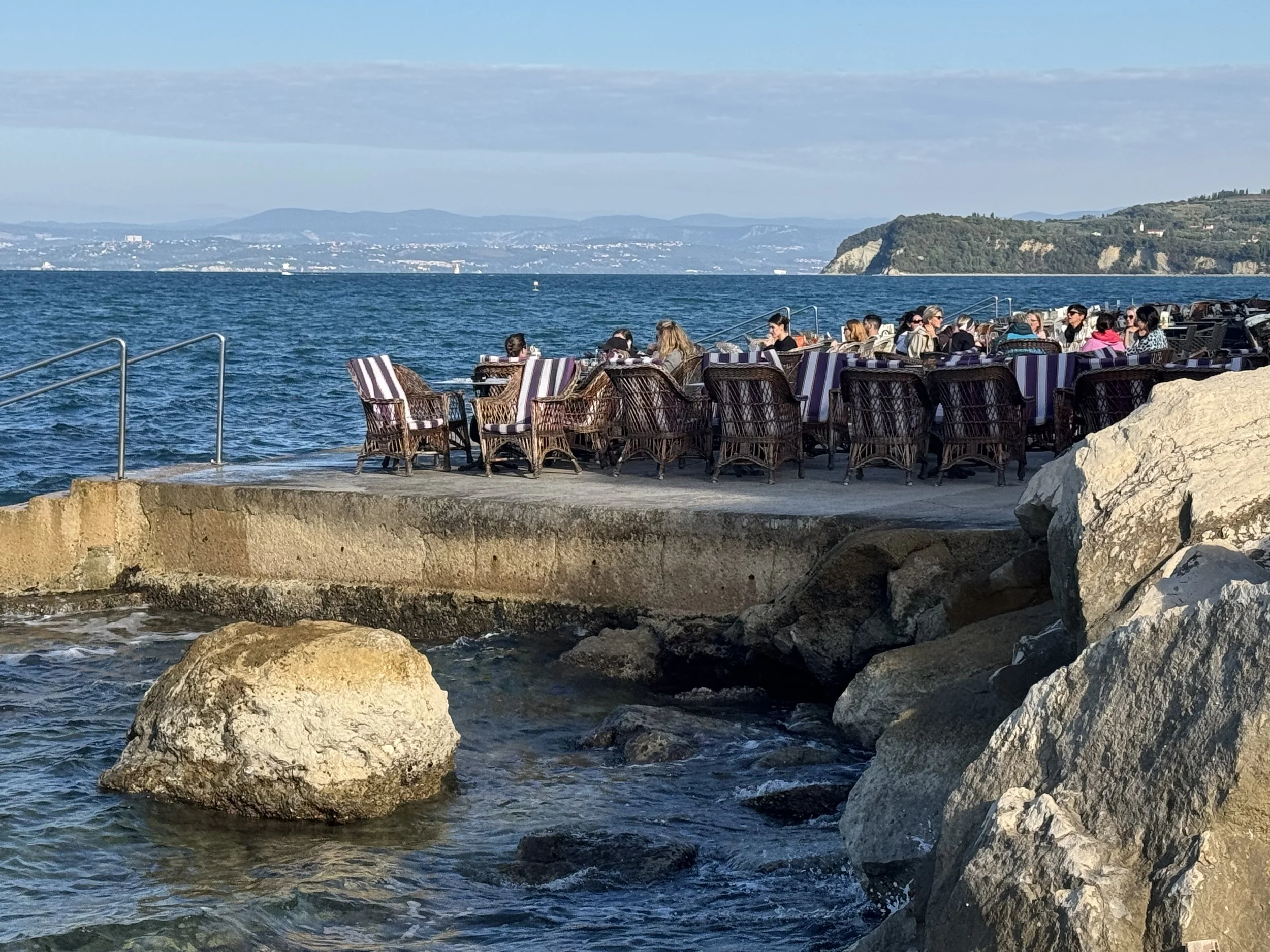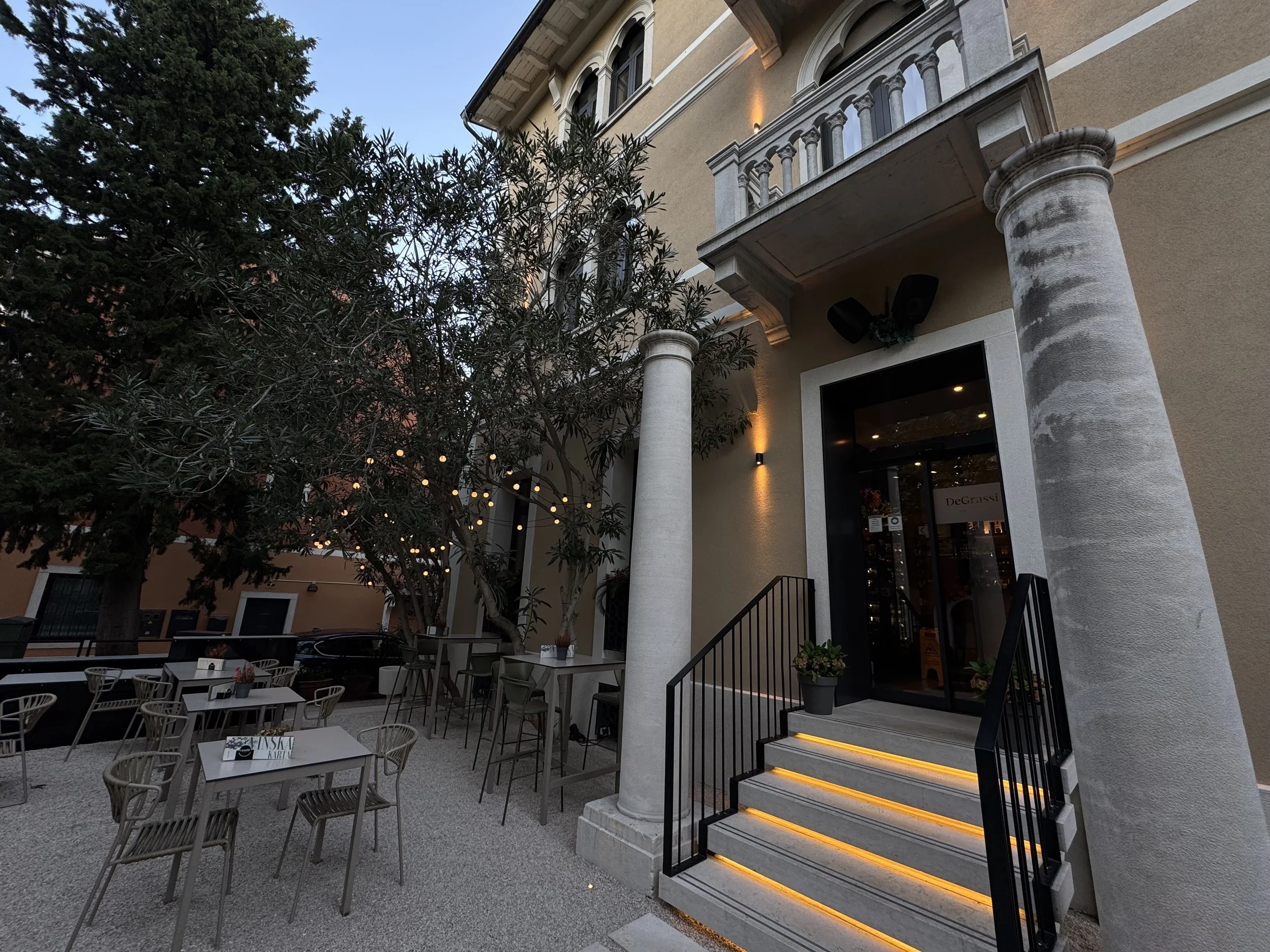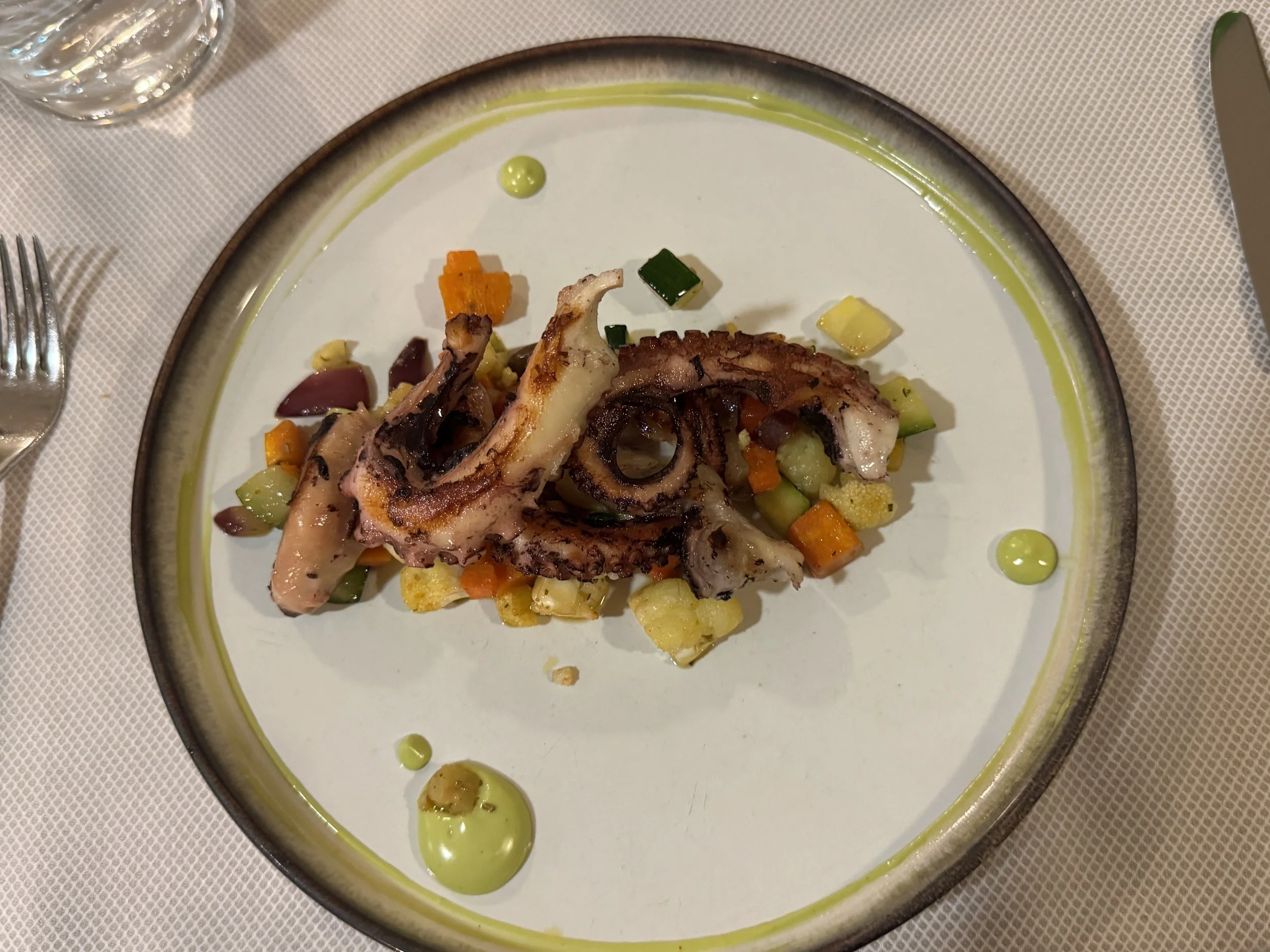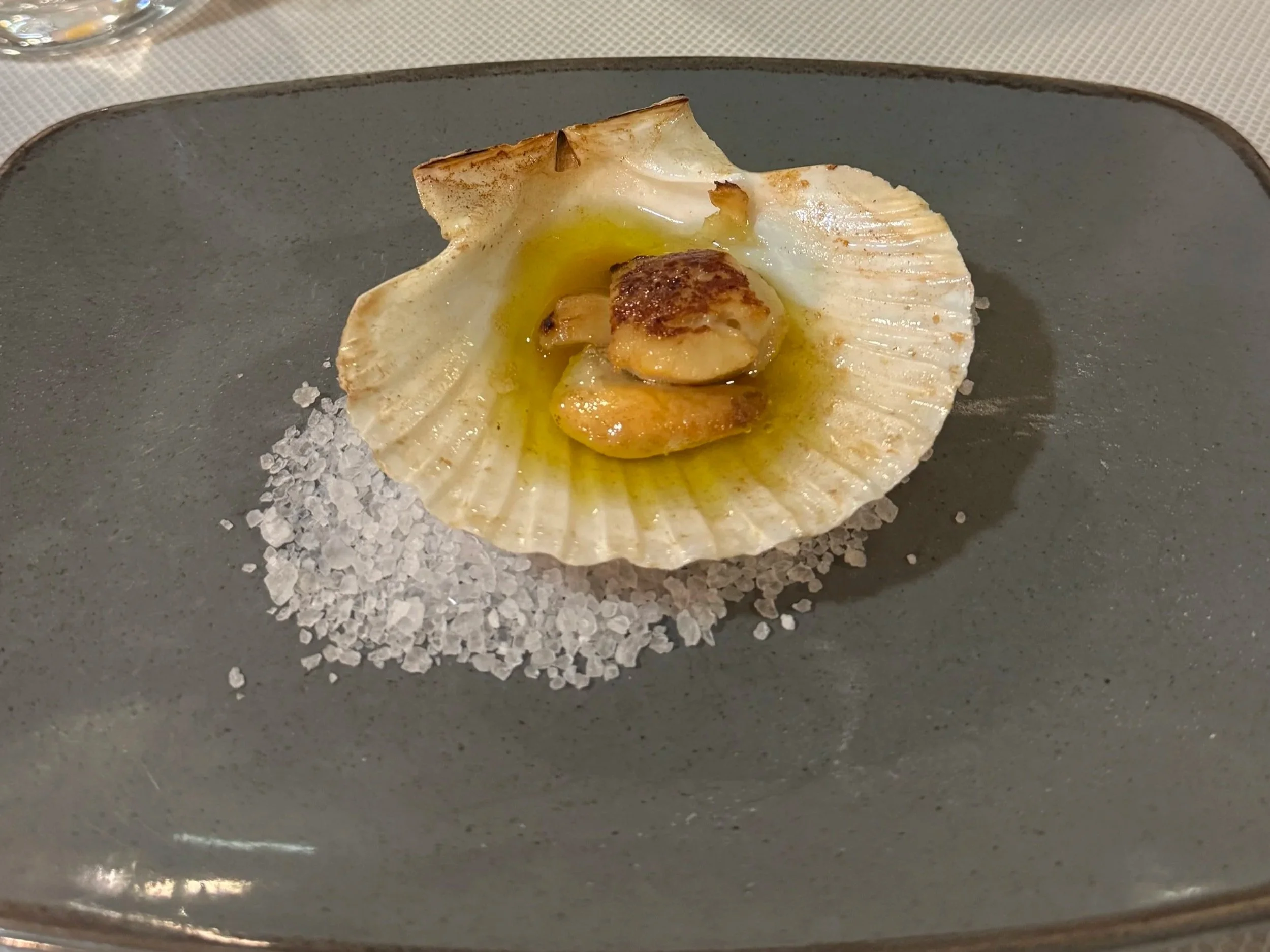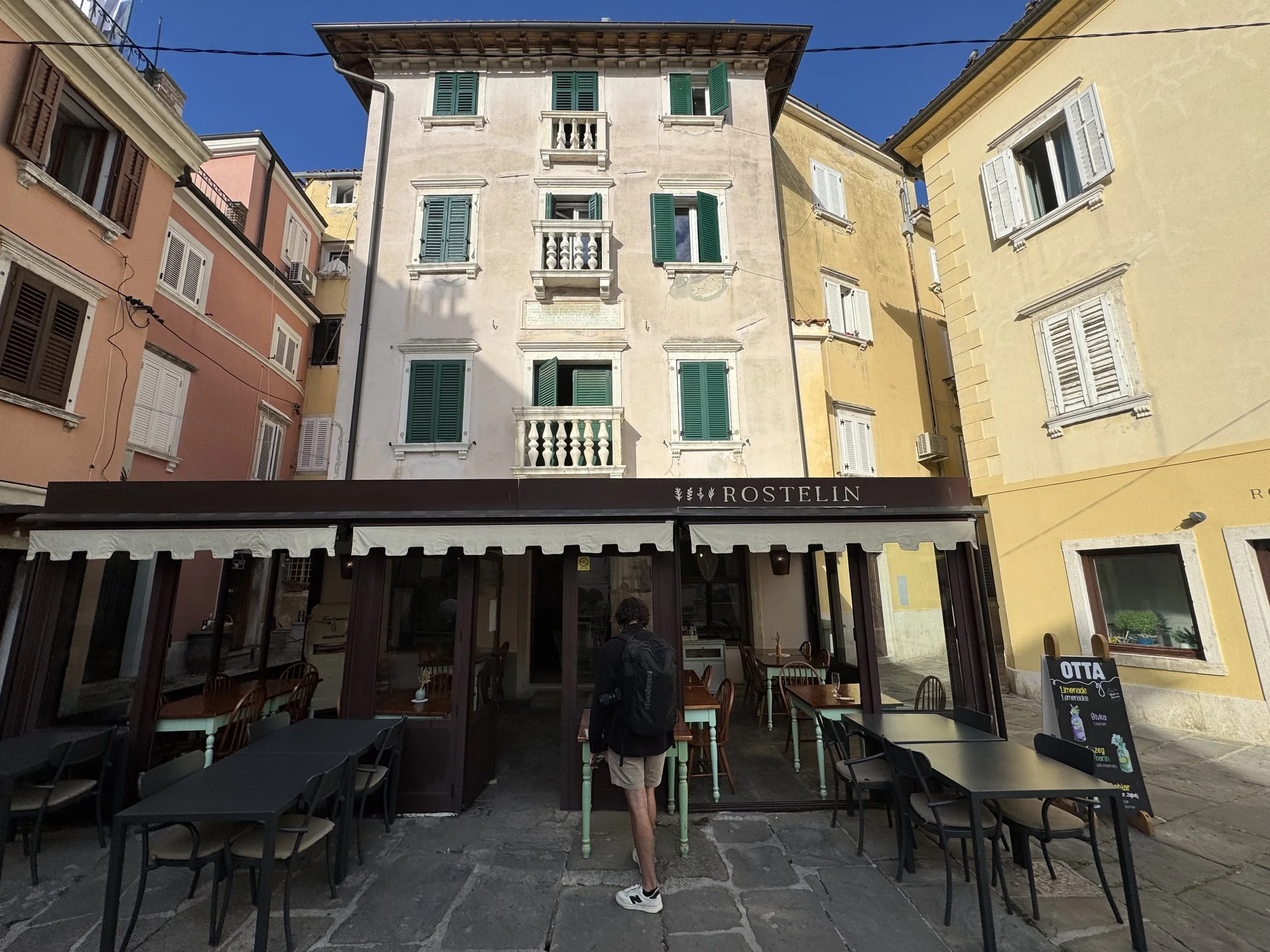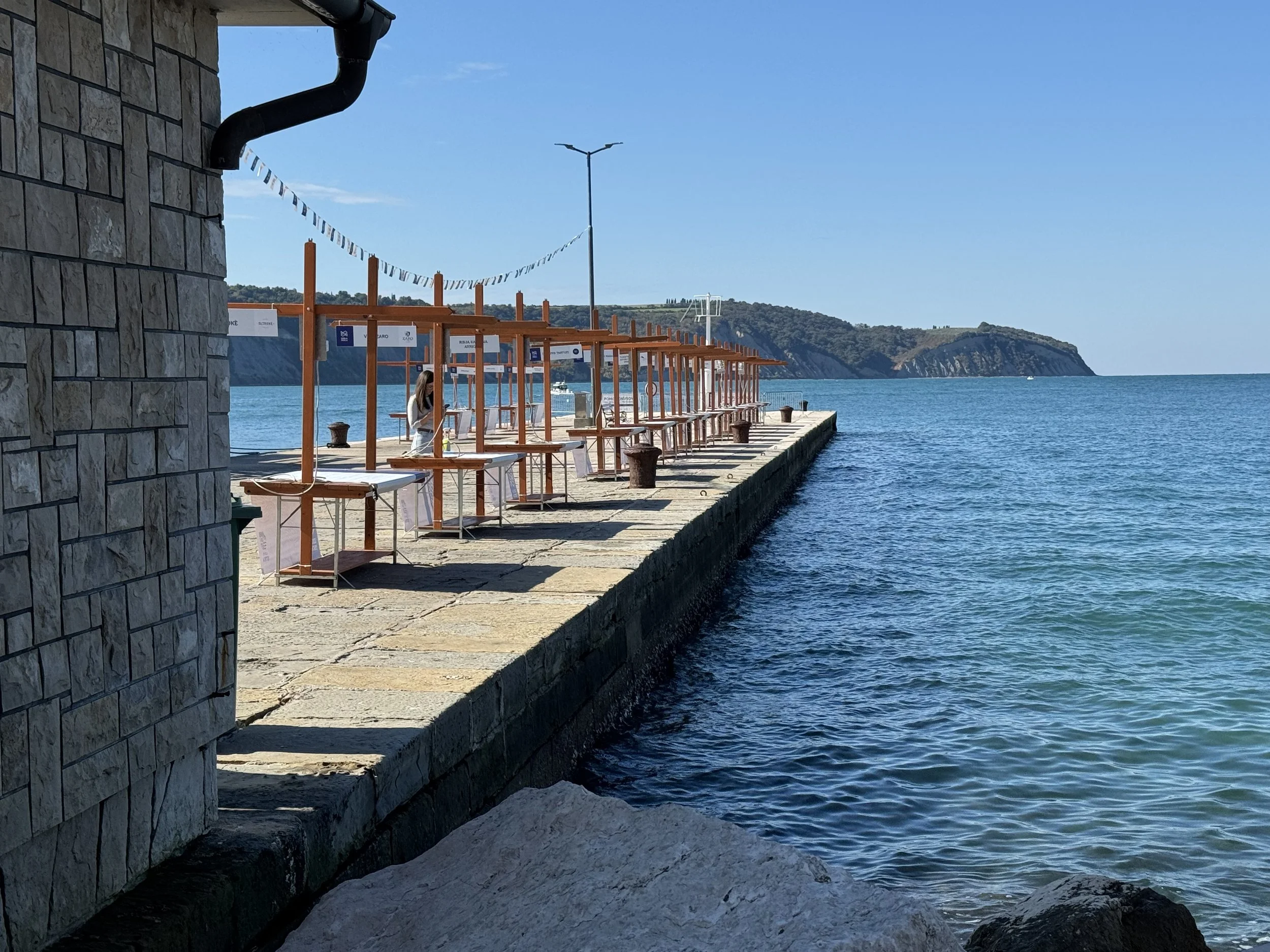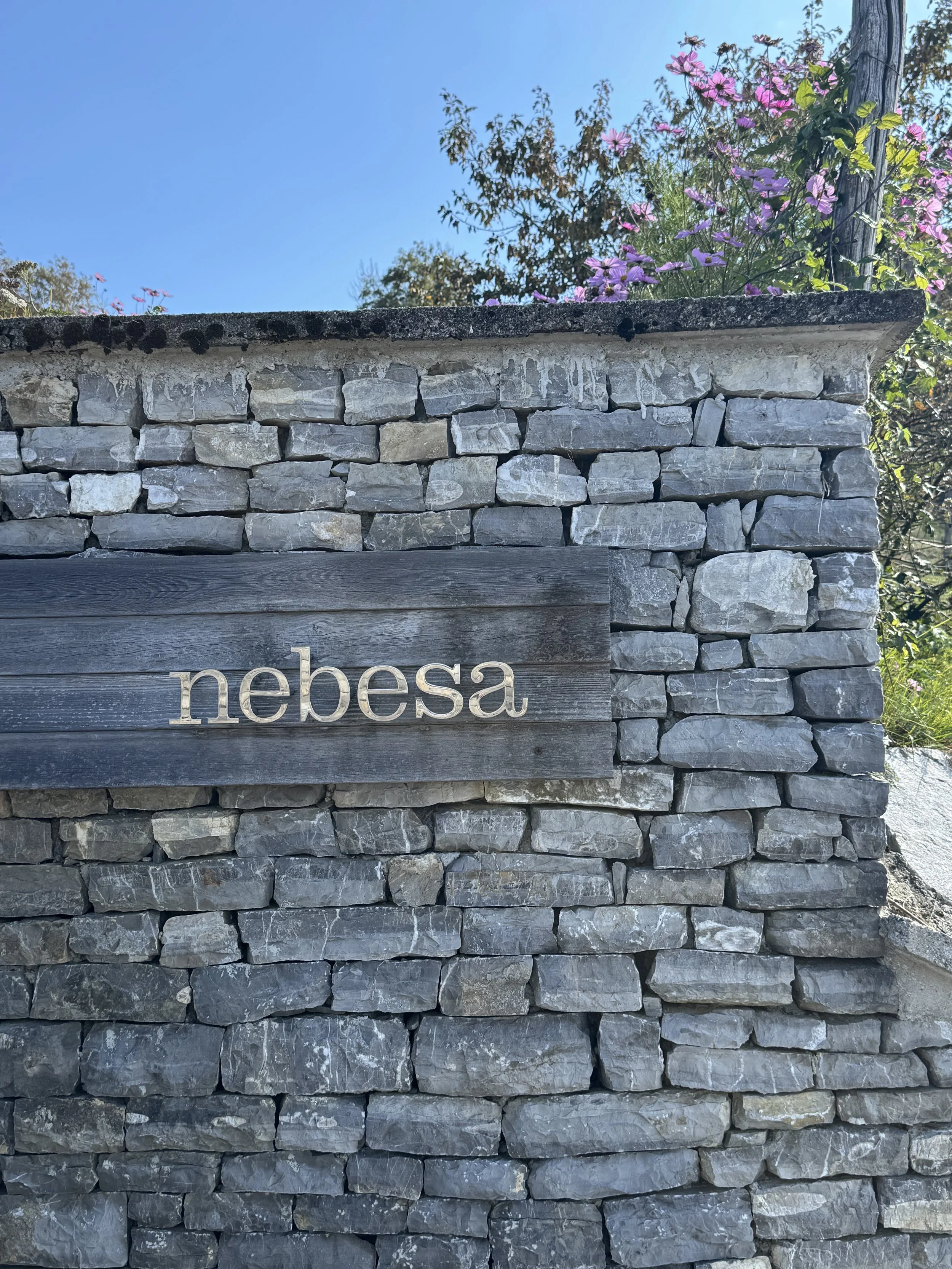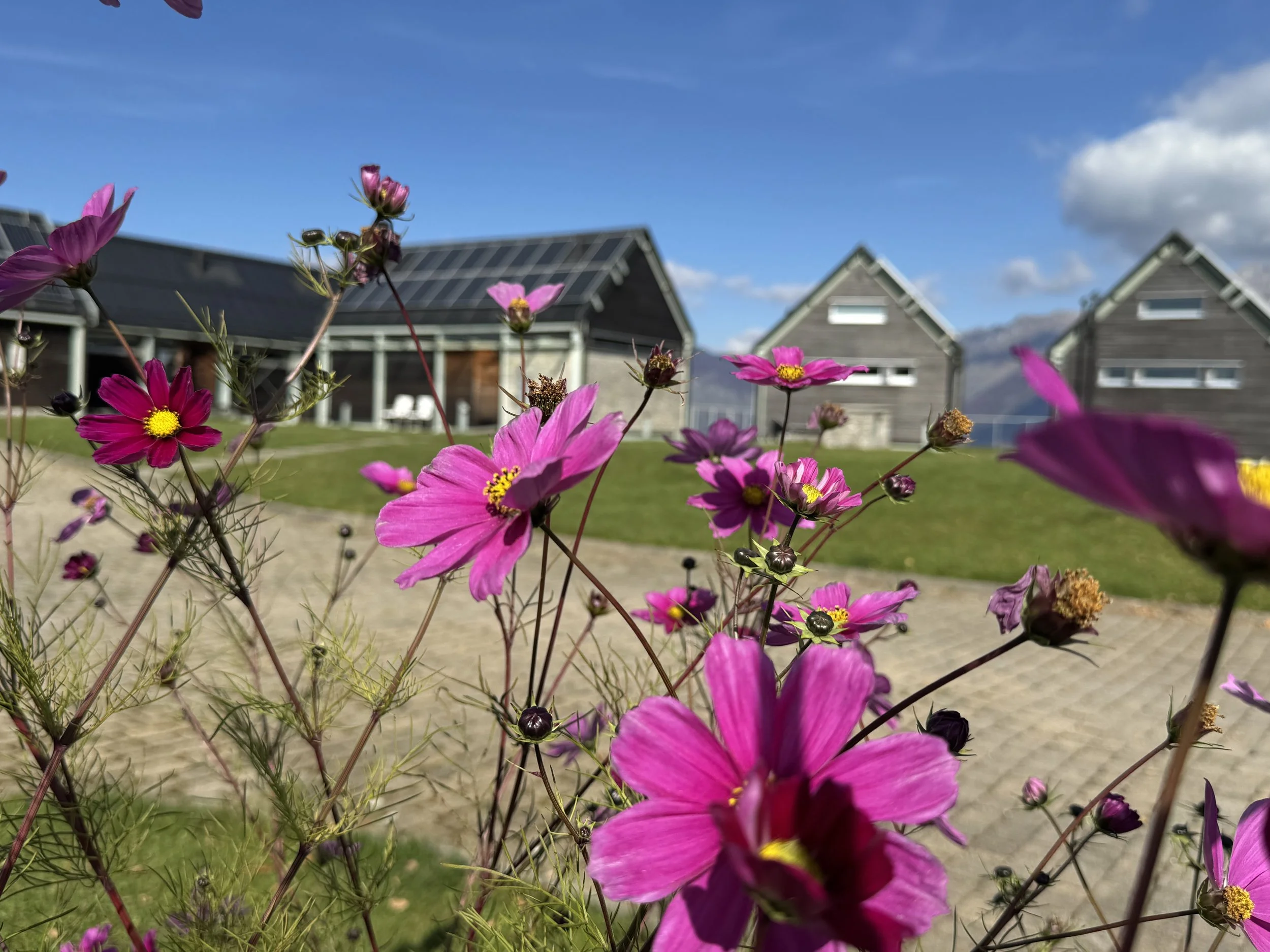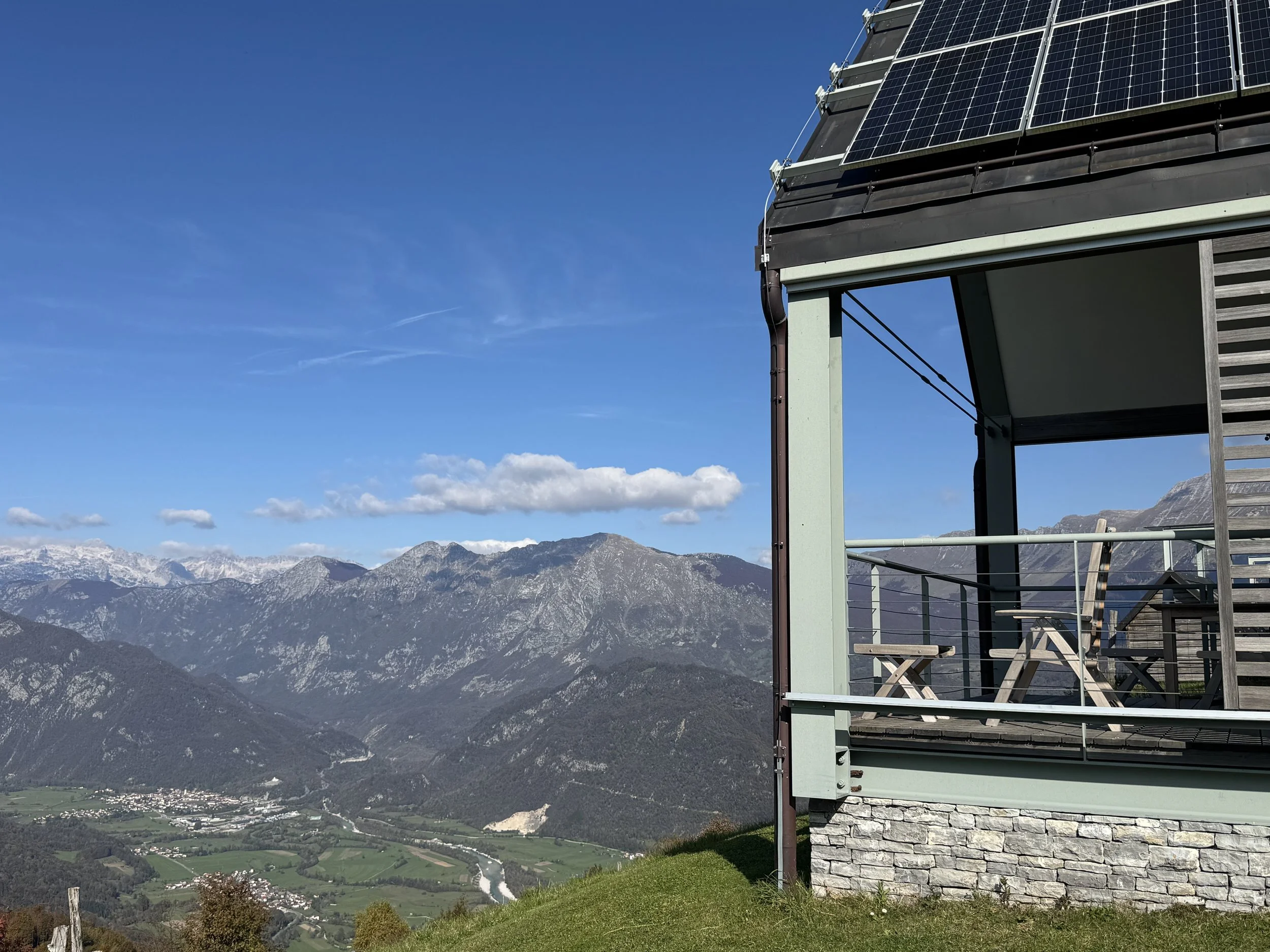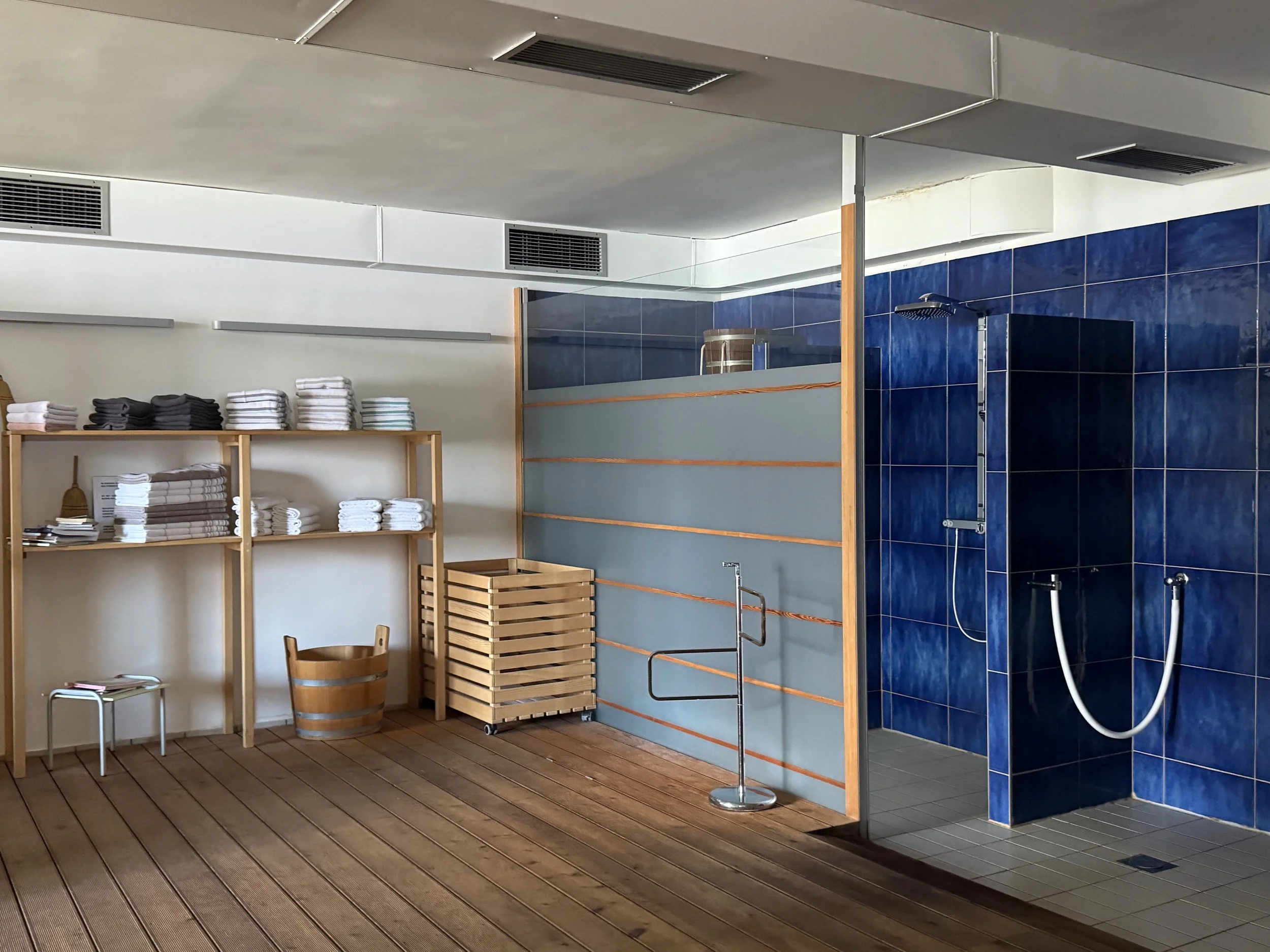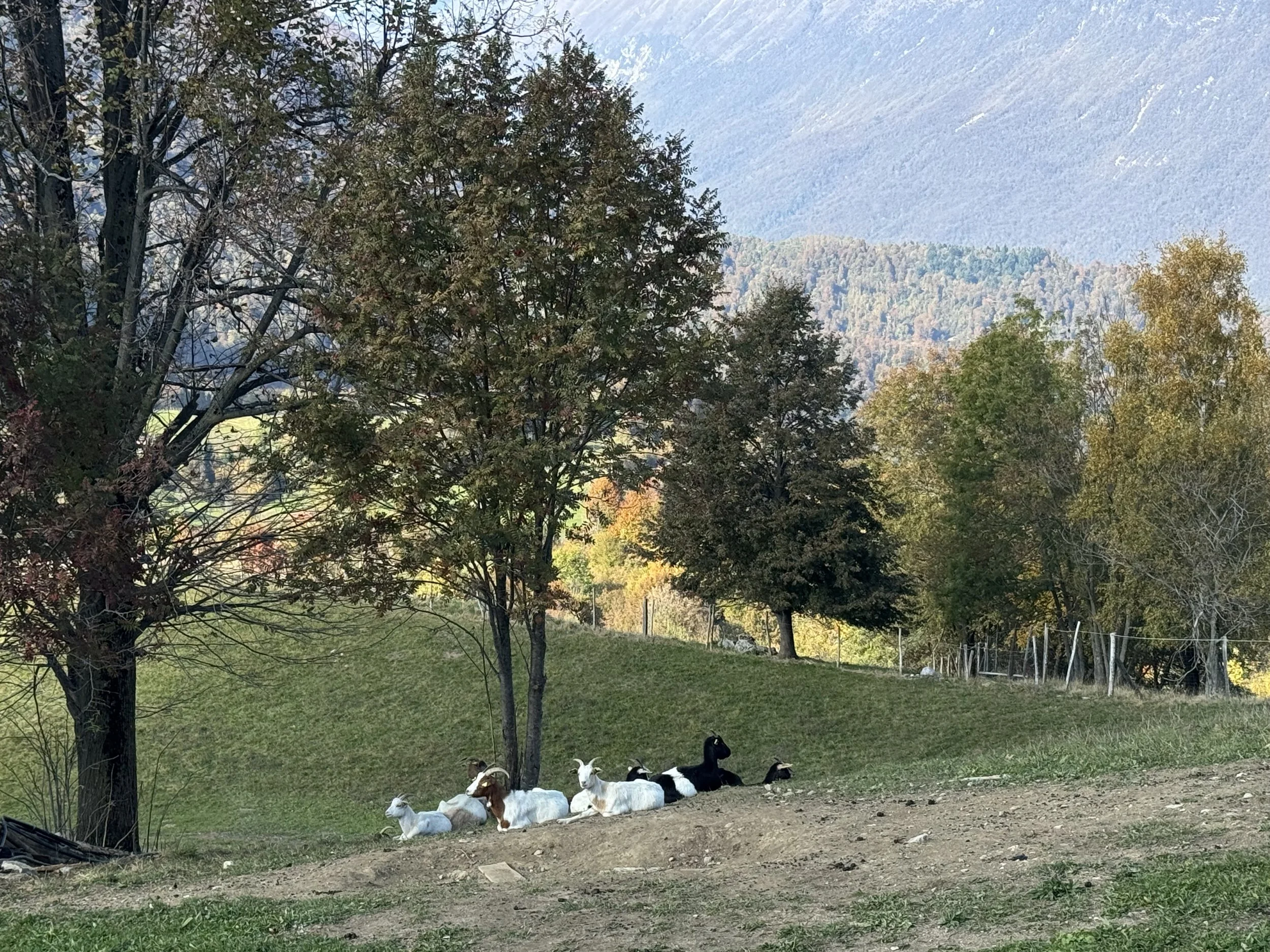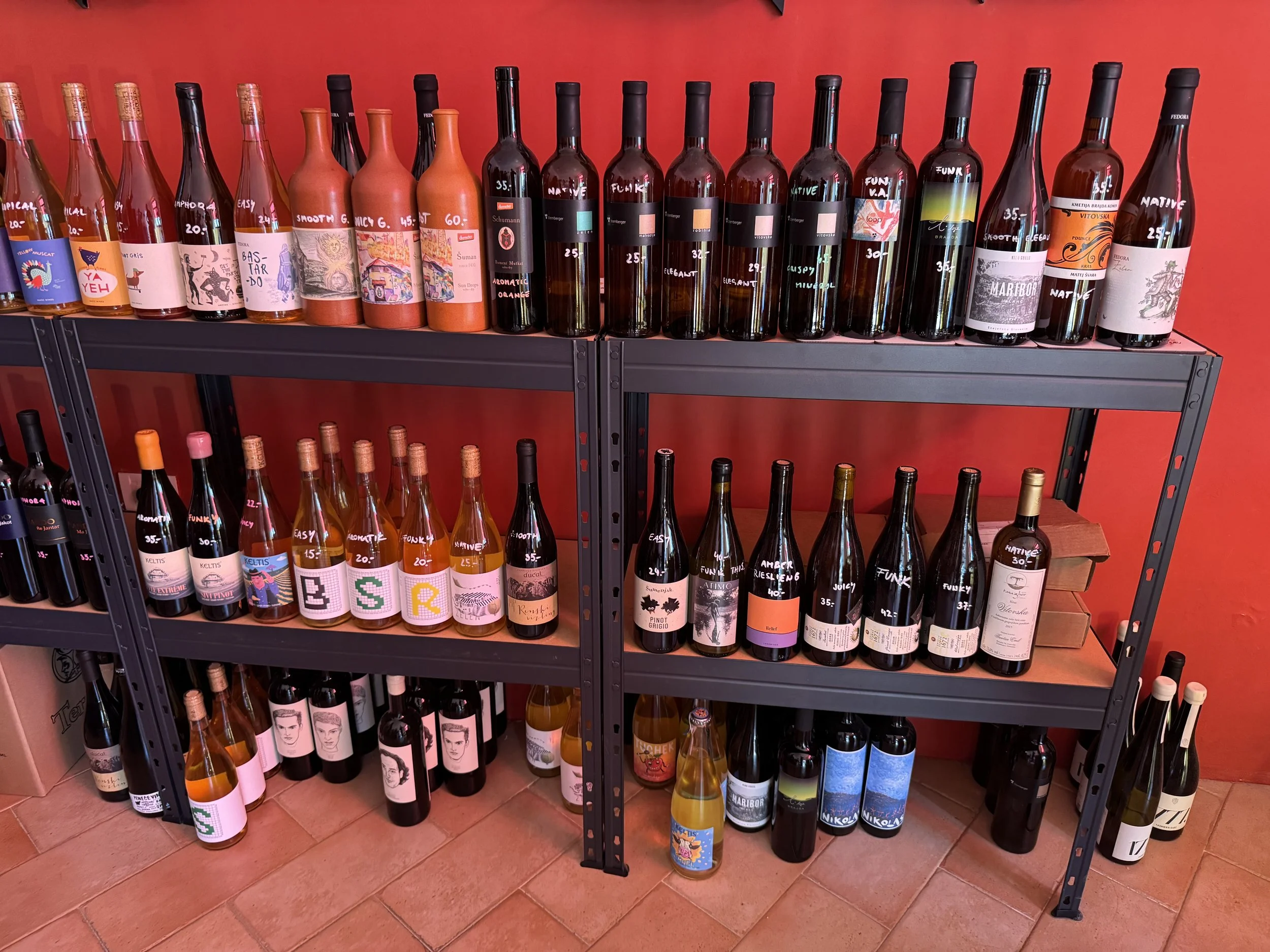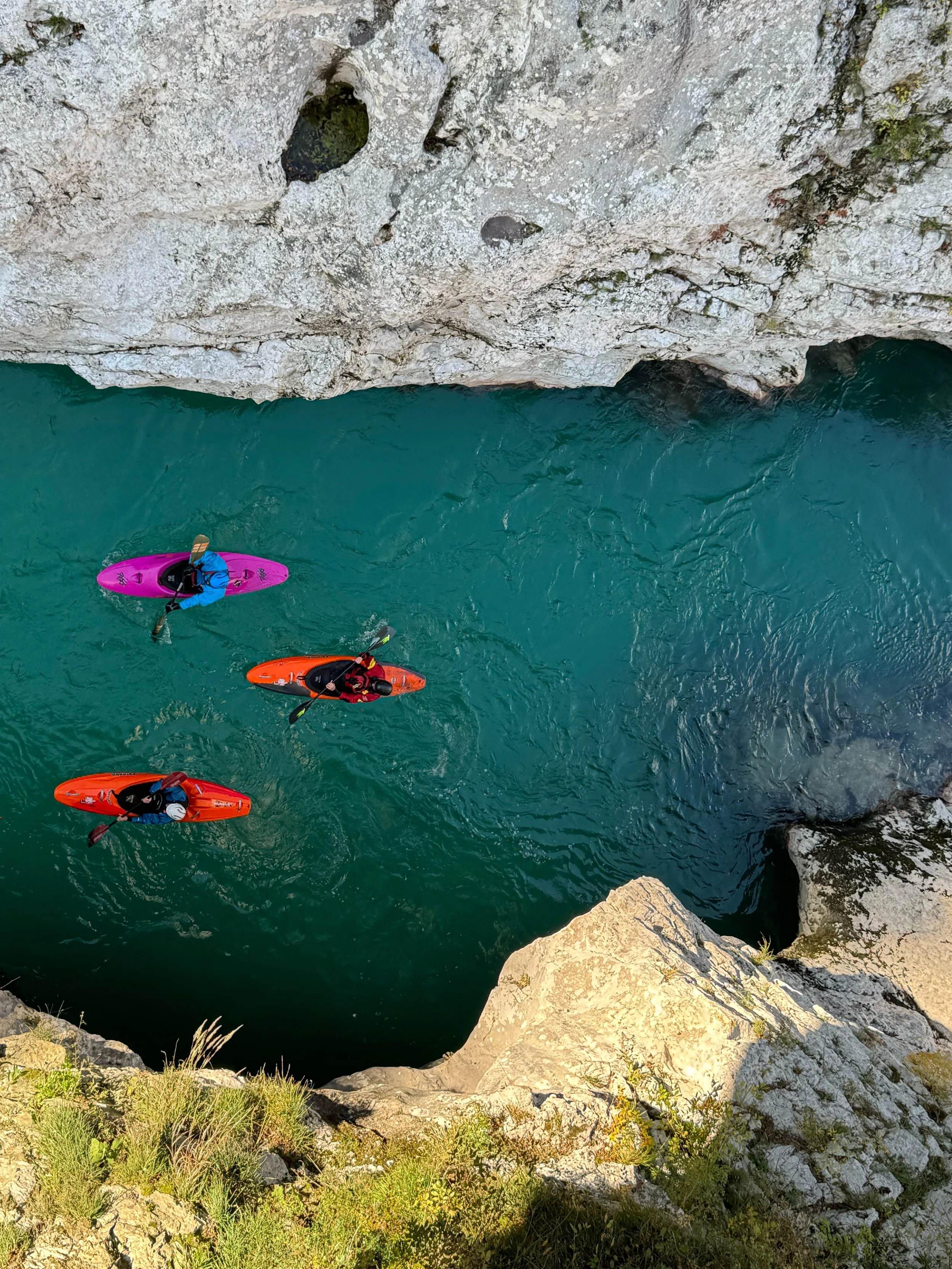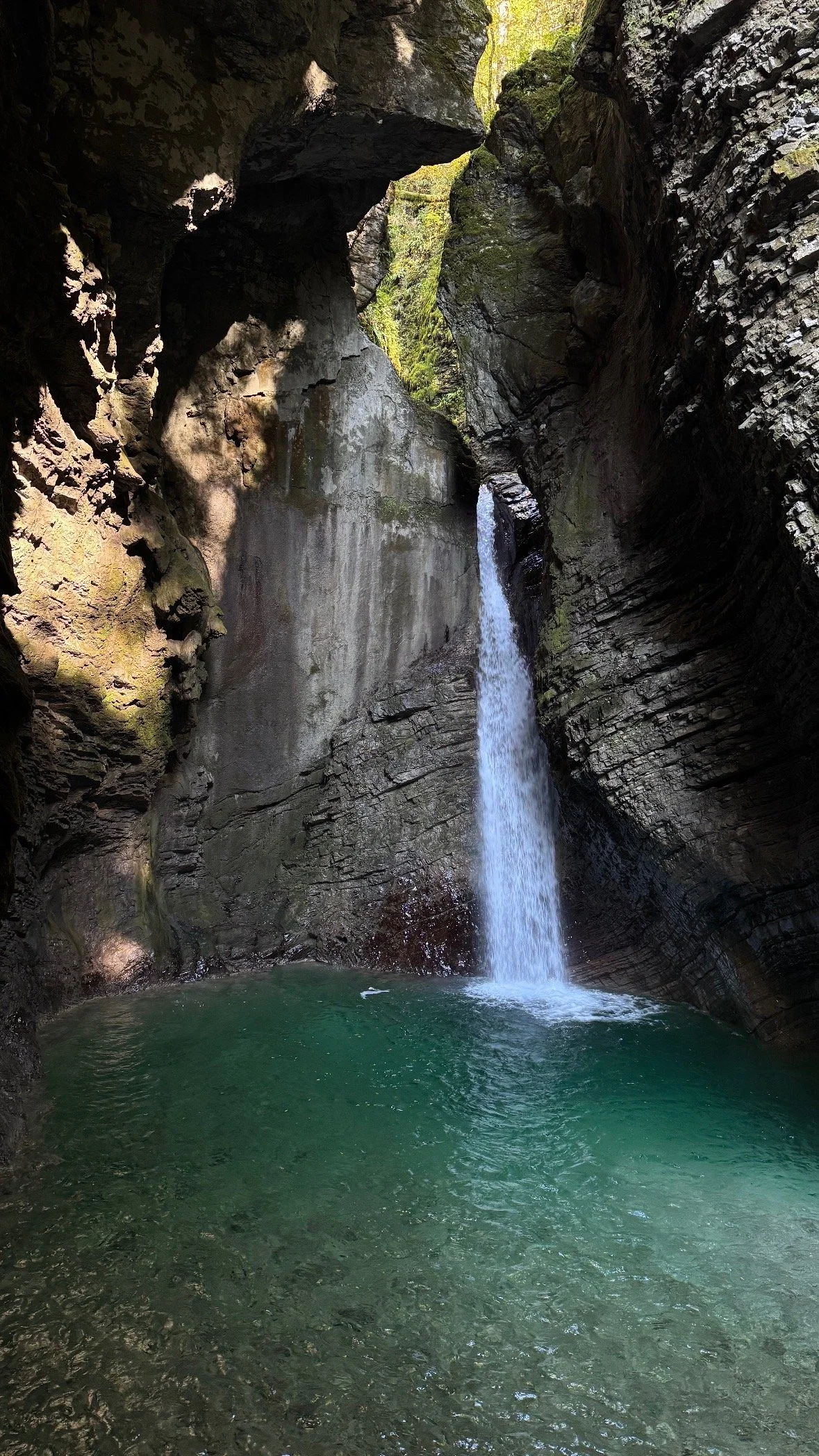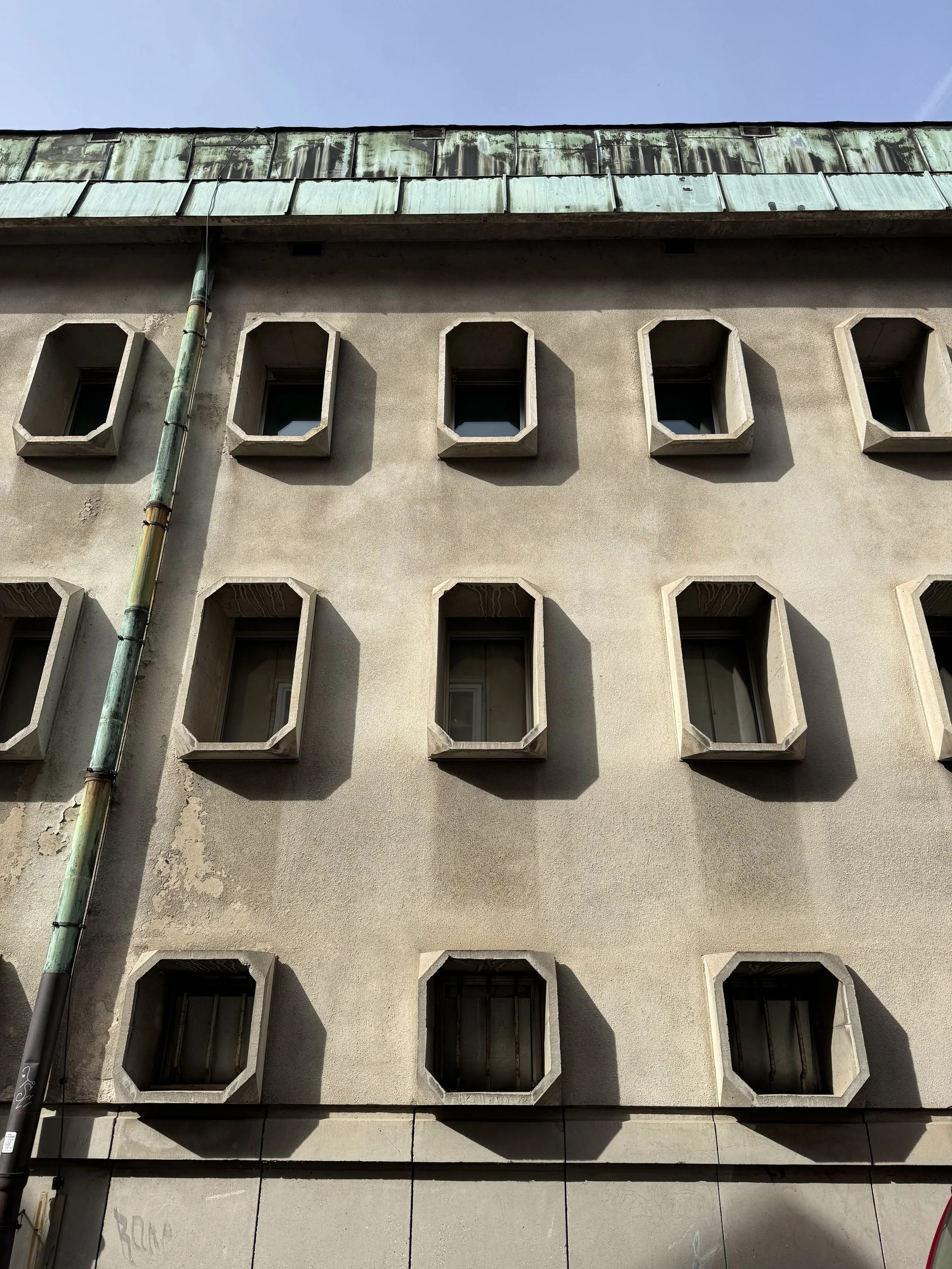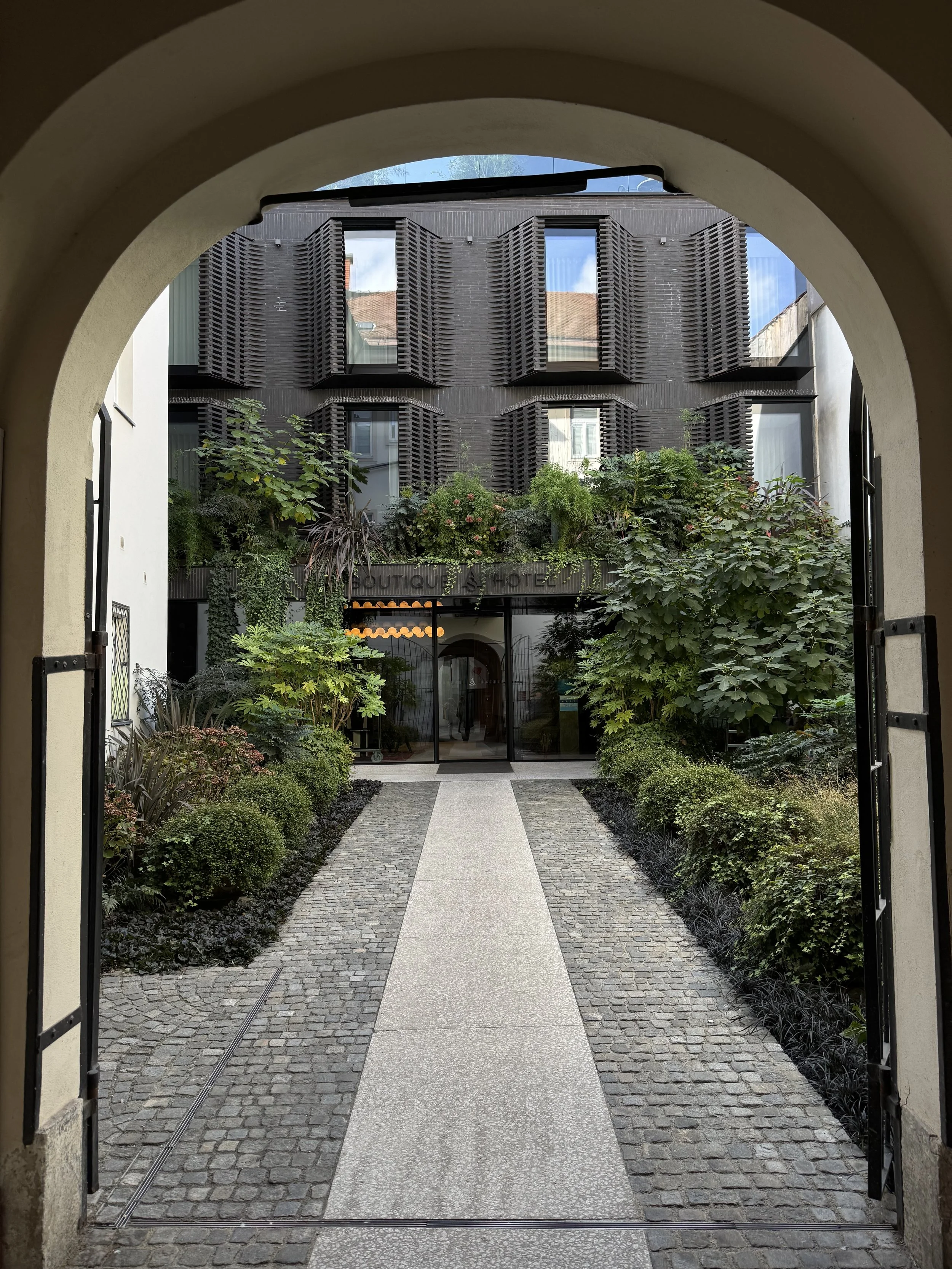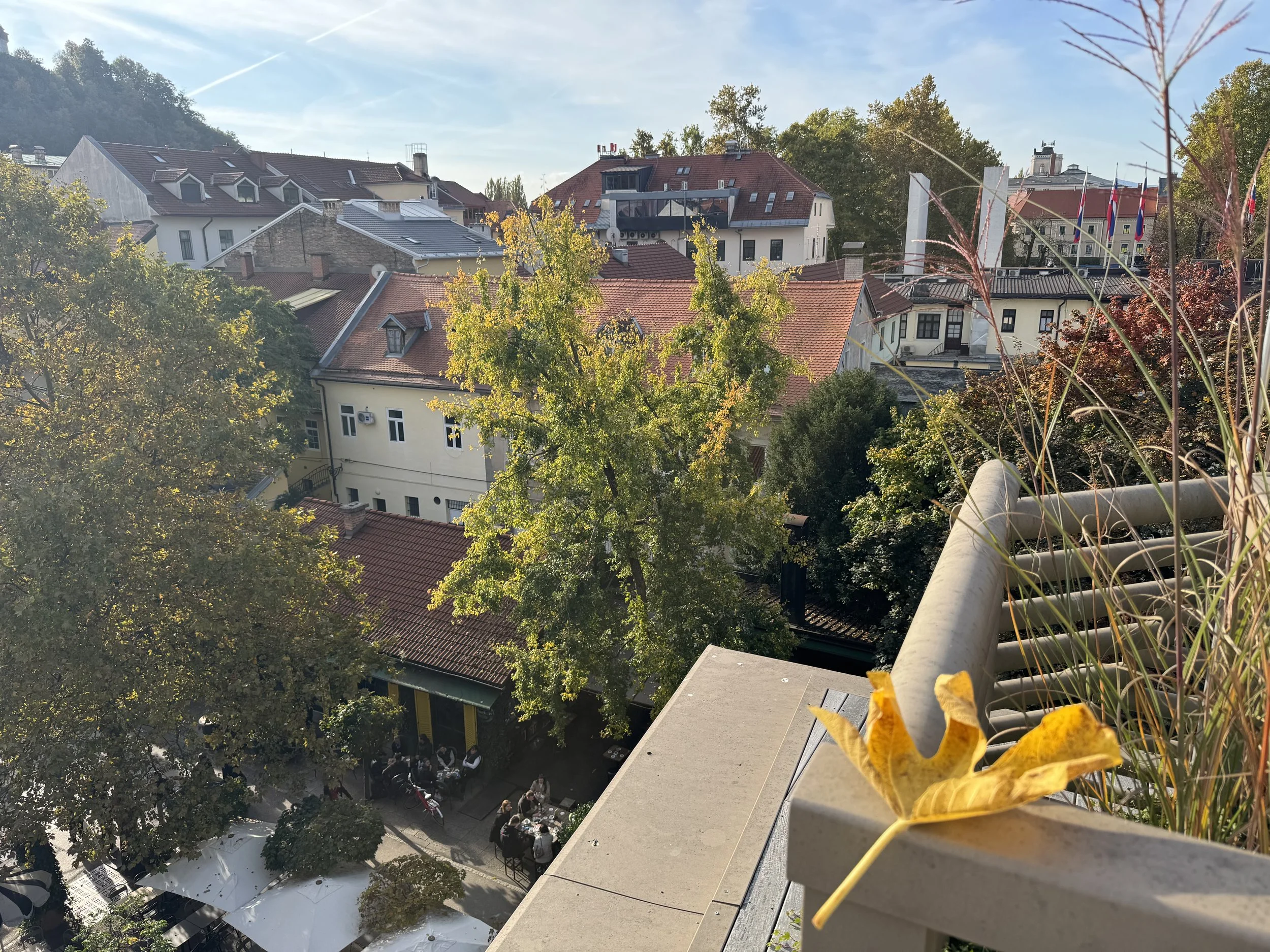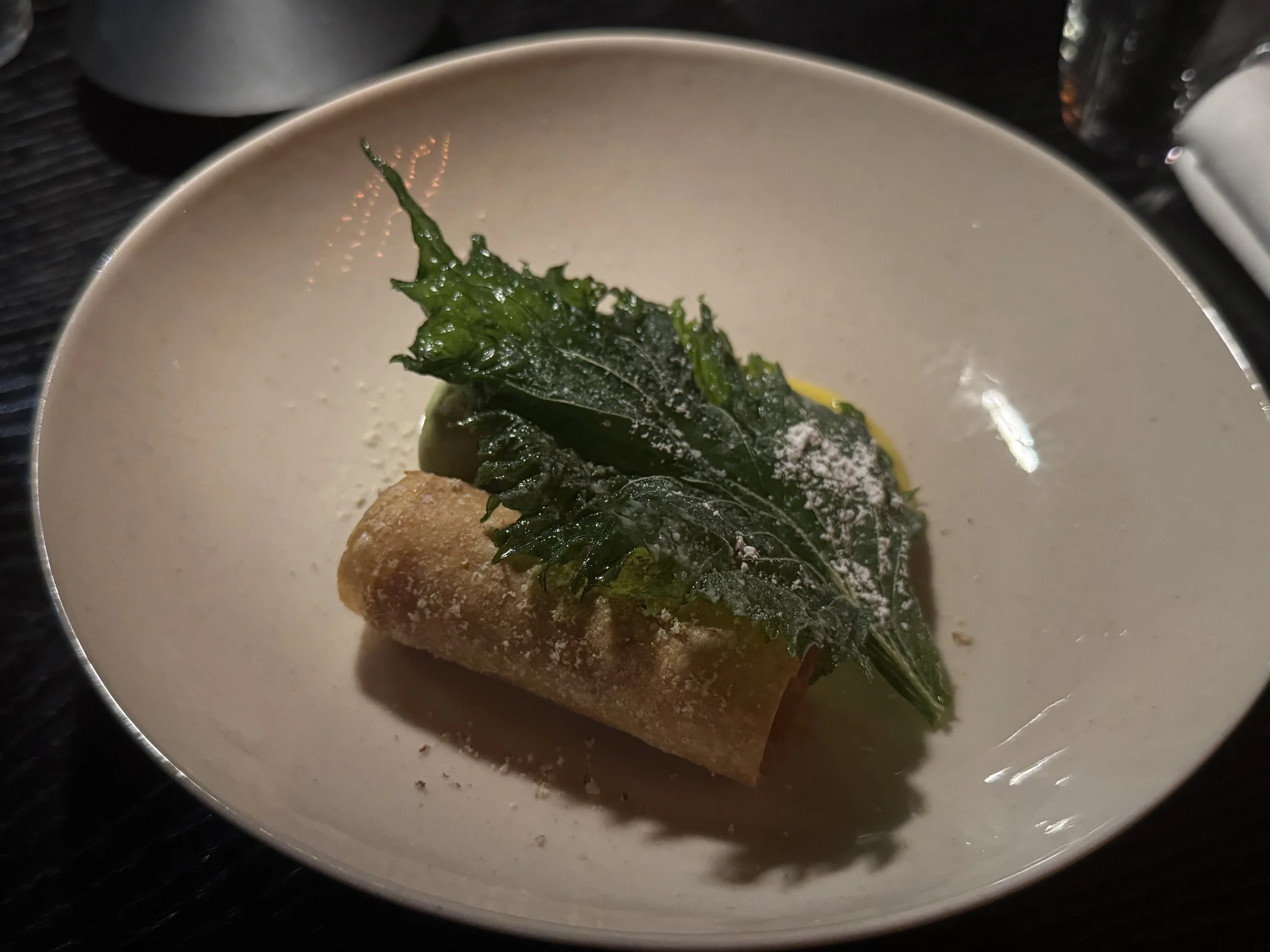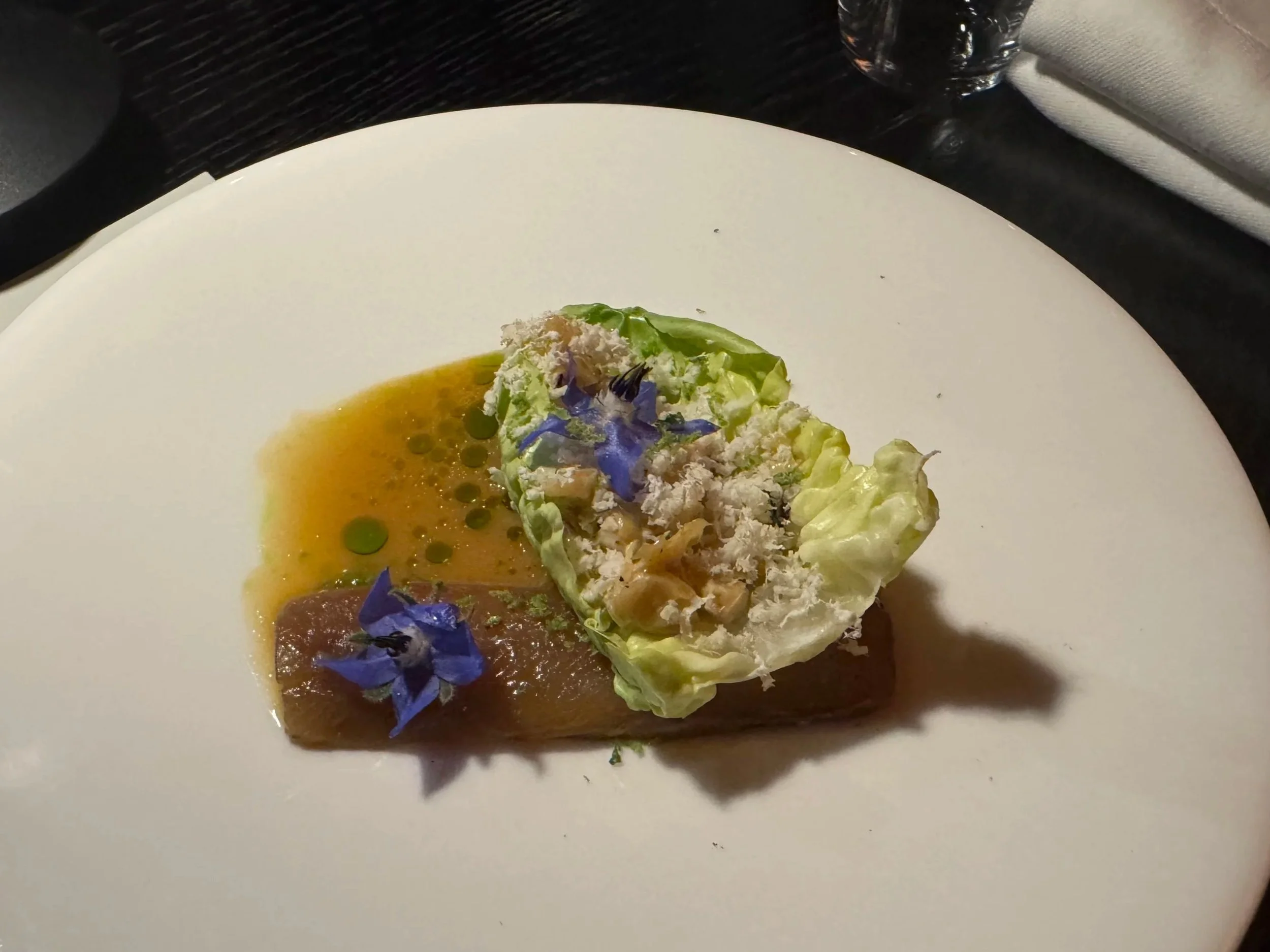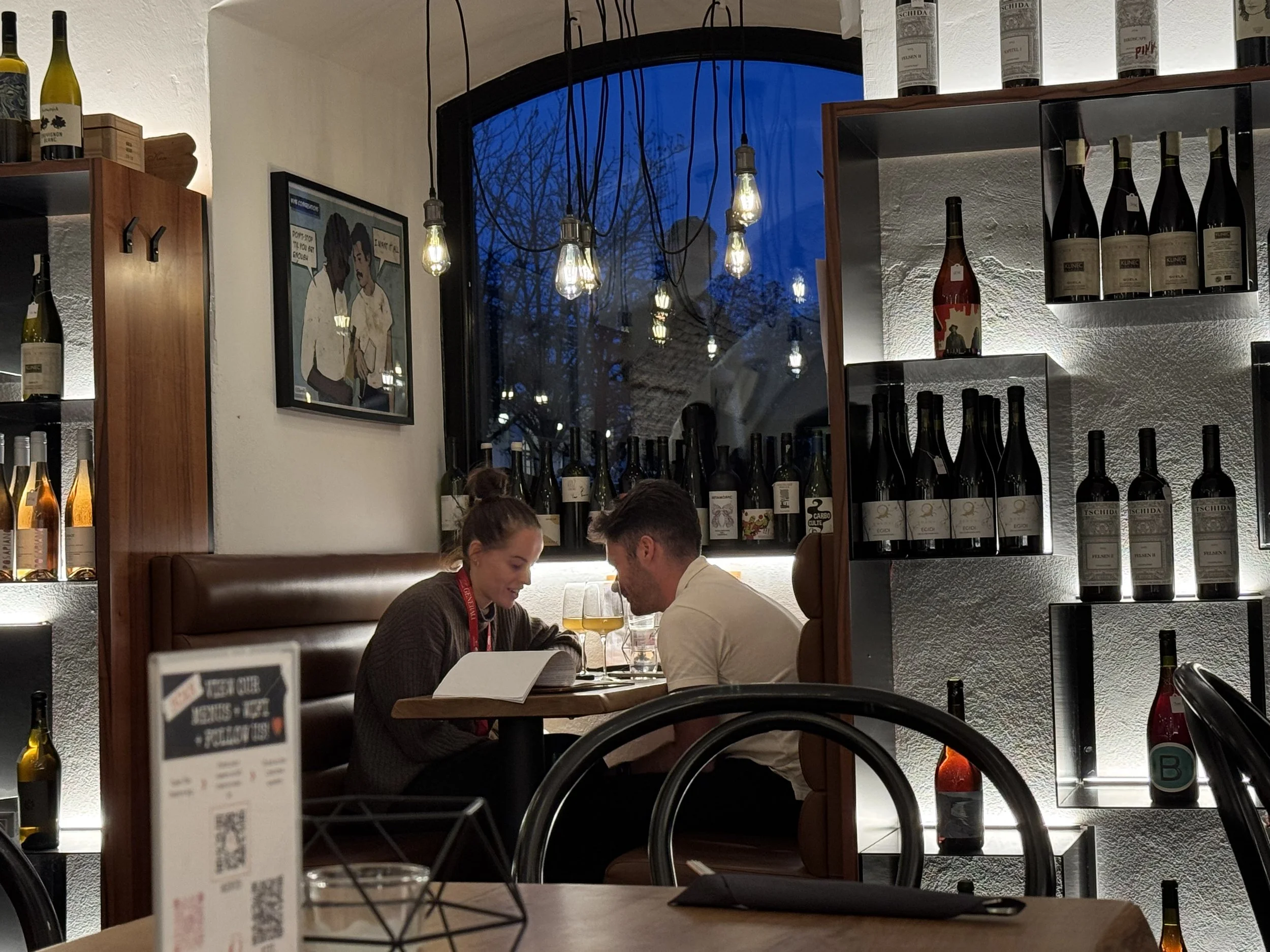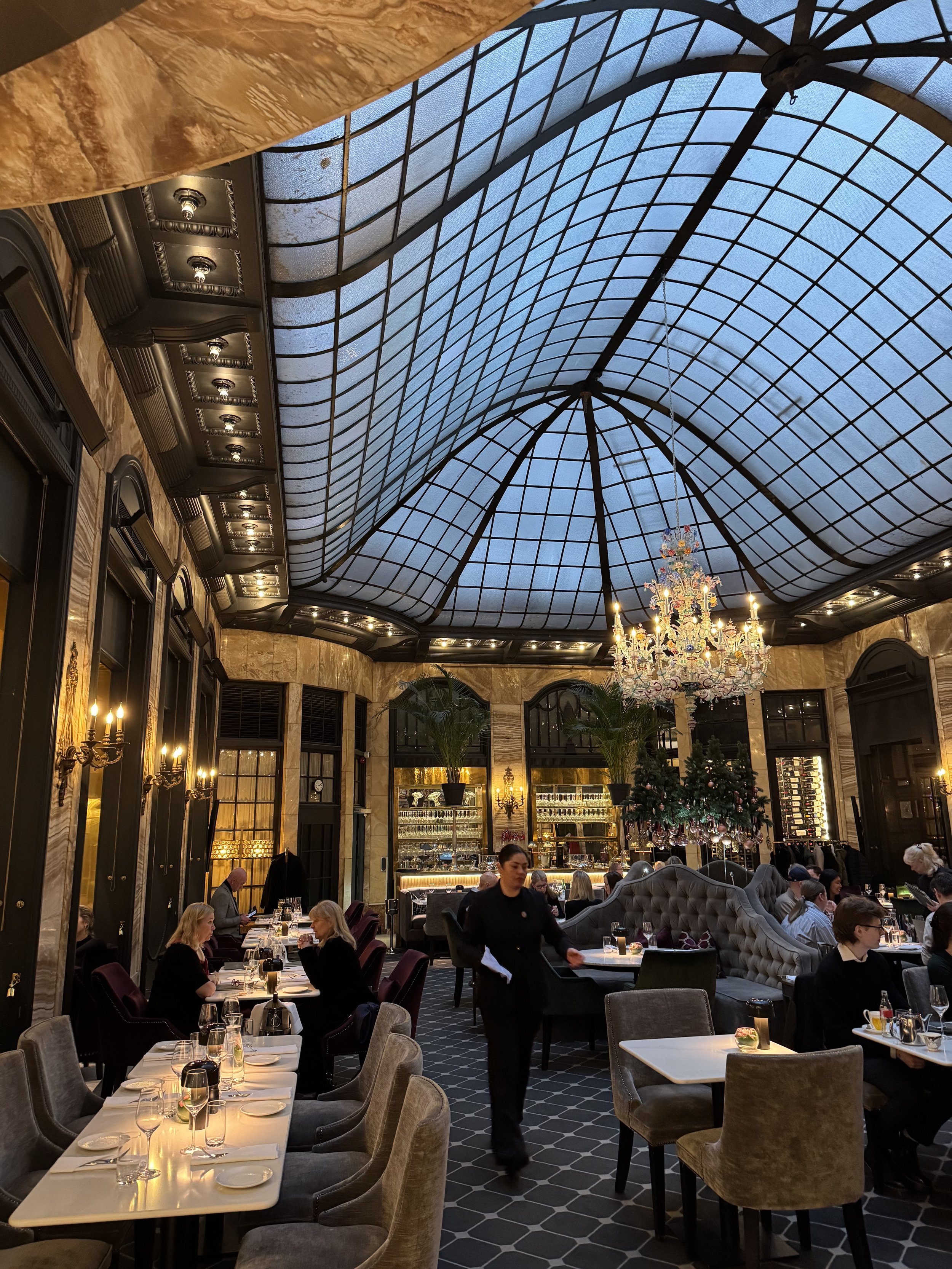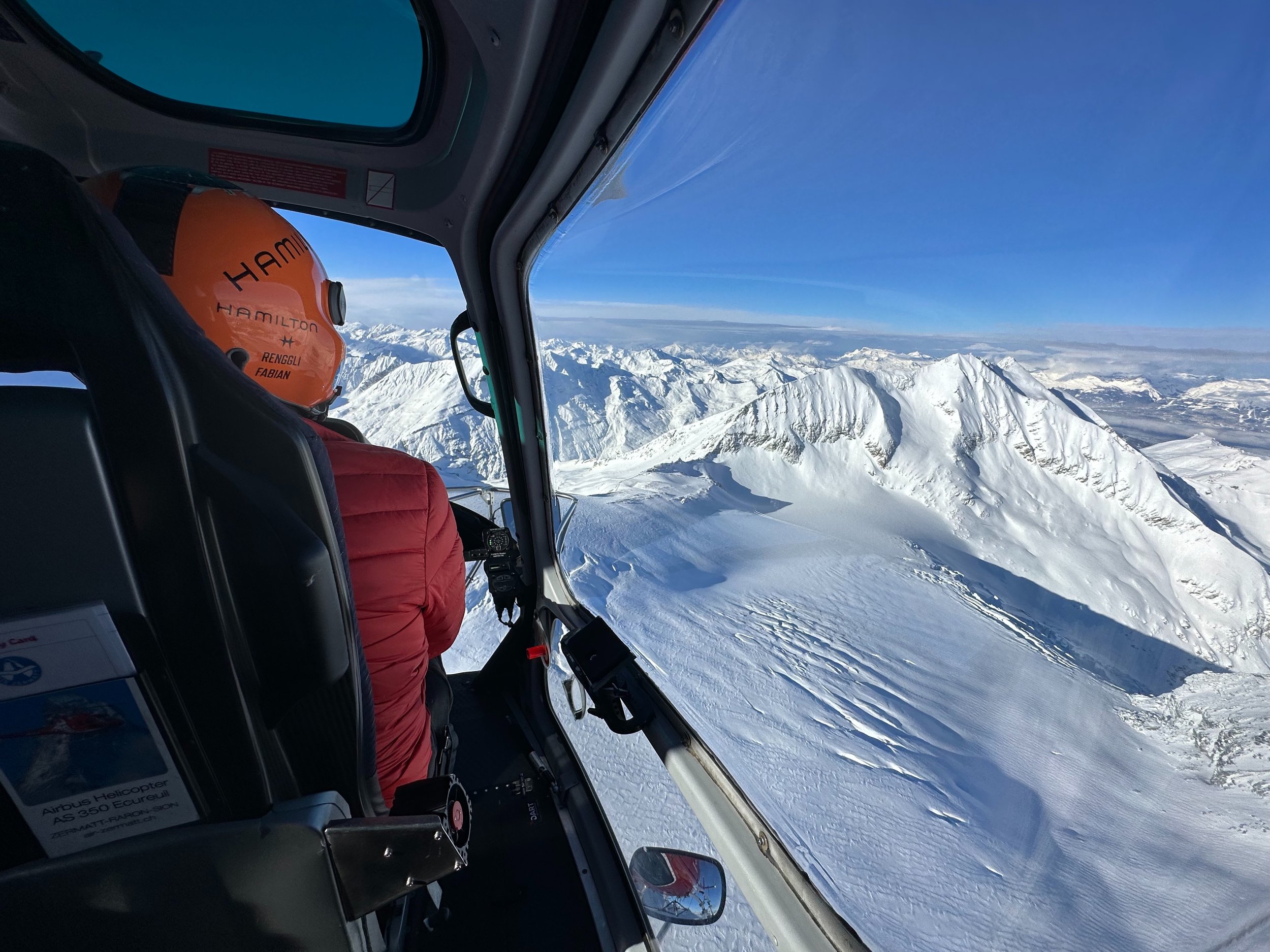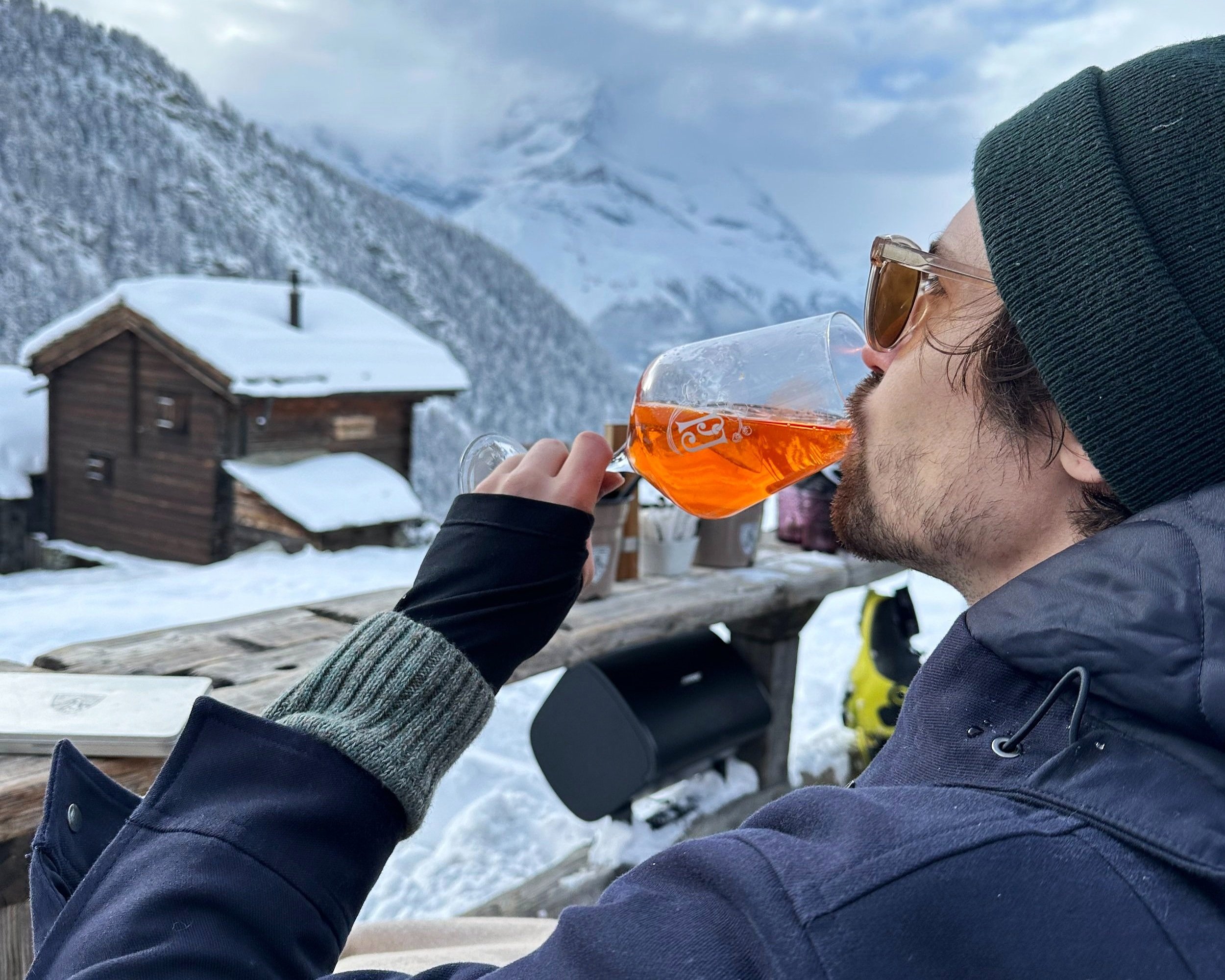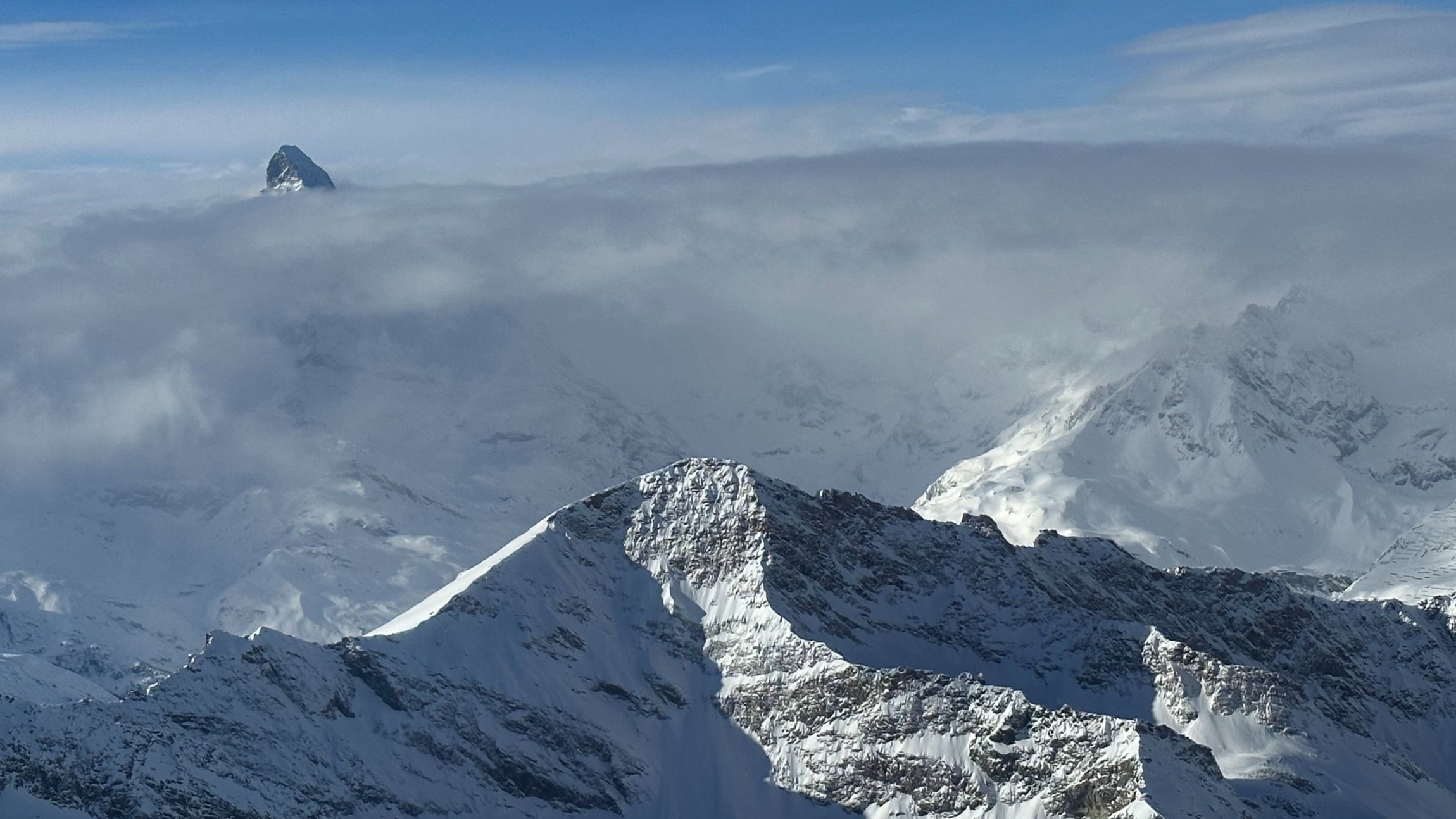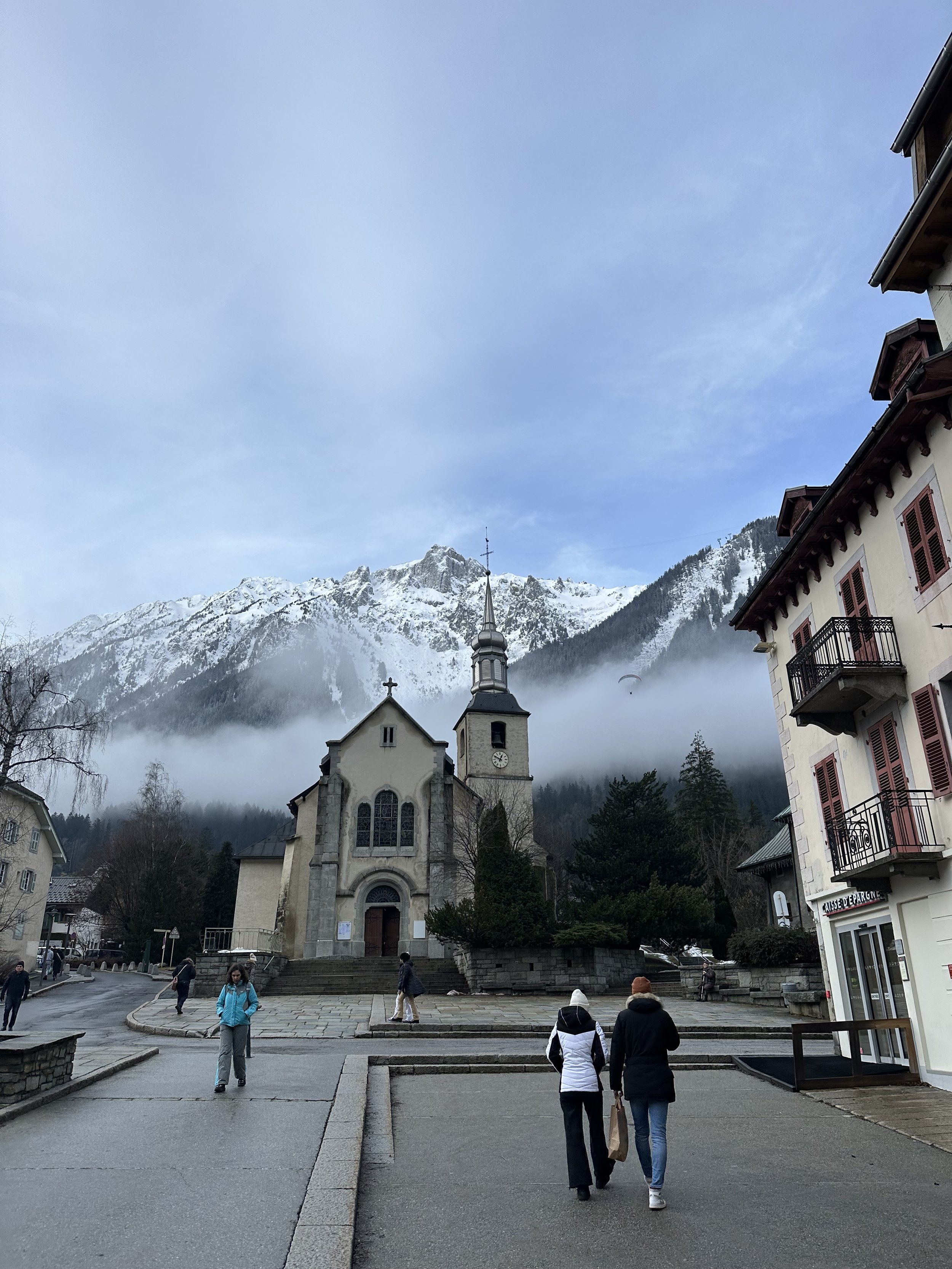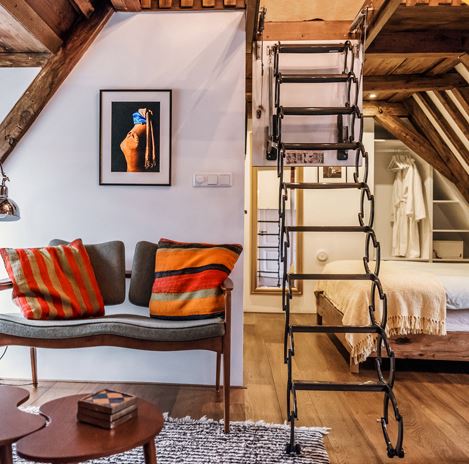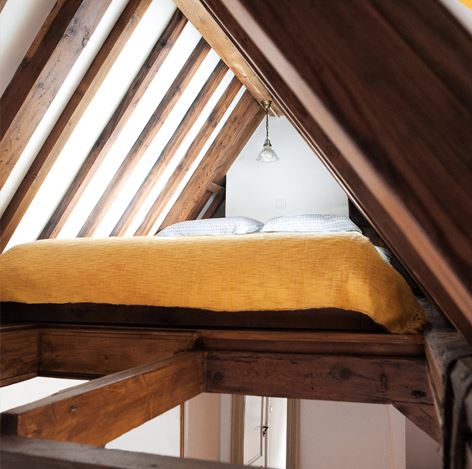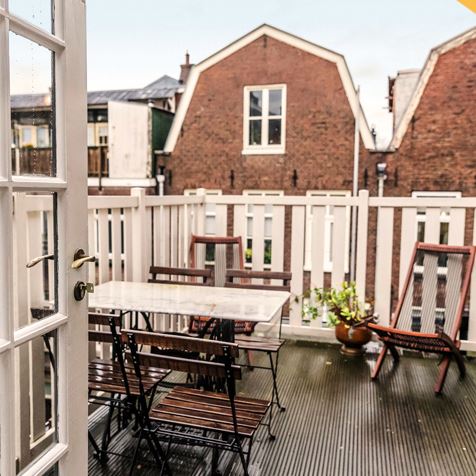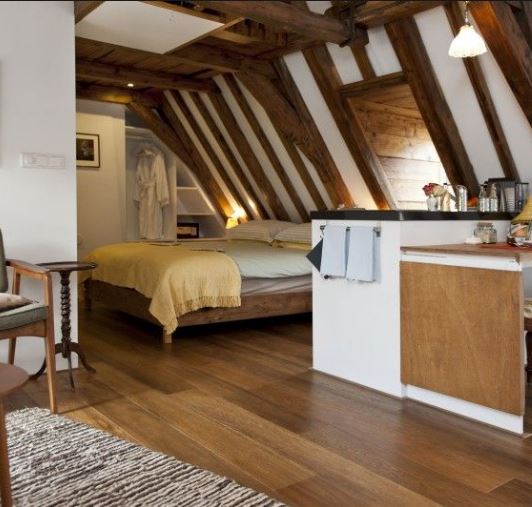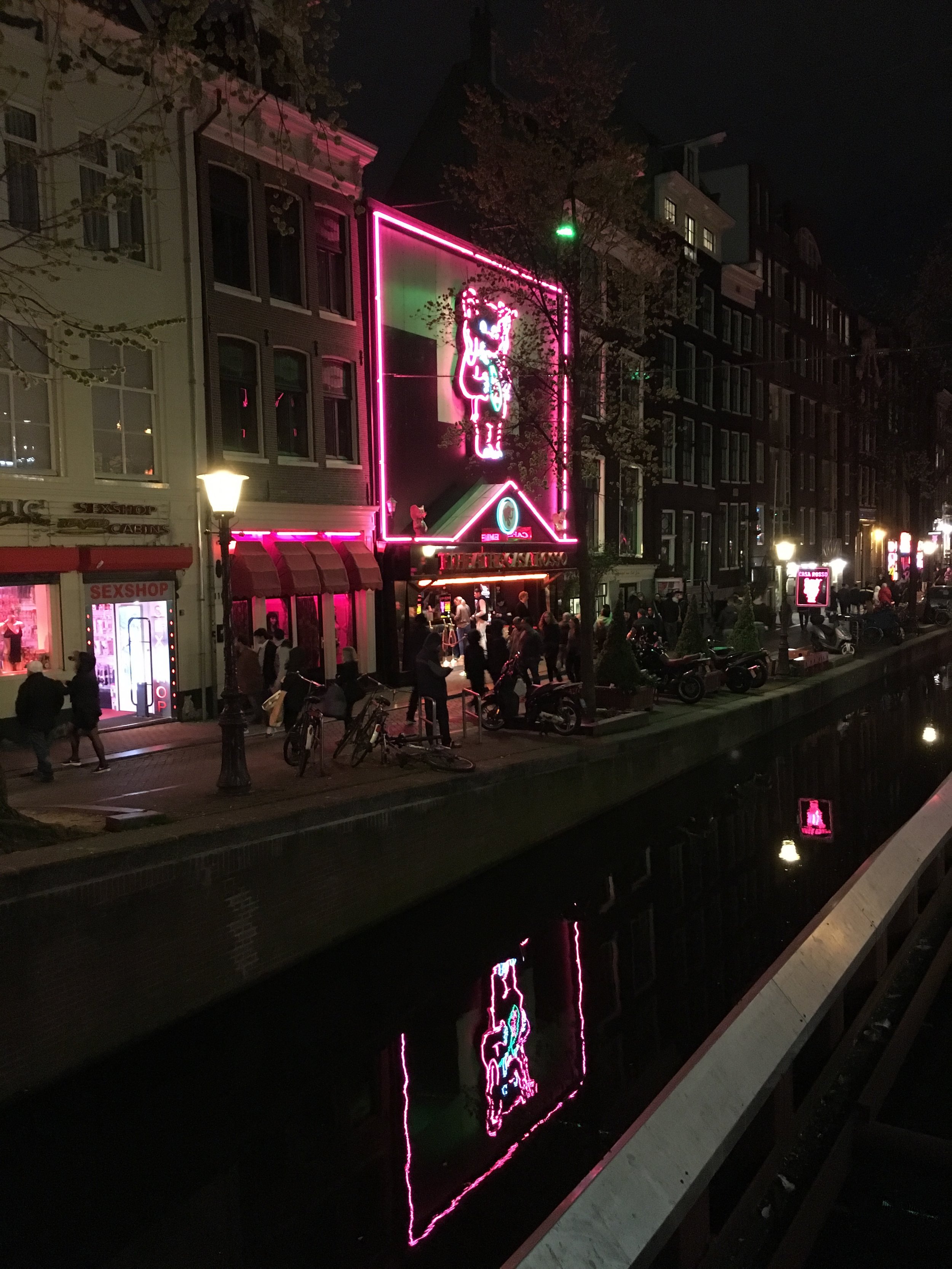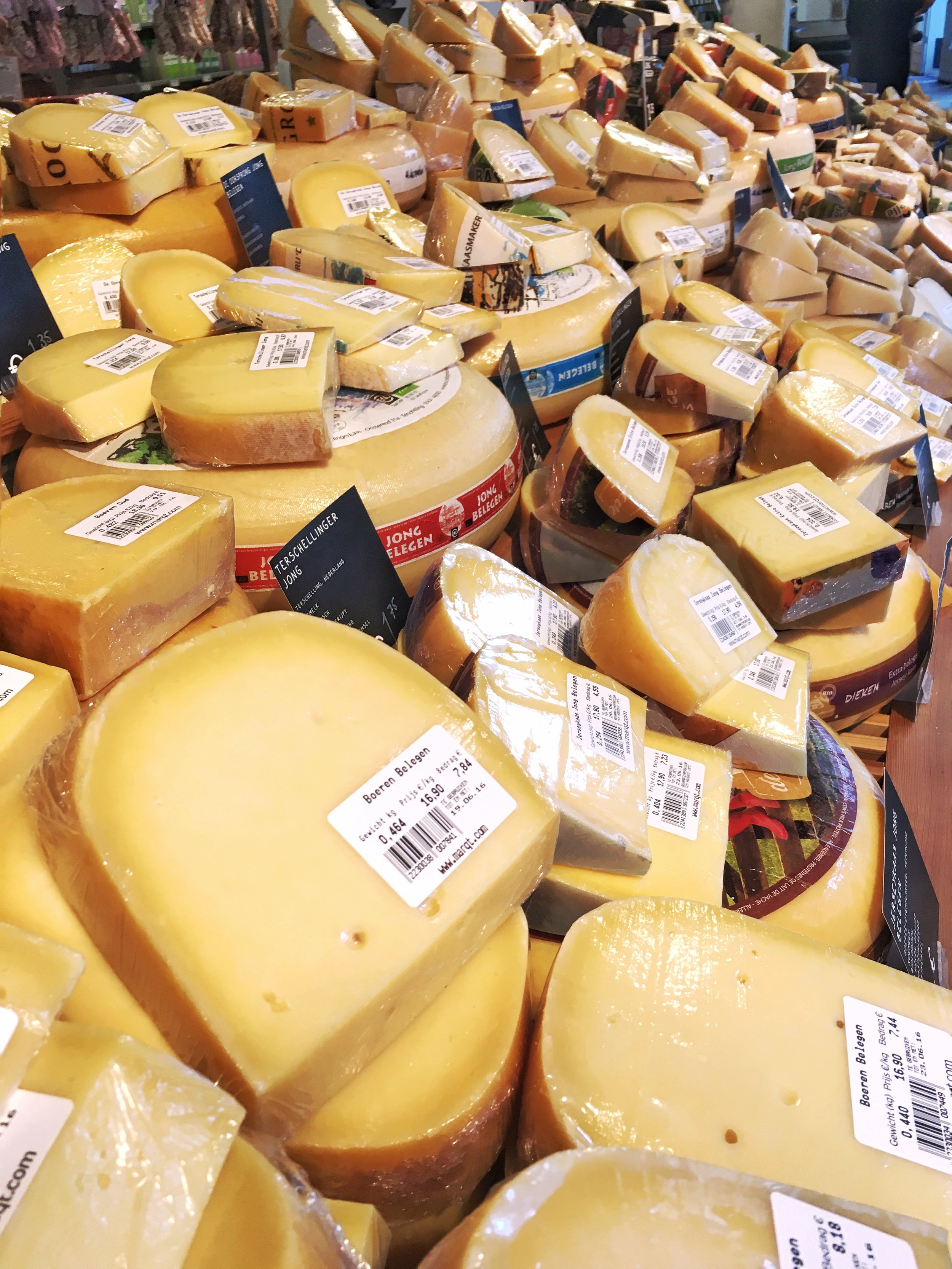When we sat down for coffee in Ljubljana with Alexander Ruiz, the owner of Crno Zrno, and told him about our trip through Northern Italy and Slovenia, he smiled and said “ah, so you’re doing a bit of what the Japanese call momiji-gari… wonderful”.
The word was new to me, but momiji-gari is a Japanese tradition dating back to the Nara period, and means quite literally, to appreciate the changing colors of the leaves. And yes, that’s exactly what we were doing - following the season as it shifted through the mountains, valleys, and coastlines, from alpine gardens to vineyards and the Adriatic Sea. But this trip wasn’t just about racing through in an effort to check off postcard views; it was about paying attention - to how tomatoes taste at the end of summer, how the air changes as you move south, and how much time, care and restraint are built into daily life here. From the slow food kitchens of Alto Adige to the orange wine producers of Soca valley, every stop offered new perspective and stimulated our senses in a totally new way.
If you’re looking for a 2 or so week road trip guide through Northern Italy and Slovenia to soak in everything from alpine vineyards to the Adriatic coast, you’ve come to the right place. If you have less time than 2 weeks, also great. Just pick the pieces that suit your tastes and make your own adventure. We wanted to be as comprehensive as possible to give you the ‘greatest hits’, but by no means do you have to hit it all.
ALTO ADIGE: Brixen, Bruneck, Bolzano
Brixen/Vals
Where to Stay: Haller Suites and/or Silena, your soulful hotel
Haller Suites & Restaurant in Bressanone is a family-run gem that captures the essence of Sudtirol hospitality in a (chest)nut shell. Perched among the vineyards overlooking the Eisack Valley, the property offers a harmonious blend of architecture, nature, and heart-infused service. The Haller family has created a space with deep connection to the landscape; their instagram handle really says it all @sleepinthevineyards - and that you do at Haller. Minimalist suites are framed by panoramic vineyard views, and everything from construction materials to the food found in their on-site restaurant is all locally-sourced. Every detail, from the sustainable building philosophy to the curated breakfast with regional products reflects their respect for both place and people.
Haller Suites views
Haller lobby
Haller vineyards
Guest sauna at Haller
Great design at Haller
Fig tree in Haller garden
At the heart of Haller Suites are Teresa and Levin, the passionate duo who make up the fabric of what Haller is today. Teresa oversees the guest experience with genuine care and creative flair, while her husband - the chef behind the acclaimed AO Restaurant - brings South Tyrolean ingredients to life with pizazz and creativity not often found. Together they’ve transformed their family legacy into a destination that you can’t help but form a personal connection to. Food tells a story and every moment feels like you are exactly where you are meant to be. Staying at Haller is so much more than just a casual stopover; it’s an immersion experience into the rhythm, flavor and family spirit of the region.
Haller vineyard
Haller outside courtyard
Haller vineyard
SILENA, your soulful hotel is a vacation dream filled with stillness and indulgence. Its design is deeply influenced by Japanese wabi-sabi philosphy with its natural textures, earthy tones, and yet quirky paper lighting, paper cranes, and funky accents all about. For being an adult-only hotel, they also throw in some kid-like fun to humor your inner child: an art room for creating/drawing/painting something memorable from your day, a candy and popcorn station, and a reading room full of large chairs you want to sink your butt into for hours.
Silena landscapes
Silena reading room
Silena dining room
The atmosphere, accordingly, is both alpine and Asian/modern, bringing together South Tyrolean roots with mindful design. The spa area is a world of its own - like walking into the doors of Narnia to another plane of existence. There’s a seemingly endless maze of pools, saunas and serene relaxation rooms (don’t say we didn’t warn you: it’s actually easy to get lost in there!). Each room is also plenty big for 2, with a king size bed and a separate reading room where one can curl up for hours reading a book whilst avoiding the elements. The wabi sabi continues throughout each suite and onto the balcony where one can sit in a swinging hammock and take in the valley views.
Silena spa
Hammock in Silena room
Silena spa
Silena lobby
Mornings begin with an incredible breakfast experience: a buffet made for kings with color and freshness paired with a la carte options that change seasonally. The homemade muesli and fresh squeezed carrot ginger juices alone are worth the trip. Then there are the small rituals that make SILENA so soulful, like the little wooden box each guest receives each day with a daily surprise; often a quote, or a small token, meant as a gentle reminder to be fully present. Evenings bring another kind of magic: a bartender with flair, shaking up cocktails throwing cups around like you’re at the circus. Dinner is included and features delicate but filling dishes of your choosing depending on your hunger level that evening.
Homemade pasta at Silena
Salmon at Silena
Divine dessert at Silena
Calamari at Silena
There’s also an extensive wine list that highlights both South Tyrolean and international bottles and a staff that is always kicking around for any extra indulgence you might need. Design, hospitality and soul blend seamlessly into something quietly unforgettable.
Where to Eat/Drink: AO Restaurant is part of Haller Restaurant in Alto Adige and is our top pick. With Teresa and Levin of Haller at the helm, they bring an obsessive attention to detail to everything from the garden to the glass. The experience feels very intentional but approachable with service and food that’s relaxed but exact, and a tasting menu that shifts with the season and the bounty of the region. Our dinner opened with tomatoes from their own garden topped with pecorino foam and basil oil - a small dish that captures their whole approach: precision, restraint, and produce with a twist. From there, radicchio with blue cheese, venison ragu cappelletti, and beef cheek with carrots three ways. Each plate was well-balanced and clean and paired perfectly with many new-to-us Alto Adige skin contact whites and reds, which was an adventure in and of itself. The beetroot sorbet with chocolate mousse for dessert absolutely blew us away, proof that even nutrient-dense root vegetables can make a perfect dessert.
Dining room at AO Restaurant
Large party dining at AO Restaurant
The wine pairings trace the route from Brixen down to Bolzano, featuring local producers like Roeck, Grawu, and various Lagrein (native to Alto Adige). The pairings don’t just complement the food, they explain the terroir - high acid, alpine whites, textured orange wines, and reds with just enough structure to remind you where you are.
Levin’s background shows in the precision of flavor and timing, but what stood out most to us is how deeply the food is tied to place. Vegetables come from their own type of “chaos” garden, meat from nearby farms, honey from local beekeepers. The cooking is elevated for sure, but also surprisingly grounded and grounding. Alpine ingredients are to be handled with humility and discipline, not ego, and Levin gets it exactly right.
Things To Do: Hike the Adolf Munkel Weg, an easy favorite for the Dolomites, with views of the Odle peaks that truly do not feel real. Stop at one of the mountain hut restaurants along the way (Geisleralm or Dusleralm - just check the hours if traveling in the fall) for ribs, a mountaineer platter of cheese, speck, and pickles and/or a cold beer / aperol spritz.
Odle peaks off the Adolf Munkel
Approaching a hut
Looking cool on Adolf Munkel
Meats and cheese at Geisleralm
Take the lift up to Seceda in Val Gardena for that classic Instagrammable ridgeline view; it’s worth every cliche photo you’ve seen of it. Enjoy a meal or a cocktail or maybe just a nap in one of the many cozy chairs at Baiti Sofie Hutte up top of the lift. After, spend an afternoon exploring Urtijëi (Ortisei) the nearby alpine town. It’s walkable, beautiful and full of small shops, cafes, and a humble but majestic rhythm that makes the whole valley special.
Classic Seceda view
Lunch at Baiti Sofie Hutte
Seceda trails for miles
Gorgeous views at Seceda
Bonus stop in the area: swing by Roeck wines. We first learned about them from our tasting menu at Haller Suites and were ecstatic to find that they were a quick drive away. They represent a newer generation of small alpine producers redefining what it means to make wine in the mountains. The estate focuses on minimal intervention and a deep respect for elevation, working steep slopes where the cool climate, rocky soils and sharp diurnal shifts give their wines tension and clarity. They’ve become known for their expressive whites - riesling, sylvaner, and muller-thurgau, all of which carry the precision of Germanic winemaking but with the texture and minerality that only comes from this part of Italy.
Roeck wine tasting
Steep slopes at Roeck
Outdoor patio at Roeck
Roeck wines
Interesting tidbits to know: This is a bilingual region with three cultures; Alto Adige (or Sudtirol in German) sits in Italy’s far north, bordering Austria. Most locals grow up speaking German and Italian and in some valleys, Ladin, a romanesque alpine language that predates both. Menus, road signs and even surnames often appear in all three languages. The region only became part of Italy after WWI, and much of its Austro-Hungarian heritage remains. It’s why you’ll find knodel (bread dumplings) next to tagliatelle on the same menu, and prosecco poured alongside reisling. The ultimate fusion of regions are seen expressed in all walks of life.
Despite it’s size, Alto Adige produces some of Italy’s best white and orange wines - pinot grigio, gewurtztraminer, and sylvaner thrive in the mountain sun and cool nights. It’s also one of Europe’s largest apple-growing regions, with over 7,000 producers across the Eisack and Adige valleys.
Brixen itself is one of Tyrol’s oldest towns, having been founded in 901AD, with nearly 1,100 years of uninterrupted settlement. The baroque cathedral and bishop’s palace still mark the historic center of town.
Brixen also sits at the heart of “keschtnweg,” or the Chestnut trail, a hiking route that winds through the hills between Brixen and Bolzano. Every autumn, the slopes are lined with ancient sweet chestnut trees, some hundreds of years old, growing alongside vineyards and apple orchards. Locals say the trees are as much a part of the landscape as the mountains themselves as they’ve been cultivated since medieval times, originally planted by monks. The harvest season is marked by torggelen, a South Tyrolean tradition where farmers and locals gather to roast chestnuts over open fires, drink to the novello (new year’s wine), and share platters of meats, cheeses, dumplings.
Bruneck
Where to Stay: Castel Maurn is unequivocably the best choice in the region and is a place we will return to time and time again. It sits quietly in the Puster Valley near Brunico. Originally built as a residence for local nobility, its stone walls impressively date back over a thousand years. The castle passed through several hands before falling into disrepair in the 20th century. In 2019, then current owner and South Tyrolean hotelier Walter and his family took on the project of meticulously restoring it - not as a museum piece, but as a livable contemporary retreat that respects the structure’s past.
Guest room at Castel Maurn
Blue hour at Castel Maurn
Fog rolling in at Castel Maurn
Foggy pool views at Castel Maurn
Breakfast in bed at Castel Maurn
Spacious rooms at Castel Maurn
After years of meticulous renovation, the property reopened its doors in 2021 as a small luxury stay blending medieval architecture (and absolutely stunning all original artwork adorning its walls) with modern design and hospitality conveniences. Original frescoes and vaulted ceilings remain, paired with natural materials and quiet lighting. Each of the 13 suites feels private and fit for a king - as they are around 4-5x bigger than your average hotel room, a huge plus for the weary traveler. Walter’s approach balances heritage and hospitality, trusting guests with an honor bar, inviting local chefs for intimate dinners, and keeping the castle’s atmosphere calm and unforced. You may even see one of the castle’s resident kitties wandering around, if you’re lucky.
Staying at Castel Maurn feels like awakening one’s inner child, fulfilling all of one’s fantasies to someday let their hair down and live in the most luxurious castle, hang out in the spa, and be served breakfast in bed every single morning. Divine!
Castel Maurn at night
Entrance to Castel Maurn
Spa day beds at Castel Maurn
Where to Eat/Drink: alpINN restaurant up the Kronplatz is fine dining at altitude, with creative dishes using local produce and herbs from the mountains paired with panoramic views. Many other exceptional michelin restaurants are in the vicinity as well including SanBrite and Cocun Cellar. We were also a huge fan of Pizzeria Hans in San Candido about 30 minutes away… great easy pastas and pizzas for dining in or taking out. Easy and delicious for post-hike days.
Things To Do: Explore the old town. Bruneck’s center is small but full of life - pastel facades, narrow cobblestone streets and cafes spilling onto the sidewalks. Stop by stadtgasse for boutiques, bakeries and aperitivo spots that feel local rather than touristy. Do not miss the famous Acherer Pastisserie Blumen, one of the best chocolate shops in Europe in our humble opinion!
Streets of Bruneck
Excellent pastries in Bruneck
Foliage in Bruneck
Cinnamon rolls at Brot Pane
Acherer chocolates
Visit Bruneck Castle + the Messner Mountain Museum up the Kronplatz. Created by the famous South Tyrolean mountaineer Reinhold Messner, the Messner Mountain museums are a collection of six sites across South Tyrol and Veneto, each exploring a different aspect of mountain culture. Instead of a single large museum, Messner designed them as a network, from medieval castles to remote peaks, meant to be experienced in the landscape itself. Each location combines art, history and storytelling around themes like rock, ice, faith, philosophy and exploration.
The museums include: MMM Firmian, MMM Juval, MMM Dolomites, MMM Ortles, MMM Ripa (Bruneck Castle), and MMM Corones (the newest, and arguably most striking).
MMM Corones up the Kronplatz is perched at 2,275m atop Plan de Corones and is the architectural centerpiece of the series of museums. Designed by Zaha Hadid, the museum is built directly into the mountain itself - concrete galleries that emerge from the rock like a glacier breaking through stone. Inside, it tells the story of modern mountaineering (no, not the assembly line on Everest kind): risk, courage, and the mindsets that shaped alpine climbing. Large windows open onto the Dolomites, turning the landscape into part of the exhibit, as one watches paragliders drift by outside its windows. The design mirrors Messner’s philosophy: that mountains aren’t just to be conquered, but understood.
MMM Corones
MMM Corones interior
Mountain art in MMM Corones
True words on placard at MMM Corones
MMM Corones architecture
Messner Mountain Museum
When you’re ready for alpine views and hikes, take a drive to the world famous Lago Di Braies. It is one of the most photographed lakes in the Dolomites (which unfortunately means there are often a lot of people there with the same photo aspirations, go early for sunrise to avoid that as much as possible). It is surrounded by steep limestone peaks, and the water shifts from deep emerald to turquoise depending on the light. You can rent an old wooden rowboat, walk the 3.5km trail around the lake or just sit with a coffee from the small cafe on the shore.
Rowboats on Lago di Braies
Lago di Braies
Boathouse on Lago di Braies
Go spend a day hiking and exploring around Tre Cime di Lavaredo (by far our favorite hike of the trip - it is STUNNING!), as they are the Dolomites’ most iconic silhouettes, with massive limestone towers rising straight out of alpine meadows. The loop trail around them starts from Rifugio Auronzo and takes about 3-4 hours, with ever-changing views the whole way around. Be sure to stop by Lago Misurina thereafter for some killer views!
Views en route up to Tre Cime
Happy campers up at Tre Cime
Views en route to Tre Cime
Lastly, take a hike up the gorgeous trail to Lake Sorapis which sits high in the Dolomites near Cortina d’Ampezzo. It’s a glacial lake famous for its unreal milky turquoise color, caused by suspended rock flour from surrounding peaks. The hike starts from Passo Tre Croci and takes about 4 hours roundtrip, climbing through forest trails and rocky switchbacks before opening up to the lake at 1,900m. There is a tiny bit of exposure, so if you’re traveling with a dog or a small child or just not a huge fan of that sort of thing, maybe pick something a bit more tame! Be aware as well that though larch season was in full swing in mid October, the lake was relatively dry and less brilliant blue as it may have been in say, early Spring… so time your visit accordingly!
Lake Sorapis surrounded in larches
Exposed trails en route to Lake Sorapis
Glacial blue at Lake Sorapis
Interesting tidbits to know: Bruneck was established in the 13th century by Prince-Bishop Bruno von Kirchberg - which is where Bruneck gets its name. The castle above town was his seat of power, and it still dominates the skyline today.
This is also known as the beer town of the Dolomites, as Forst beer is brewed just 30 minutes away in Merano. Bruncio also has its own scene - small local breweries and alpine-style bars where beer, speck and music anchor you well into the evenings.
Bruneck is another one of those towns that sits right in the middle of South Tyrol’s German and Italian speaking regions which is why you will hear both languages. Menus, signs, and even small talk naturally switch between the two (and sometimes Ladin in the nearby valleys).
Bolzano
Where to Stay: Theiner’s Garten is a family-run biodynamic hotel and orchard in South Tyrol, led by Ingo Theiner. Their family has farmed the land for three generations and their 7 hectare property produces over a dozen fruit varieties - mostly apples, alongside pears, plums and peaches, all certified Demeter, the highest international standard for biodynamic agriculture.
Room views at Theiners Garten
Room at Theiner’s
Steam room indulgence at Theiner’s
Pool at Theiner’s
The Theiner's Garten approach is rooted in the natural rhythm of the land: fertilizing with the traditional cow-horn compost mixture each spring, spraying mineral preparations in summer to strengthen the trees, and relying on hedgerows, bees, and even hedgehogs to maintain balance instead of chemicals. Their orchards are densely planted and vertically trained, a method that maximizes both sunlight and space in a region where microfarms dominate the valley.
Theiner’s apples
Speaking with Ingo and Nadia
Rows of fruit trees at Theiner’s Garten
Water comes from a strong local table fed by alpine snowmelt, and every part of the ecosystem is given careful consideration - from soil microbiome management to flower planting for pollinators. The result isn’t just healthier fruit but a circular, living farm that sustains itself. Beyond the orchards, the property includes an eco hotel designed entirely around sustainability: solar energy, natural materials (the dining room tables themselves are made out of apple wood!), and an organic kitchen that uses their own produce. It’s less of a resort and more of a working philosophy; proof that luxury and environmental integrity can exist in the same place.
Dinners at Theiner’s Garten reflect everything about how they run the farm - the kitchen works almost entirely from their own biodynamic principles and produce or that of nearby fellow Demeter-certified farms, so the menu shifts constantly with the season. What shows up on the plate is whatever’s ready in the orchards or gardens: apples, plums, root vegetables, herbs and mountain greens. You’ll see the same balance in the food as in the orchards: nothing wasted, everything cyclical. House-pressed juices, local natural wines, and the kind of bread/pastries that you just know someone was up early making. Meals at Theiner’s feel like being invited to a family dinner in the orchard: slow, grounded, and immersed in the land right outside your window.
Dessert at Theiner’s
Dinner with edible flowers from the Theiner’s Garten
Beautifully presented food at Theiner’s
Where to Eat/Drink: We highly suggest enjoying your meals at Theiner’s as they have food around nearly every hour of the day. But if you must expand beyond that, go to Merano and eat at Soulfood (a great recc from our friend Dominic at GRAWÜ wine!) or head to the exquisite Miil in Cermes.
Things To Do: Check out Baron Longo winery. It’s a small, family-run producer that focuses on low-intervention, organically farmed wines made with native grapes like rebula, merlot and cab franc. The philosophy is familiar to us: minimal use of additives, fermentation with native yeasts and long aging to let the wine express the distinct marl and limestone soils of the area. Tastings here feel more conversational and less presentation, which makes it a lovely place to visit to learn and soak in knowledge.
Go to GRAWÜ and enjoy a tasting with Dominic. This was our favorite wine experience in all of Italy/Slovenia, so it’s a must! GRAWÜ is the project of Dominic Grauvogl and his wife Natalie, founded in 2013 in Southern South Tyrol. The name GRAWÜ comes from combining their surnames - Grauvogl and Wulfing - a nod to partnership, both personal and creative.
Leaving GRAWU with a big smile!
GRAWU wines
Enjoying a red at GRAWU tasting
GRAWU cellar
All smiles with Dominc of GRAWU!
Dominic started his career as a somm and winemaker working in top restaurants and vineyards across Europe before deciding to return to the mountains to make wine on his own terms, after being struck with inspiration after one particular blind tasting. His philosophy centers on place, patience, and a dogged determination to create the type of wine HE believes to be the truest expression of the land, not just what he’s told by others his wine should be. Minimal intervention, spontaneous fermentation and no additives other than a touch of sulfur when necessary. Everything is grown organically, with a particular focus on expressing altitude and soil rather than perfect uniformity.
Dominic aspires to make wines that evoke emotion, and that he does with wild success. The wines themselves are textural and alive - high acid, structured, and unapologetically alpine. He’s known for his pinot grigio, which spends five days on skins and tastes like grapefruit and mountain air, his gewurtztraminer which is intense but dry, and his gruner veltliner, one of the few made in Italy, all tension and minerality. For Dominic, wine isn’t a product. It’s a long conversation between vineyard and cellar. He talks about time as an ingredient - so much so that perhaps it should be on the bottle alongside “grapes”. Each bottle feels like it was made by someone who pauses to listen first - a true sign of wisdom - then decides what to do.
We also recommend swinging by Thomas Niedermayr to catch more wines in the same thread as GRAWU. They were closed on our visit, but we’ve heard amazing things so will have to catch it on our next trip.
We also greatly enjoyed swinging by Reyter winery. We probably should have made an appointment, but we didn’t, and they welcomed us with open arms when we knocked on their door late on our way to dinner one afternoon. Family-owned and run by Andreas and Katrin Reyter, they focus on natural winemaking with minimal intervention. Andreas talks about “happy mistakes” and adaptation, letting nature dictate the rhythm of production. When the cellar proved to be too humid, he added a stone wall to improve oxygen flow; when corks failed, he switched to glass closures. Everything is treated as a chance to refine, not control and the result is interesting wine that is alive, expressive and distinctly alpine in its clarity. The lineup changes with the vintage but the standouts are often their rose (a not-so-rose, kissed by skin contact), a structured pinot noir, and a mountain white blend that perfectly captures the minerality of the Eisack valley. The family’s excitement for wine is infectious and on that alone, this is a worthy stop.
Foliage at Reyter
Reyter vines with a view
Gorgeous colors in Reyter wines
Reyter tasting lineup
Reyter cellar with newly built stone wall
Reyter tasting
One last great spot we’d recommend stopping into a bit further south is Azienda Agricola Foradori. Located in the narrow Campo Rotaliano Valley near Mezzolombardo, and surrounded by the Dolomites, Foradori reshaped what Trentino - and mountain wine itself - could mean. When she took over her family’s estate in the 1980’s, Trentino was dominated by cooperatives and industrial-scale production, focused on efficiency and yield. She chose another path. Over decades, she brought back the native Teroldego grape, converted her vineyards to biodynamic farming, and reintroduced amphora aging long before its recent resurgence. Fermentation in clay, wild yeasts, minimal sulfur and an unwavering respect for soil health became her language. Her quiet defiance has made her one of Europe’s most influential voices in natural wine.
Foradori vineyards
Garlic at Foradori
Foradori tasting room
Foradori tasting room
Her influence stretches far beyond the Dolomites - even to Beckham Estate, who we visited earlier this year in Oregon’s Willamette Valley much closer to home. Their founders, Andrew and Annedria Beckham, craft their own clay amphorae inspired by Foradori’s methods. She’s become a mentor and friend to them, part of a quiet exchange between two continents built not on marketing, but on shared values: purity, patience, and trust in the land. Foradori’s children continue the work she began with the same devotion. Their wines - Granato, Morei and Sgarzon - are structured and shaped by alpine light and the gravelly soils of the Rotalian plain. Foradori serves as the alpine counterpart to the likes of Radikon and Gravner.
Interesting tidbits to know: Bolzano sits in a valley surrounded by vineyards and limestone peaks and is the official entrance to the Dolomites. It’s one of the greenest cities in Italy and yet well connected, so you can hike, drink wine, and catch a modern art show all in one afternoon; a true melting pot of culture. Around 70% of locals speak German as their first language, 25% Italian, and a small percentage speak Ladin.
It’s also home to Otzi, the iceman, one of Europe’s most important archeological finds, a 5,300 year old glacier mummy discovered in the nearby Otztal Alps. Otzi is preserved in the South Tyrol Museum of Archaeology and worth a visit as he is Bolzano’s most famous resident.
FRIULI/ GORSIKA BRDA
Where to Stay: La Subida, Klinec Medana, or Peterc Vineyard Estate. We’ve stayed at La Subida in the past which you can read about here, and have heard great things about staying at both Klinec Medana and Peterc. You also have the option to just pass through Gorsika Brda en route to other places. Great news is that everything is so close by that you can be in a bigger city in less than an hour.
Where to Eat/Drink: Edi Simcic, Klinec Medana, La Subida, Osteria Aglia Antenati, Azienda Agricola Terpin Franco, Radikon, Gravner, Nicolas Juretic, Cormons
Our first stop was at Radikon, which was unashamedly the stop we were most coveting, having read about their revolutionary ways of making wine in the book Amber Revolution. Stepping onto their property predictably felt like stepping into a living piece of wine history. Their cellar in Oslavia sits on land that has seen centuries of upheaval - from the Isonzo front in WWI, where the hills ran red with blood, to the Yugoslav border years when the region was literally divided into two. Yet through all of the drama, the vines remained.
When Stanko Radikon took over the family estate in the 1970’s, he saw a system that had traded patience for production: wines built for consistency, not character. In the 1990’s, he and his friend Josko Gravner quietly started a revolution (thus the book title): fermenting white grapes with their skins again, rejecting additives and filtration, and trusting time instead of control. The world thought they were out of their minds at the time - until it realized they were right.
Today, Sasa Radikon and his sister Ivana carry that vision forward, blending tradition with a humble evolution. The philosophy remains the same: long macerations, years in large oak barriques, and wines that speak more of soil and sunlight than of technique. They’ve expanded into the Slovenian side of the hills, experimenting with altitude and soil variation while holding onto the patience that defines the estate. Every detail matters here from the hand-trimmed vines and grass left high to protect biodiversity, to the bees that once saved hail-damaged crop by sealing broken grapes with natural wax. Radikon’s wines aren’t chasing trends, they just simply *are* the foundation of one. What began as an act of resistance - to chemicals, speed, uniformity - has become a blueprint for authenticity in modern winemaking.
Rebula at Radikon
Aw at vintage wines being saved at Radikon
Radikon tasting room
Radikon tasting room with a view on vineyards
Upon our friend Dominic’s suggestion, we popped by Nikolas Juretic next. Nikolas represents the new generation reshaping what “natural wine” means. He’s young, curious, and unburdened by dogma. He’s less interested in rules and more in observing what the fruit tells him it wants to become. His cellar is small, functional, and open to improvisation year over year. While producers like Radikon and Gravner spent decades proving that time could be the most powerful ingredient, Nikolas reminds you that immediacy has its place too. His wines are fresh, alive, and spontaneous - proof that authenticity doesn’t necessarily require age, just intention.
Juretic works with small parcels across Brda, handling each batch differently depending on what the season gives him. Skin contact usually lasts a week or two, enough to give texture and grip without overpowering the fruit. His reds are aged only a year or two, his whites and oranges left to find their own rhythm. The result is a wine that feels… strangely human? Flexible, evolving, a little unpredictable. He talks about fermentation like it’s an experiment, not a ritual, and about how nature will usually correct you if you let it. Compared to Radikon’s slow monumentality, Nikolas’ work feels more present tense. It’s curious, full of energy, and communicates with a quiet confidence that the future of Brda winemaking doesn’t need to be loud, just honest.
Juretic vineyards
Nikolas Juretic and family
Juretic tasting room views
Nikolas shares wines from the barrel
Lastly, we stopped by Edi Simcic for a few hour tasting and made quick friends with our hostess and fellow tasters. Edi Simcic is one of the names that helped put Goriska Brda on the global wine map. Founded in the early 1990’s, the estate grew out of Slovenia’s post-Yugoslav shift - a time when winemakers were rediscovering both freedom and their new identity. Edi began experimenting with barrel-aged whites when most of the region was still chasing volume, not quality. His approach was bold for his time (can you tell we are a big fan of the pioneering type?); extended macerations, long aging in oak, and a deep respect for the character of rebula, chardonnay and sav blanc grown on the region’s ponka soils. These wines felt structured, serious, built to last, bridging the finesse of Burgundy with the soulful character of the Adriatic.
Today, Edi’s son Alek carries on the work, continuously refining without diluting the original message. Their cellar in Vipolze hums with modern equipment and old world patience. While many of their peers on both sides of the border turned towards the radical minimalism of orange wine, the Simcic family has continued to stay focused on balance in their wines. Their “opus di” and “kolos” bottlings are benchmarks for Slovenian whites. In a region defined these days by experimentation, Edi Simcic represents continuity and proof that passion when guided by respect for land and time can coexist.
Edi Simcic courtyard
Edi Simcic tasting
Edi Simcic vineyard
Things to Do: The main attraction in this area is most certainly wine country, so we’d recommend focusing on that whilst in the region. But walk around Cormons, visit the Gonjace Lookout tower, pop into Smartno village, go see the Dobrovo Castle, and also keep your eye out for olive oil tastings. Olive oils here rival anything from Tuscany, and you can find local mills that do tastings with a full spread of cured meats, cheese, etc.
Bonus suggestion: if you are in the area in mid to late October as we were, we very highly recommend stopping by the VNDIMA annual natural wine festival, typically held at Klinec Medana. The whole region slows down and comes together and it’s an incredible opportunity to try all of the big name wines in one singular place. Vndima feels like you’ve been invited into the home of every single winemaker you ever admired, and they give you a peek behind the scenes at themselves, their stories, and of course, their wines. The Klinec family opens their cellar and terrace for a weekend that feels half festival, half reunion. Winemakers, friends, locals, and a few brave tourists like ourselves spill into the multiple courtyards, music plays until late, and bottles move from table to glass faster than anyone can keep track.
The name Vndima means “harvest” and that’s exactly what is being celebrated - the end of months of hard work and the start of something new in the cellar. The setting truly makes it special - views stretching out over the Goriska Brda hills, the sun setting behind the vineyards as a backdrop to your pinkish wine Instagram photo, and the kind of atmosphere that only happens when people who live by the rhythm of the land come together to celebrate it. An absolutely timeless, unbeatable experience!
Kombucha room at VNDIMA
Klinec courtyard
Tastings at Klinec Medana
Winemaker 1:1 at VNDIMA 2025
SLOVENIA: Izola, Kranjska Gora & Ljubljana
Adriatic Coast - Izola/Piran
Piran town center
Piran harbor
Outdoor dining in Piran
Where to Stay: DeGrassi Boutique Garni Hotel in Izola is one of the rare places that really reminds you what hospitality is meant to be. The rooms are modern and quiet, complete with your own jacuzzi and sauna room (!) but what sets it apart is its people. The owners and staff treat you less like guests and more like friends passing through their hometown. Upon checking in, they gave us the full lay of the land: where to park, where to eat in town and in nearby town of Piran, which wine bars and restaurants were worth it, and how to navigate the coastal roads like a local. This level of care is rare. In a region where there are certainly a plethora of properties to choose from, Degrassi stands out precisely because it is small, human, and personal.
Our first night set the tone for the stay. Live music spilled through the restaurant and the courtyard, with locals and guests mingling over glasses of wine, and a relaxed open energy prevalent. It made it hard for us to call it a night, as we walked through the lobby carrying gelato and smiling at all of the enjoyment. Mornings were just as good: a proper breakfast with still-warm local croissants, fresh fruit, and made-to-order omelets.
Courtyard of DeGrassi Boutique Hotel
Dining room of DeGrassi
In-room sauna and daybed at DeGrassi
Entrance to DeGrassi
Where to Eat/Drink: Fortunately, our concierge/all staff at DeGrassi were extremely helpful with finding local favorites (worth booking to stay there on that alone!) and tipped us off to a few excellent spots. Hotel Marina, Rostelin, Kantina Robi Tomsic, Srebrna Vilica, Stara Gostilna Vecchia Osteria, Pri Mari, Hisa Torkla, Mazioli Wine Bar
Hotel Marina octopus
Hotel Marina terrace
Scallops at Hotel Marina
Freshly prepared fish at Hotel Marina
The absolute treat of a meal for us though was in Piran at Rostelin. Rostelin is a small elegant restaurant in Piran that focuses on fresh, house-made pasta and local seafood. It is modern in style but still deeply tied to its Adriatic seafood roots - dishes like black cuttlefish tagliolini, truffle tartare, and simple clams with white wine and garlic come out looking effortless but were assuredly some of the best flavors we enjoyed all trip.
Cuttlefish pasta with clams at Rostelin
Rostelin store
Scallop and truffles at Rostelin
Things to Do: Wander Izola’s old town. Explore the cobblestone streets and coastal breezes of Piran. Visit the Lisjak olive oil farm. Go to Zaro wines or Bric wines overlooking the town of Izola. Swim and sit in the sun at Fornace beach. Ride e-bikes along the Parenzana trail, the old railway turned coastal path.
Lisjak olives
Terrace at Lisjak
Lisjak olive oil farm
Local persimmons
Lisjak olive trees
Izola coast views
Piran is built on a narrow peninsula that juts into the Adriatic. The town folds into itself with stone lanes twisting between faded Venetian facades, laundry strung between windows, and the sound of church bells carrying on the sea breeze. Walking through, it slowly reveals itself to you, from the bright expanse of Tartini square where locals sip espresso under pastel buildings, up towards St George’s church and its bell tower that watches over the entire coastline. From there, you can see Croatia to the south, Italy to the North, and the terracotta rooftops below glowing in the late light. Descending through alleyways, you catch glimpses of turquoise water at the end of each street and may accidentally find yourself wandering into the harbor alongside fishermen untangling their nets. It is a wondrous place to just get lost… to be found. Or something like that.
Rostelin
Walking Piran streets
Piran terraces
Rostelin
Setting up for Pier Izola, a local event to highlight businesses
Adriatic cobblestone streets
Interesting tidbits to know: Izola means island in Italian, and rightfully so as it was once a small island off the coast that was connected to the mainland in the early 19th century when the channel separating it was filled in by the Austrians. The town’s fishing heritage runs deep; it was one of the major ports supplying Venice with fish and olive oil, and many of its stone houses were built by seafaring families.
During the Austro-Hungarian empire, Izola was known for its vino izolanum, a local white wine prized by traders along the Adriatic. The tradition lives on through small coastal producers and the nearby Zaro winery. Speaking of wines, the Manzioli palace, where the Manzioli wine bar now operates, dates back to the 16th century and is one of the best preserved examples of Venetian Gothic architecture in Slovenia.
Piran is often called “little Venice” as it was under Venetian rule for more than 500 years, and you can still see the winged lion of St. Mark carved into its city gates. The town’s most famous resident was Giuseppe Tartini, an 18th century violinist and composer. Tartini Square, the heart of Piran, was built on what used to be the inner harbor. Piran itself is today pedestrian-only. Cars are banned and even deliveries are done on small electric carts. The result is a rare kind of quiet calm for a coastal town.
Salt from nearby Secovlje salt pans, produced using traditional methods dating back to the 13th century, was once one of the main currencies of the region. They aptly called it “white gold” and it financed much of Venetian Piran.
Kranjska Gora/Kobarid
Where to Stay: Nebesa Chalets or Hisa Franko
Nebesa means “heaven” in Slovenian and it’s not hard to see why its owners would have named this property accordingly. The Nebesa Chalets sit high above the Soca Valley near Livek, and boast panoramic views of the Julian Alps and the flowing emerald river below. It was founded by Alenka and Drago Komel, who envisioned a place that embodied calm and simplicity - a retreat built around silence, space, and a connection to nature. Instead of a traditional hotel, they designed four glass and wood chalets that blend into the mountainside, letting the landscape take center stage.
Today, their daughter Maja and her husband Samo Kanellopulos carry the torch and the vision forward into the future. They’ve kept everything intentional - minimalist, quiet, and relaxing. Mornings begin with a spread of still-warm pastries, yogurt, fruit, all arranged in a dining space that feels like a home kitchen. Guests can help themselves throughout the day to a tucked-away room stocked with local Tolmin cheeses, cured meats, olives, and wines from Goriska Brda - everything on the honor system. A small wellness area offers a Finnish sauna, infrared room, and a panoramic relaxation space where the mountains fill every window. In the evenings, the light shifts to pink over the valley and you can walk barefoot out to the terrace with a glass of Rebula or Pinot Gris from nearby producers like Klinec or Edi Simcic.
Hisa Franko
Nebesa
Nebesa entrance
Nebesa perched above valley
Though many come to Nebesa simply to be still, it’s also perfectly placed for year round exploration of the region. Kobarid, a short drive away, is rich in WWI history and home to the Kobarid Museum, Chefs Table Michelin restaurant Hisa Franko, and the impossibly turquoise Soca River, often called the most beautiful river in Europe. Nearby, hiking trails lead to waterfalls, alpine meadows, and the old frontline paths that cross into Italy. But the real draw of Nebesa happens when you come back to your chalet each night: the quiet hum of the sauna, the stirring of the nearby goats, the table laid with wine and speck, and the feeling that high above the valley, time has finally slowed down enough for you to breathe in and appreciate the fresh alpine air.
Nebesa chalets
Nebesa spa
Nebesa goats
Nebesa chalet
Where to Eat/Drink: Hisa Franko is by far the most well-known in the region, as it is Ana Ros’ flagship restaurant (World’s 50 Best, 3 Michelin stars) and is the heart of Kobarid’s food scene. Set in her family home, it’s a boundary-pushing expression of the Soca Valley’s wild abundance - foraged herbs, alpine trout, local butter, all reimagined through Ana’s intuitive, deeply personal cooking. A true once-in-a-lifetime type of meal - or should I say, *experience*. I visited years ago before all the Michelin stars and can attest that it is worth every penny.
That said, Hisa Polonka, just down the road, is a casual tavern run by Ana and her partner Valter Kramar, and is much more approachable. It’s where locals go for craft beer, roasted pork, and the legendary frika (a crispy potato-and-cheese dish you’ll crave long after leaving). They pour natural wines and their own house brews and the energy is pure, easy Slovenian hospitality.
Hisa Polonka interiors
Hisa Polonka
Hisa Polonka gnocchi and english beef
Drink Slowine, run by sommelier Alen Audic is another excellent choice. This cozy natural wine bar in Kobarid is an essential stop for anyone exploring the region’s orange wine scene. Expect an ever-changing list of bottles from Gorsika Brda, Friuli and the Soca valley. It’s relaxed, communal, and you’ll probably walk out with drool down your shirt like we did.
Drink Slowine entrance
Drink Slowine
Drink Slowine selection
Things To Do: Hike Slap Kozjak, Explore the Soca Gorge, visit the Kobarid Museum documenting the Isonzo Front during WWII, walk the Kobarid Historical trail, Mangart Pass, explore the Tolmin Gorge, drive over Vrsic pass, hike to Mount Kolovrat ridge, lined with restored WWII bunkers.
Soca Gorge
Kayakers on the Soca
Slap Kozjak
Interesting tidbits to know: The story of Kobarid begins in war before it turns to peace. Known to Italians as Caporetto, this quiet valley town became infamous during the 12th battle of Isonzo in 1917 - one of the decisive moments of the first world war. The battle was so significant that “Caporetto” entered the Italian language as a synonym for total defeat. Ernest Hemingway served nearby as an ambulance driver and later immortalized the region’s mix of beauty and brutality in a Farewell to Arms. Today, the same ridgelines once carved by artillery are covered in beech forest, and the town’s Kobarid Museum stands as one of Europe’s best small war museums.
The bora wind, which rushes down from the Karst plateau is both feared and revered. It can reach hurricane forces, flatten vines, and clear the skies in a matter of hours. Winemakers around Goriska Brda and Friuli plan their harvests around it, calling it nature’s broom - destructive but at times cleansing.
Kobarid and Tolmin are famous for tolminc, a semi-hard mountain cheese that’s been made the same way for centuries. Many families also keep bees - not just for honey, but as part of biodynamic farming practice. Food serves as a major source of resistance in the region. After the wars, the region’s identity was nearly erased by shifting borders and occupations - Italian, Austro-Hungarian, Yugoslav. The revival of local food traditions (cheeses, cured meats, herbal liquers) became a quiet act of cultural preservation. Today’s slow food and natural wine movement here is in many ways a continuation of that.
Running through it all is the Soca River, the valley’s soul and it’s most famous geographical image. It’s exquisite turquoise color comes from glacial minerals suspended in the water, earning it the nickname of the emerald river. Over the years, it inspired painters, poets and national pride - with Simon Gregorcic most famously writing his poem “To The Soca” in Kobarid in the 19th century. It celebrated the river’s beauty long before the war turned it into a frontline:
you are splendid, daughter of the heights,
you are graceful in your natural beauty;
clear you flow in your purity,
so pure and holy, Soca!
After WWI, the poem became all the more poignant; its final lines mourning the blood that would one day stain the river’s banks was a prophecy. Gregorcic’s words are still taught to every Slovene student, and locals can quote it by heart.
Ljubljana
Ljubljana in October
Ljubljana architecture
Walking the streets of Ljubljana
Where to Stay: AS Hotel Ljubljana is a sleek, design-forward boutique hotel directly in Ljubljana’s vibrant city center. It blends a midcentury-like vibe and contemporary elegance with the city’s relaxed, creative and bustling energy. Housed within a modern architectural gem, it offers spacious, posh, minimalist rooms with high-end finishes, and curated local artwork through the hallways. The attention to detail and class makes even casual corners and ceilings resemble an art gallery. Notably, there are three restaurants on site, including Ana Ros’ (who we love loudly!) more approachable Jaz restaurant. AS restaurant is also on site and known for its Mediterranean-inspired cuisine and excellent wine list. With the central location just a short walk from the Old Town, Tivoli Park, and the riverfront cafes, AS Hotel Ljubljana is a perfect base for appreciative travelers seeking a mix of urban sophistication, quiet, and local charm. Bonus if you’re in town during mid-October as we were, as we also had front row seats to the Ljubljana marathon and enjoyed sipping coffee on our terrace as the runners scampered to the start and hobbled away from the finish line.
AS Boutique Hotel Ljubljana
AS Hotel Lobby
AS Hotel Ljubljana entrance off main streets
AS Hotel lobby
AS Hotel luxury suite
AS Hotel terrace views in the fall
Where to Eat/Drink: Tabar was by far our favorite spot for dinner. It embodies what modern Slovenian dining feels like in 2025: local ingredients, bold techniques, and a lack of pretense. Its chef trained at Noma and in CPH’s culinary scene and it shows in the inventive small plates.
Tabar tasting menu
Tabar tasting menu
Tabar tasting menu
Tabar tasting menu
We also loved trying the many natural wines at both Kletvica and Supernatural naked food & wine. Kletvica is tucked into a quiet side street beneath Castle Hill and feels like a subterranean salon for Ljubljana’s growing natural wine scene. Its shelves are lined with bottles from Slovenia’s most compelling producers - Radikon, Burja, Simcic, Movia, Klinec, alongside smaller, lesser-known winemakers pouring by the glass. It’s a great place to go for discovery. Supernatural on the other hand is different but shares the same spirit. It’s a brighter, looser space where Ljubljana’s creative crowds tend to gather. The wine list leans biodynamic and the food is delicious and unfussy.
Supernatural wine bar
Supernatural interior
Supernatural gorgeous natural wines
Tabar interior
Scrumptious lunches, orange wines and desserts were lovingly consumed at Gostilna Vida. They focus on local ingredients and seasonal menus and keep it casual and approachable. Locals sit in the alleyway out front sipping on Hugo spritzes and welcoming you in with their delight. Right next door, the best Colombian coffee was enjoyed every day at Crno Zrno.
Coffee at CRNO VRNO
Desserts at Vigo
Excellent bakeries for fresh bread
Things To Do: Wander the Old Town. Visit the Ljubljana castle. Check out the Roman wall at Mirje. Explore Plecnik’s Ljubljana. Talk a long meander through Tivoli Park. Visit the Museum of Contemporary Art. Hunt down and taste roasted chestnuts (or kostanj in Slovenian) in the fall, which are a huge part of Ljubljana’s rhythm in October.
Roman wall at Mirje
Walking into town from Ljubljana Castle
Fallen chestnuts in Tivoli
Interesting tidbits to know: No one person influenced Ljubljana more than Joze Plecnik, the architect who quite literally rebuilt the city after WWI. He studied under Otto Wagner in Vienna and worked briefly in Prague, but returned home with the ambition to give Ljubljana the dignity of a true European capital, even though Slovenia was then part of the new Yugoslavia. His design language was classical but deeply personal: he used columns, bridges and proportions in his own signature ways. Every bench, balustrade and window was chosen with intention. People often call Ljubljana “Plecnik’s city” and they aren’t exaggerating.
In 2016, Ljubljana was named Europe’s green capital. The city center is almost entirely pedestrian, the riverfront is lined with trees and bike lanes, and there’s a protected park (Tivoli!) that stretches straight into forested hills. All within the city limits! Cafes spill onto cobblestones, locals cycle past with market produce, and it just feels like a place that is so conducive to living.
For centuries, chestnut trees grew wild across the hills of central and western Slovenia. Before potatoes arrived from the Americas, chestnuts were a rural staple, a source of nutrition that could be foraged, stored and shared. Roasted, boiled, or milled into flour, they sustained families through long winters and were often called the “bread of the poor.” In Ljubljana, the tradition turned into something more beautiful and communal today: every fall, the whole city smells faintly of roasted chestnuts. Street vendors set up metal drums along the river, paper cones stacked high. The sound of shells cracking, the smell of smoke in the air… it’s the most nostalgic scent of Slovenia’ capital. It’s about tradition now, less about the hunger it used to signify.
Ljubljana means “beloved” and I think that’s just a perfect way to wrap up this blog. This absolutely stunning city is small enough to walk across in half an hour and yet layered with history - roman ruins underneath medieval streets, Baroque churches beside 20th century modernism. It’s quiet, creative, and slightly detached from the rush of Europe around it. Charm at its finest!
